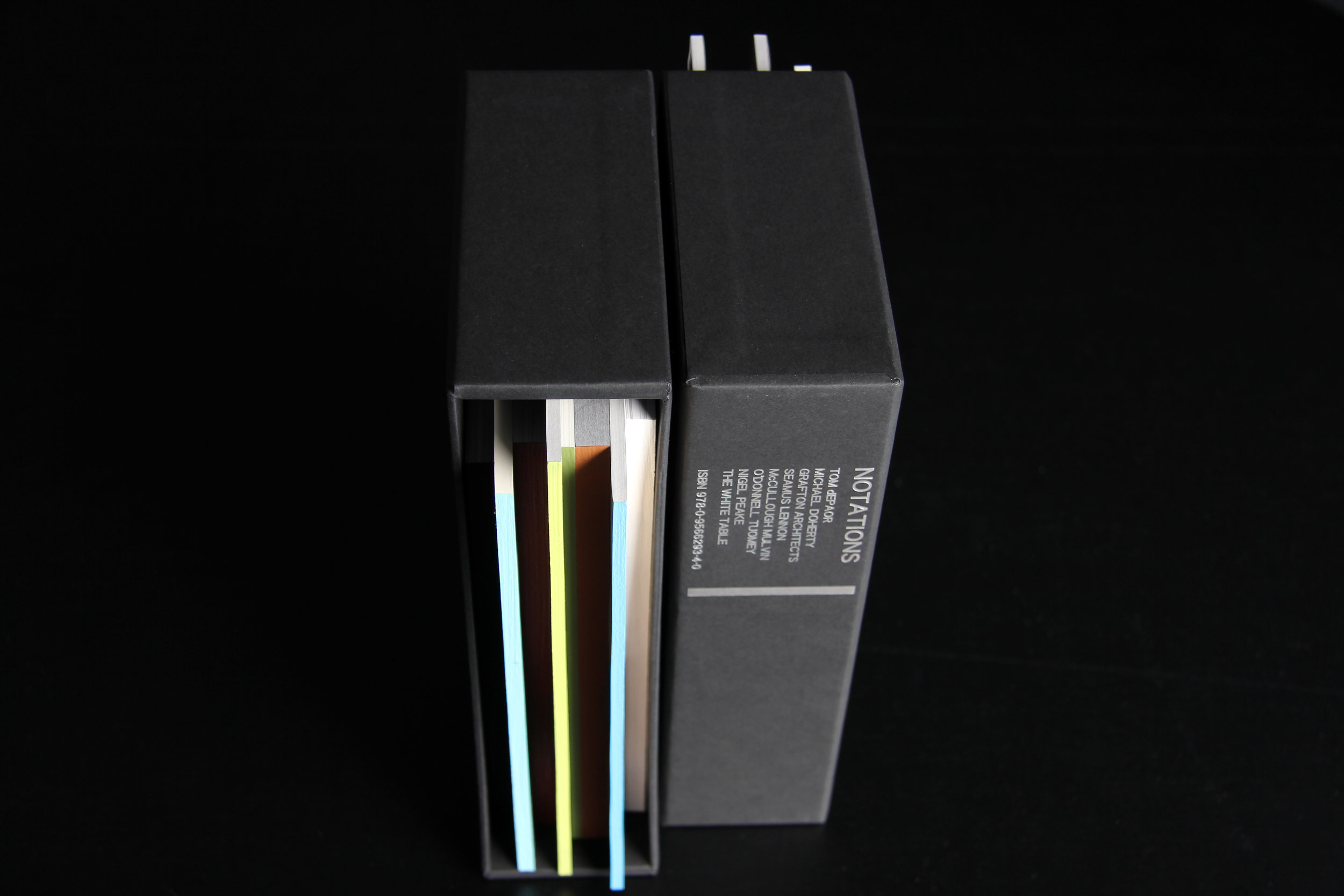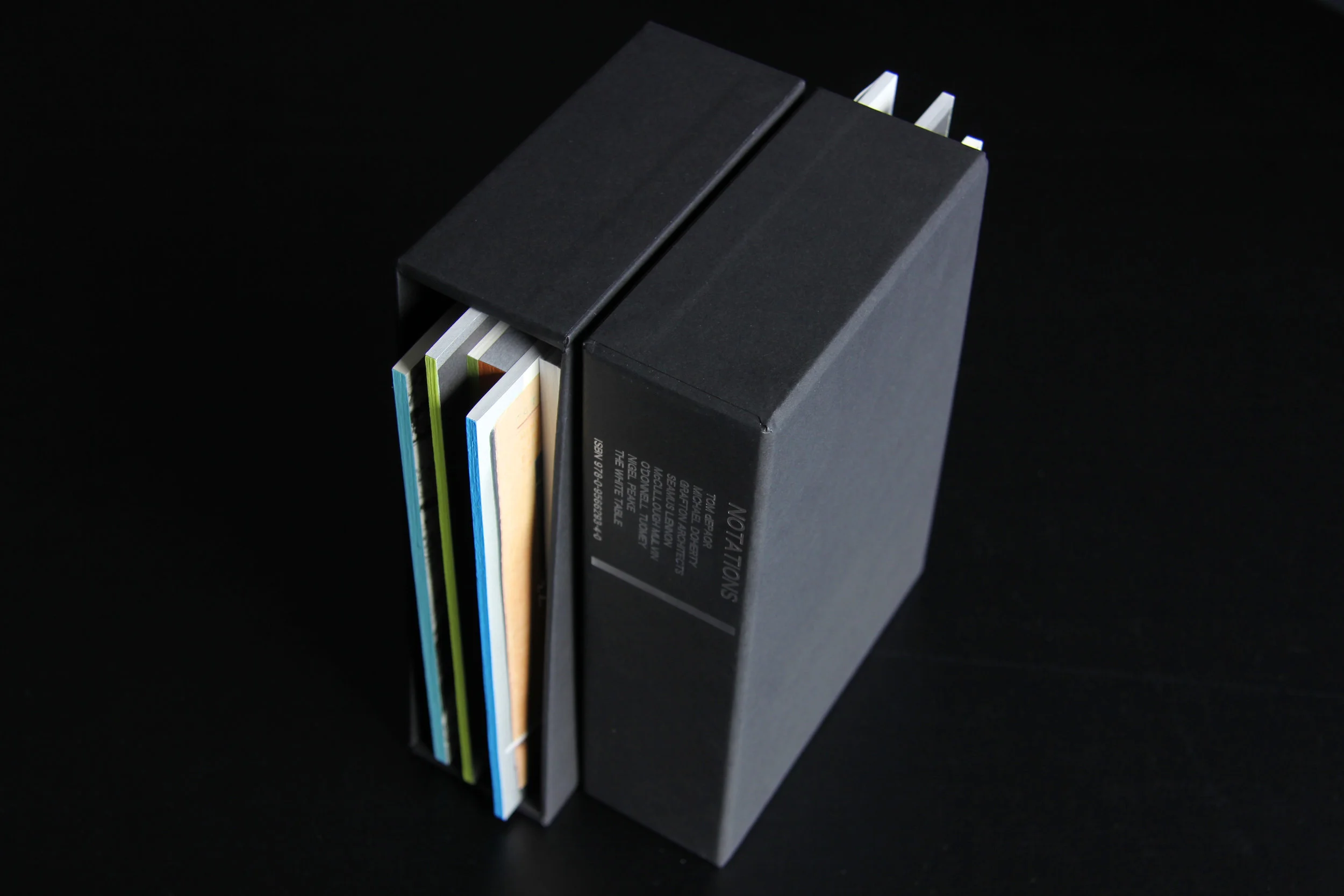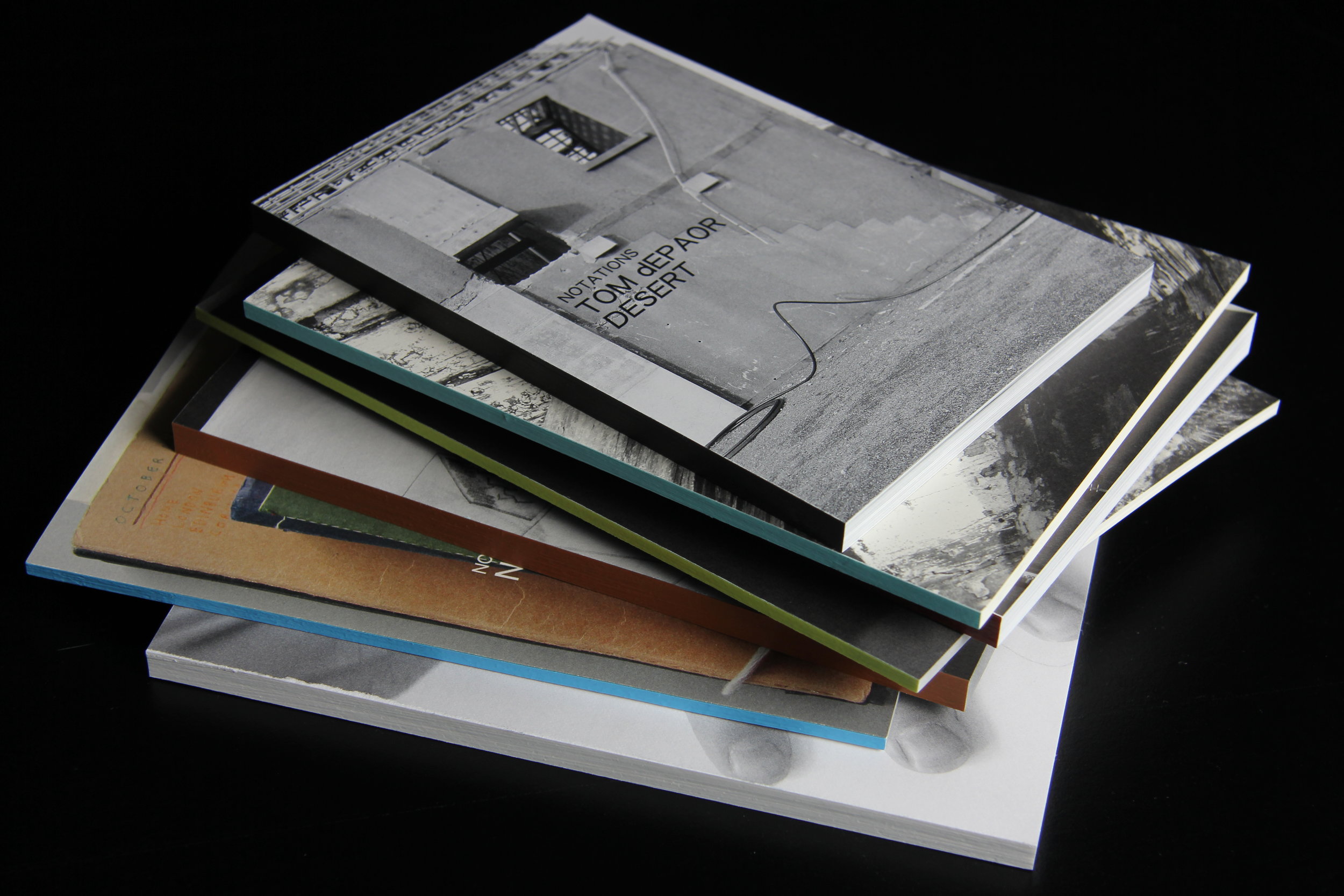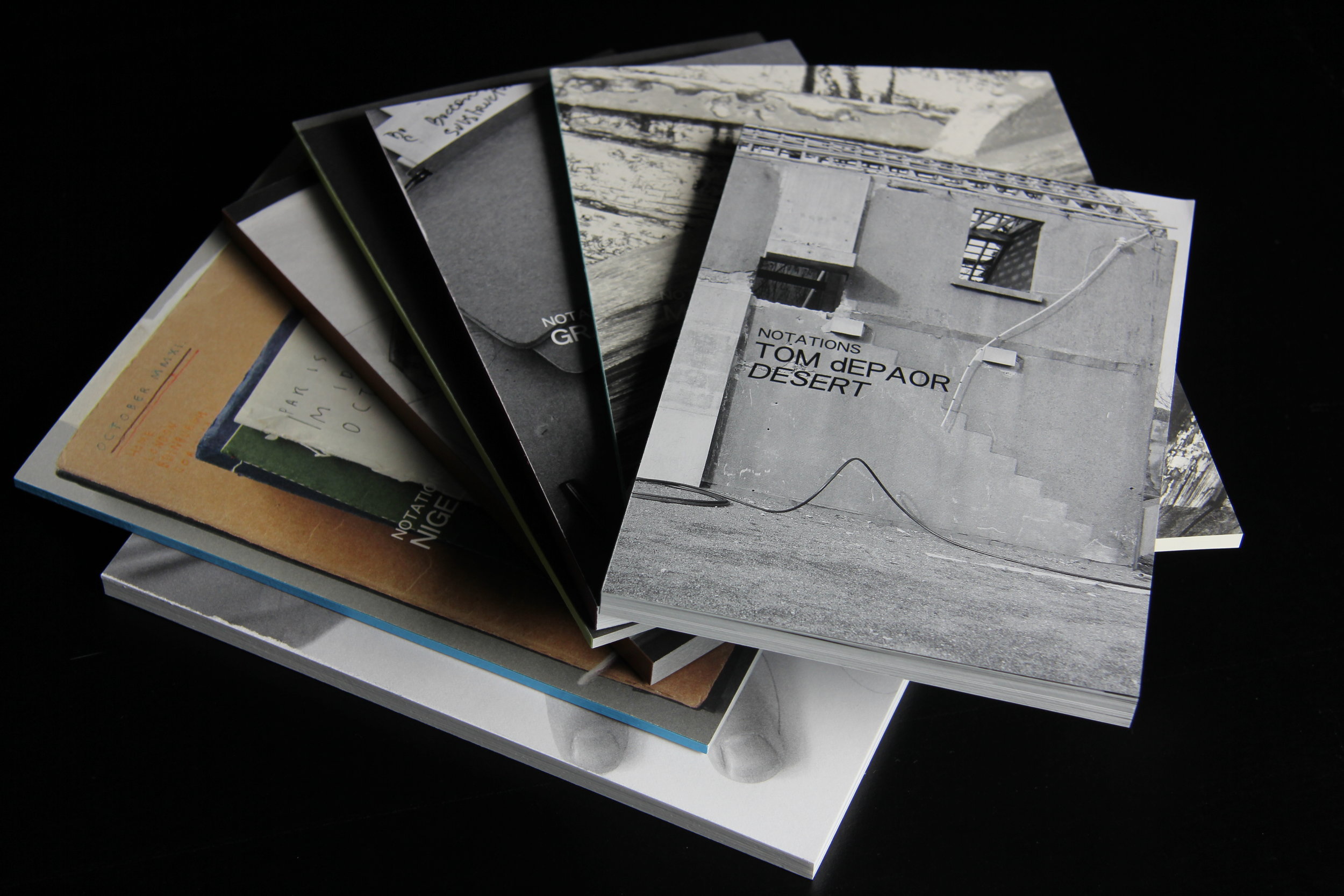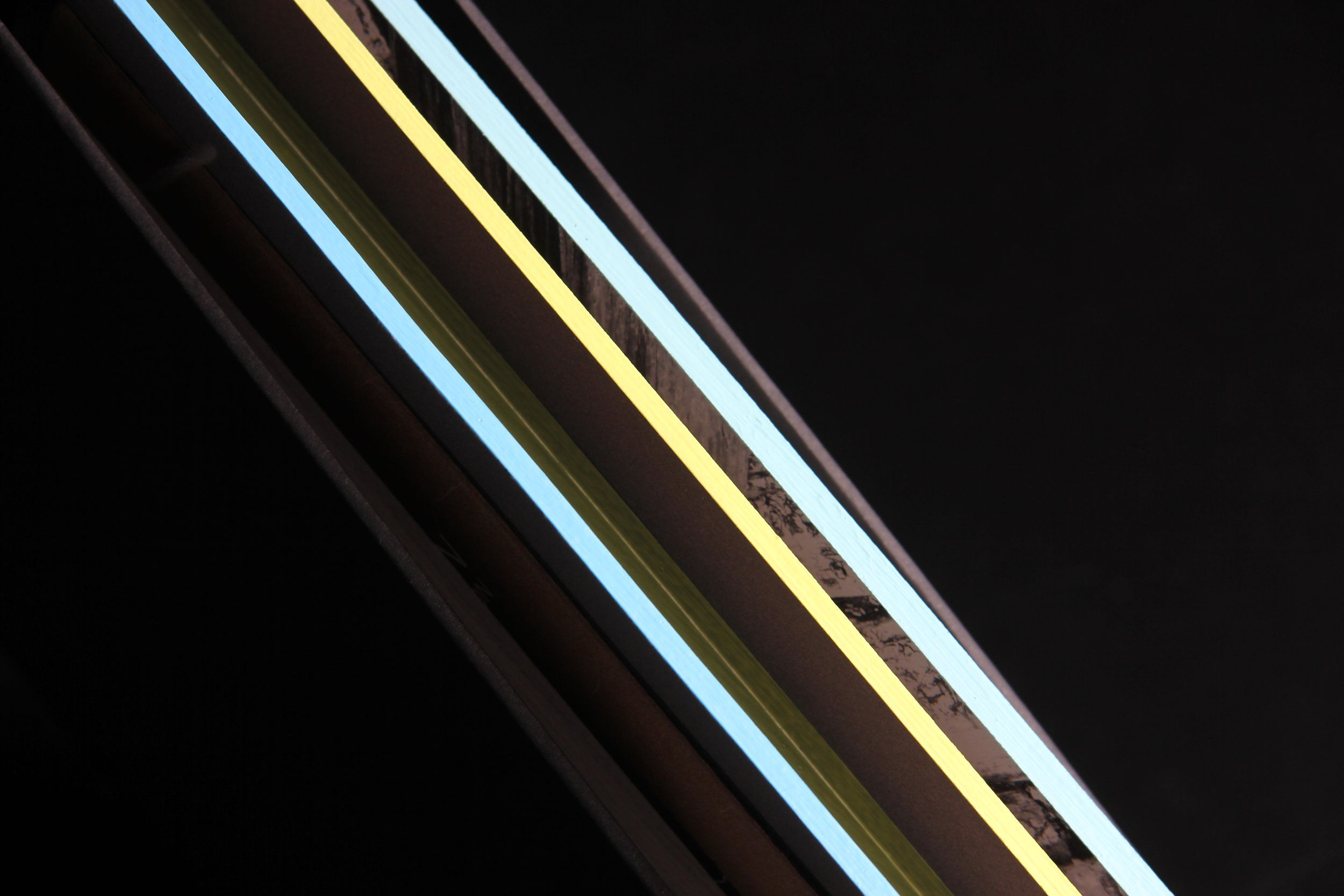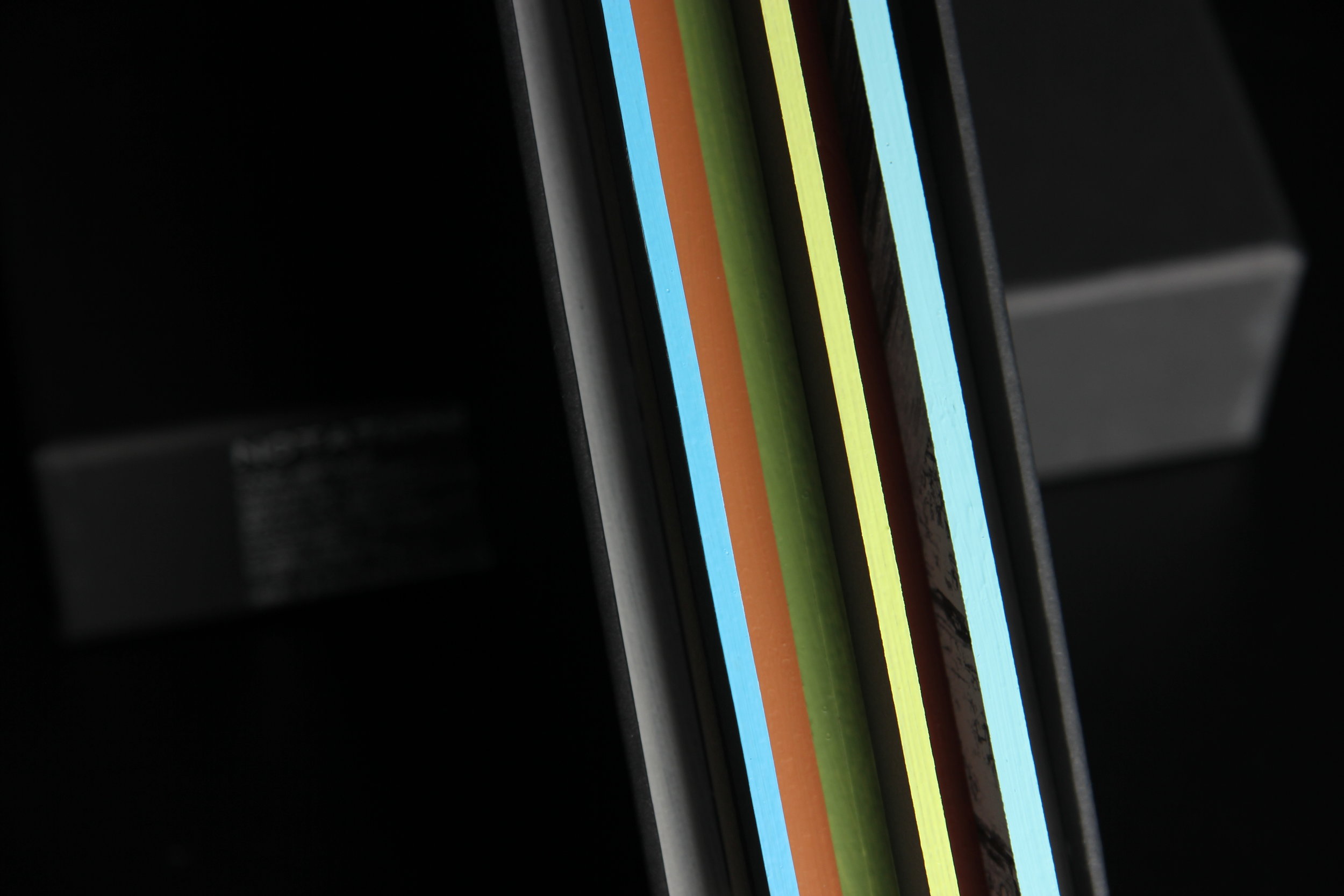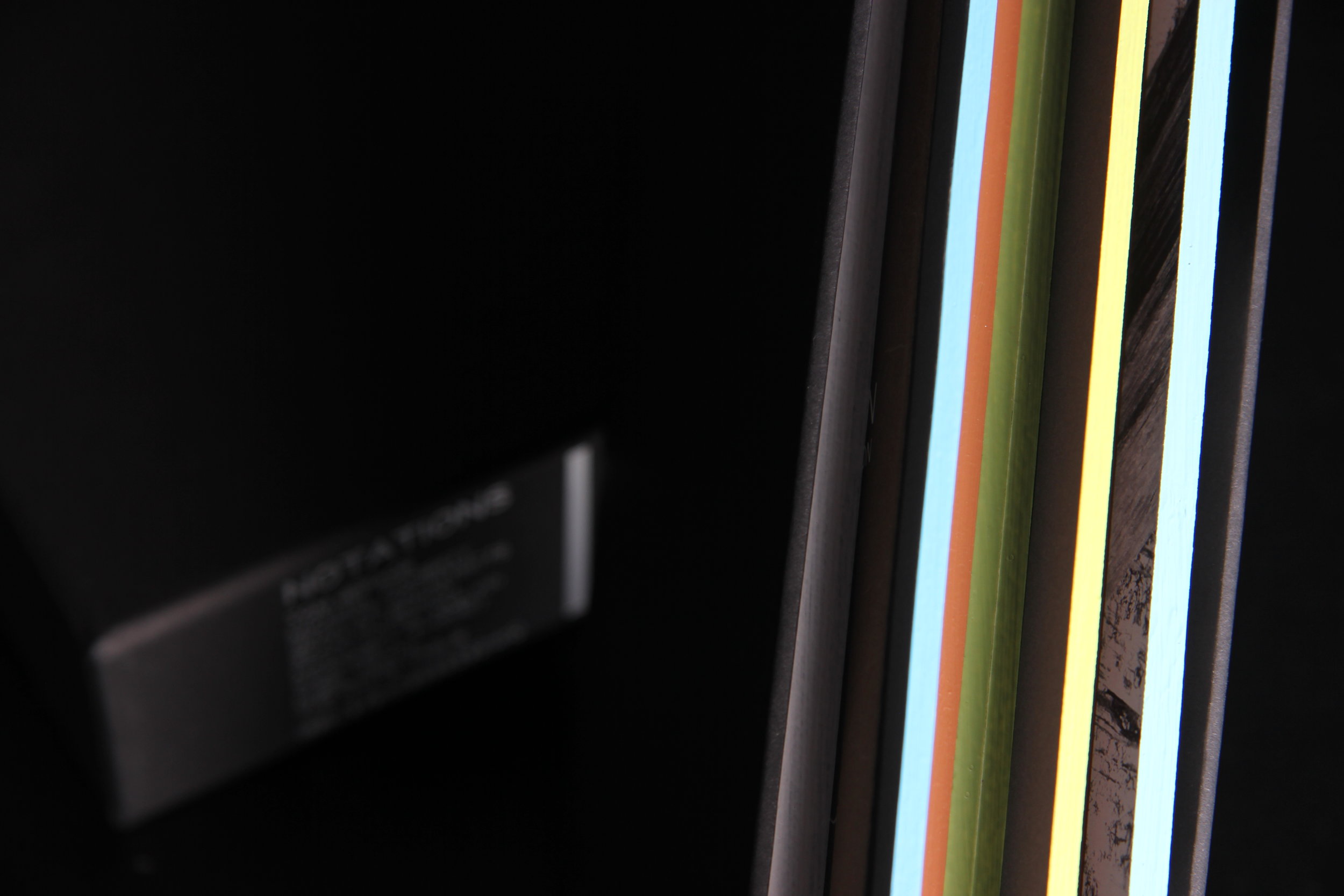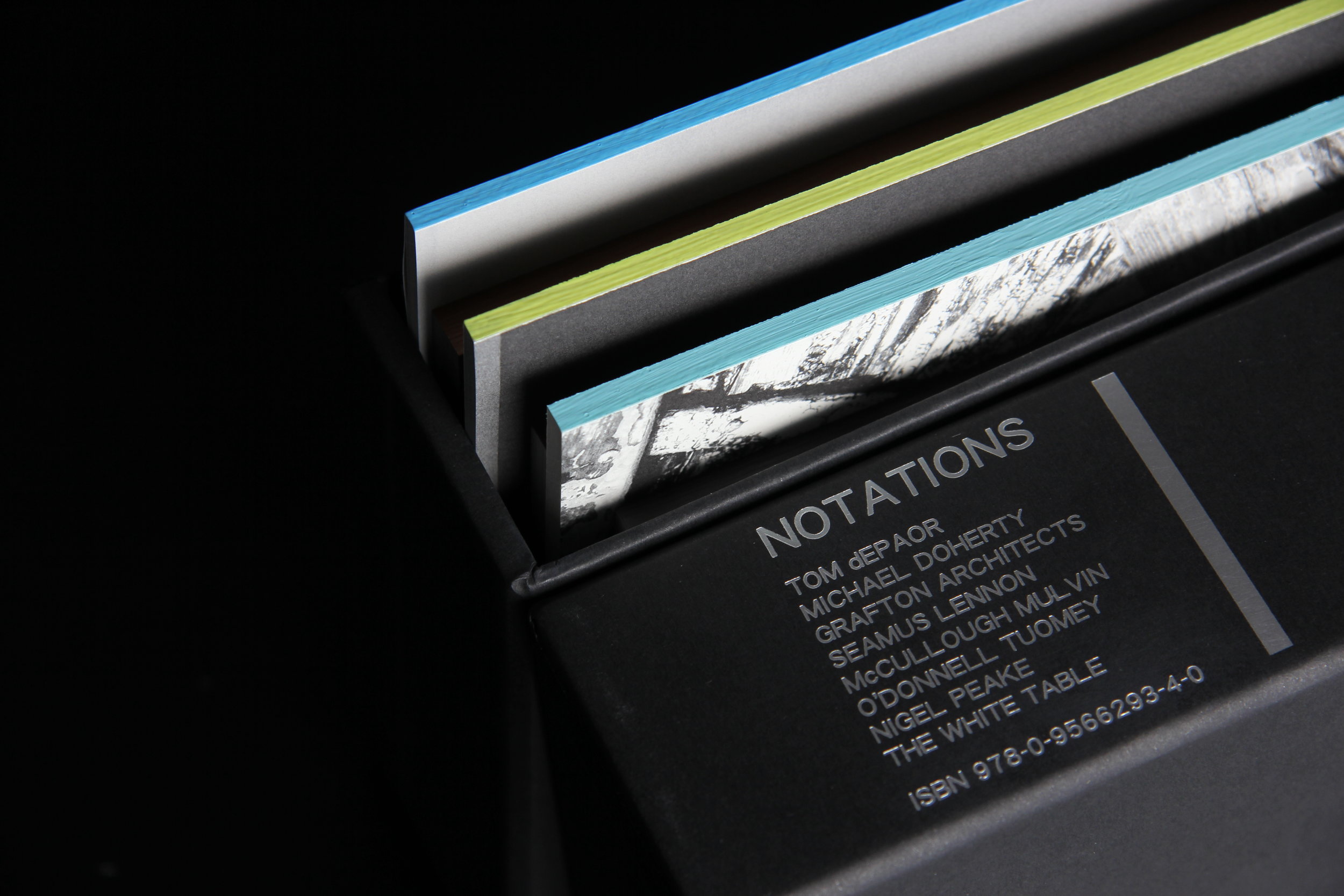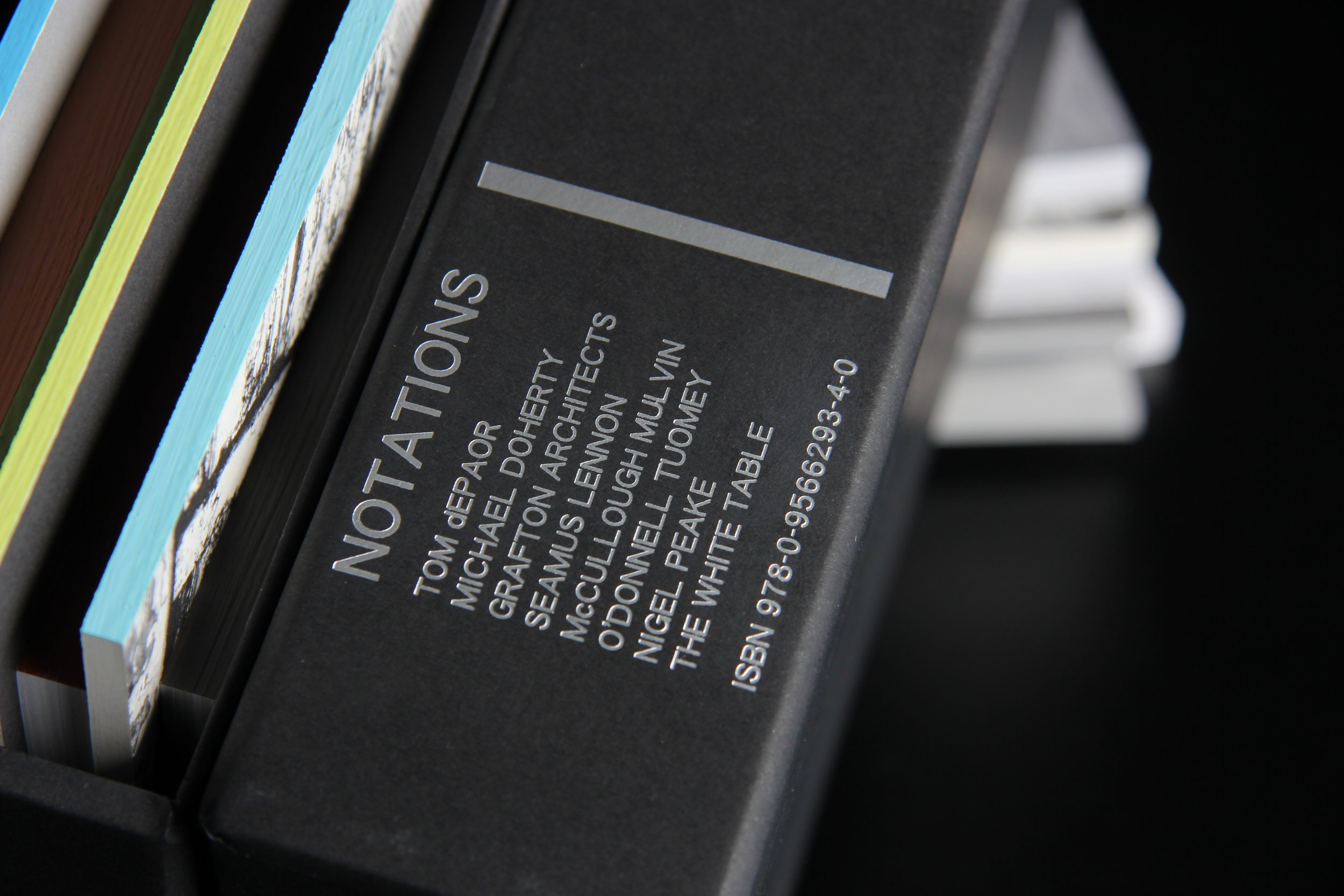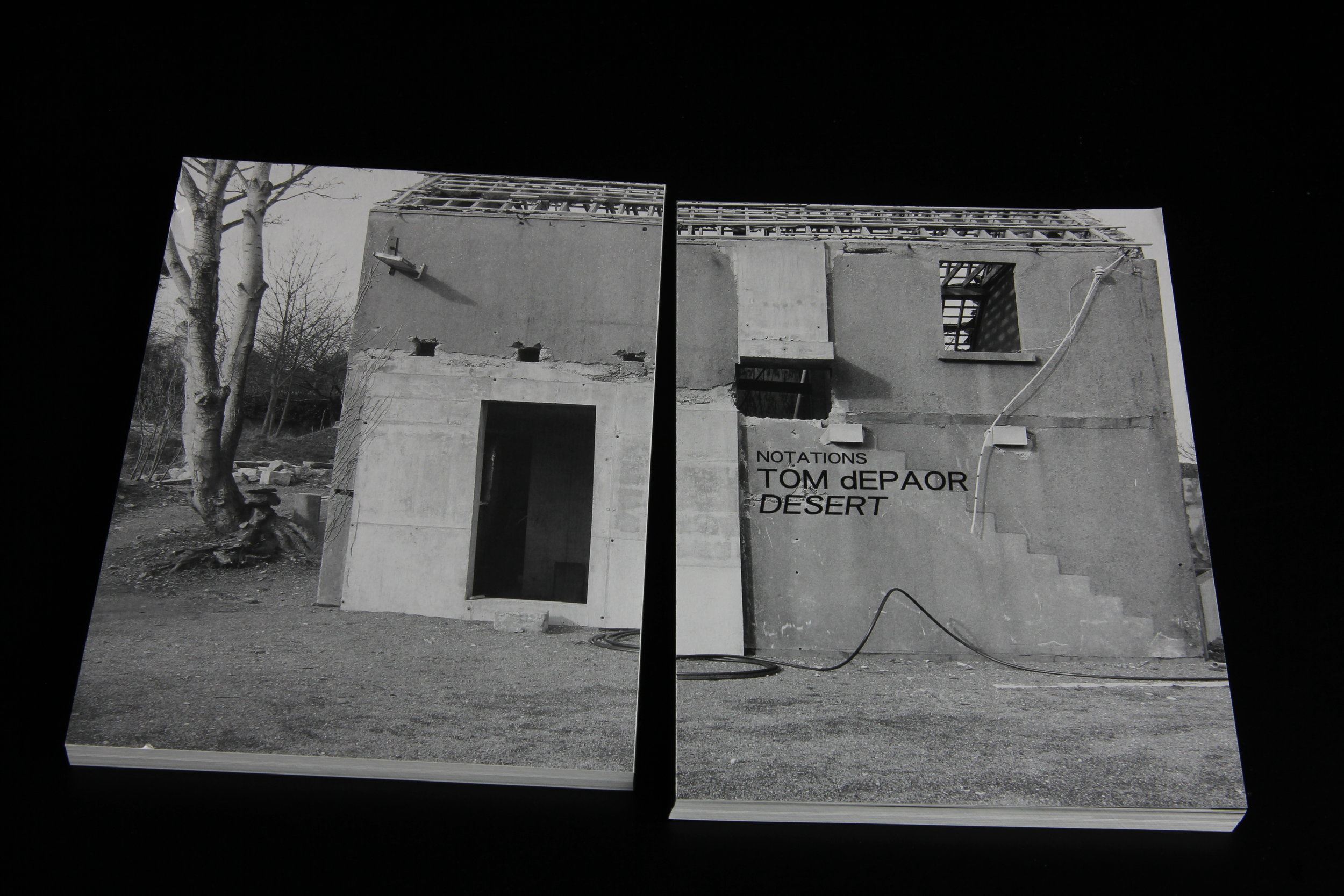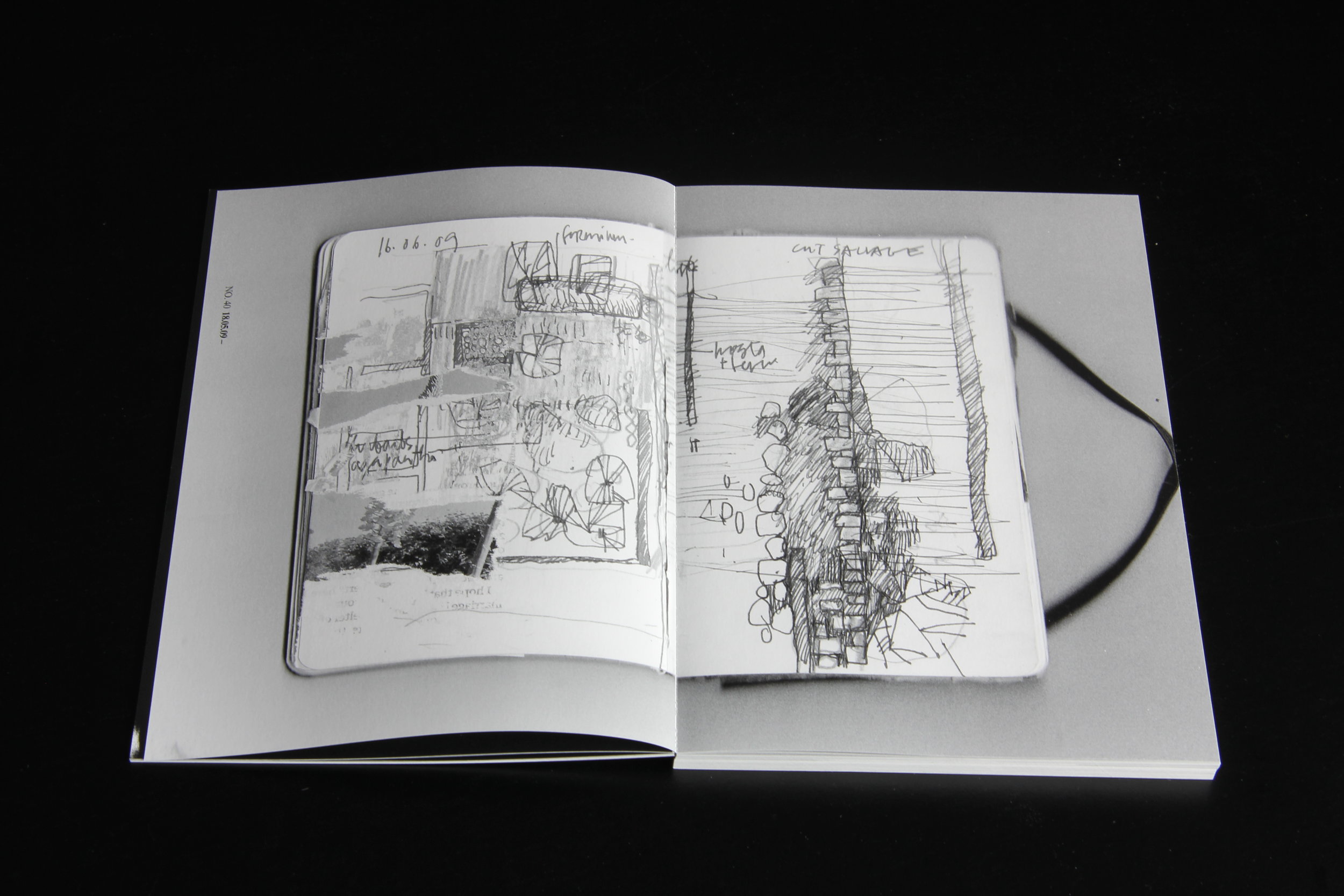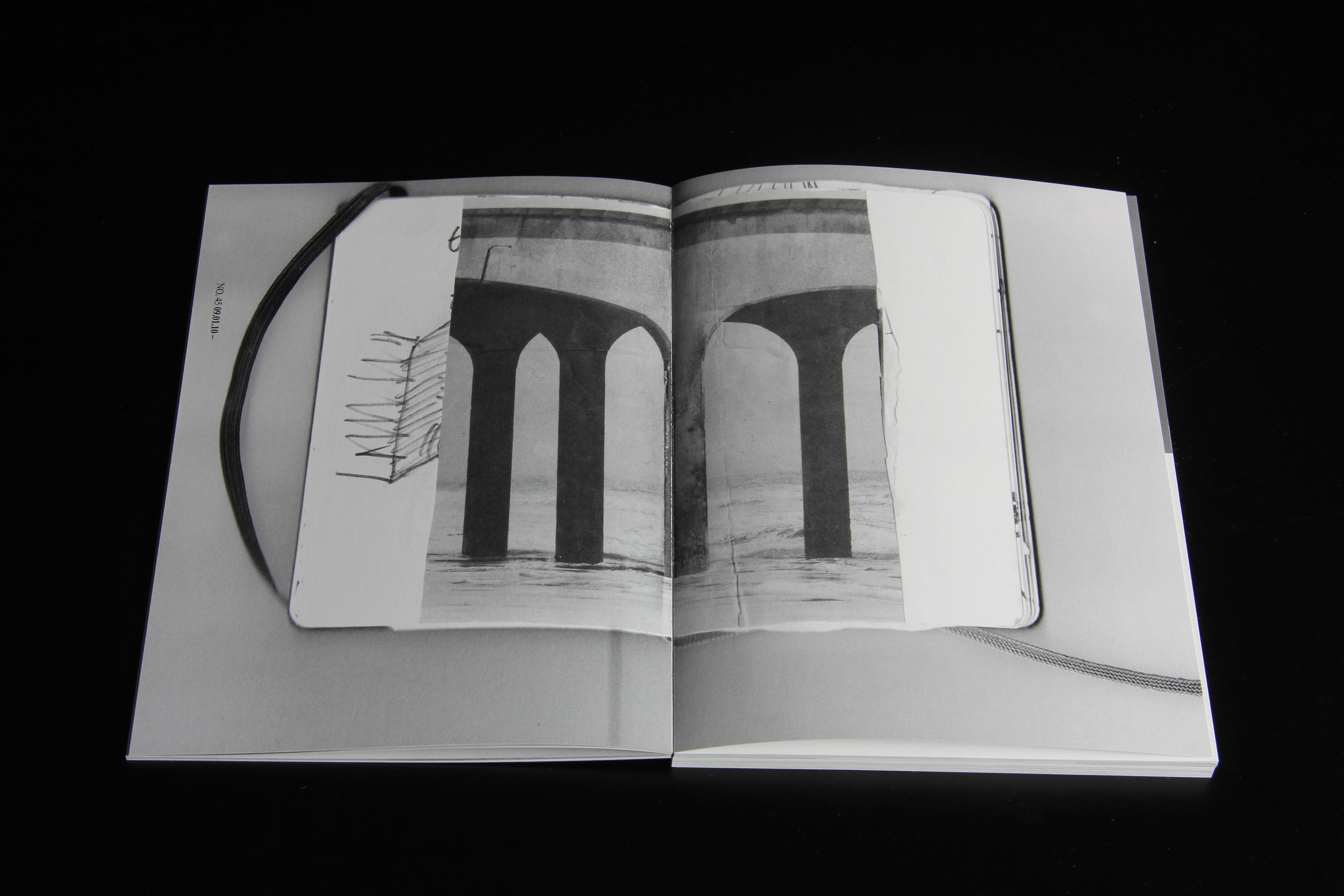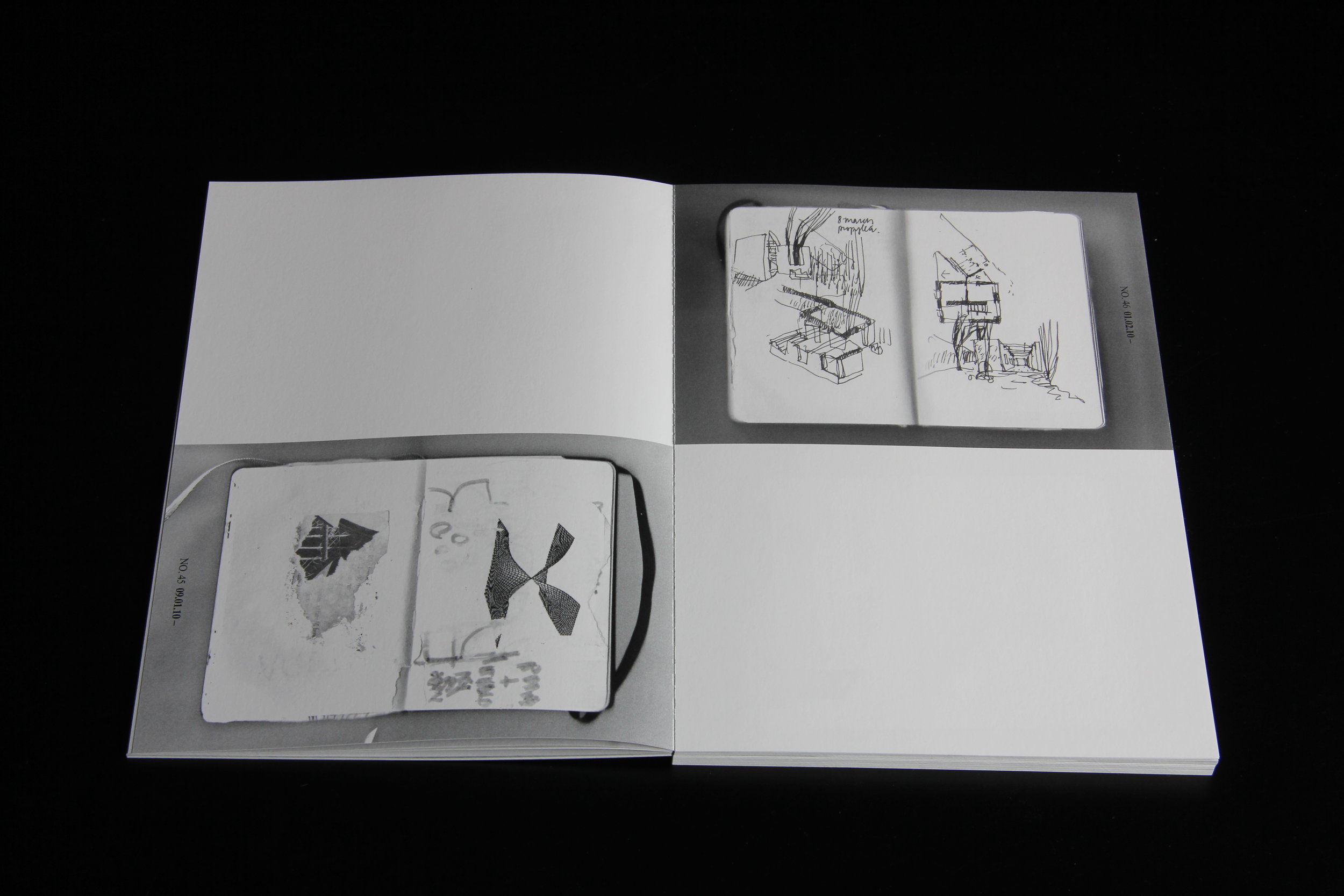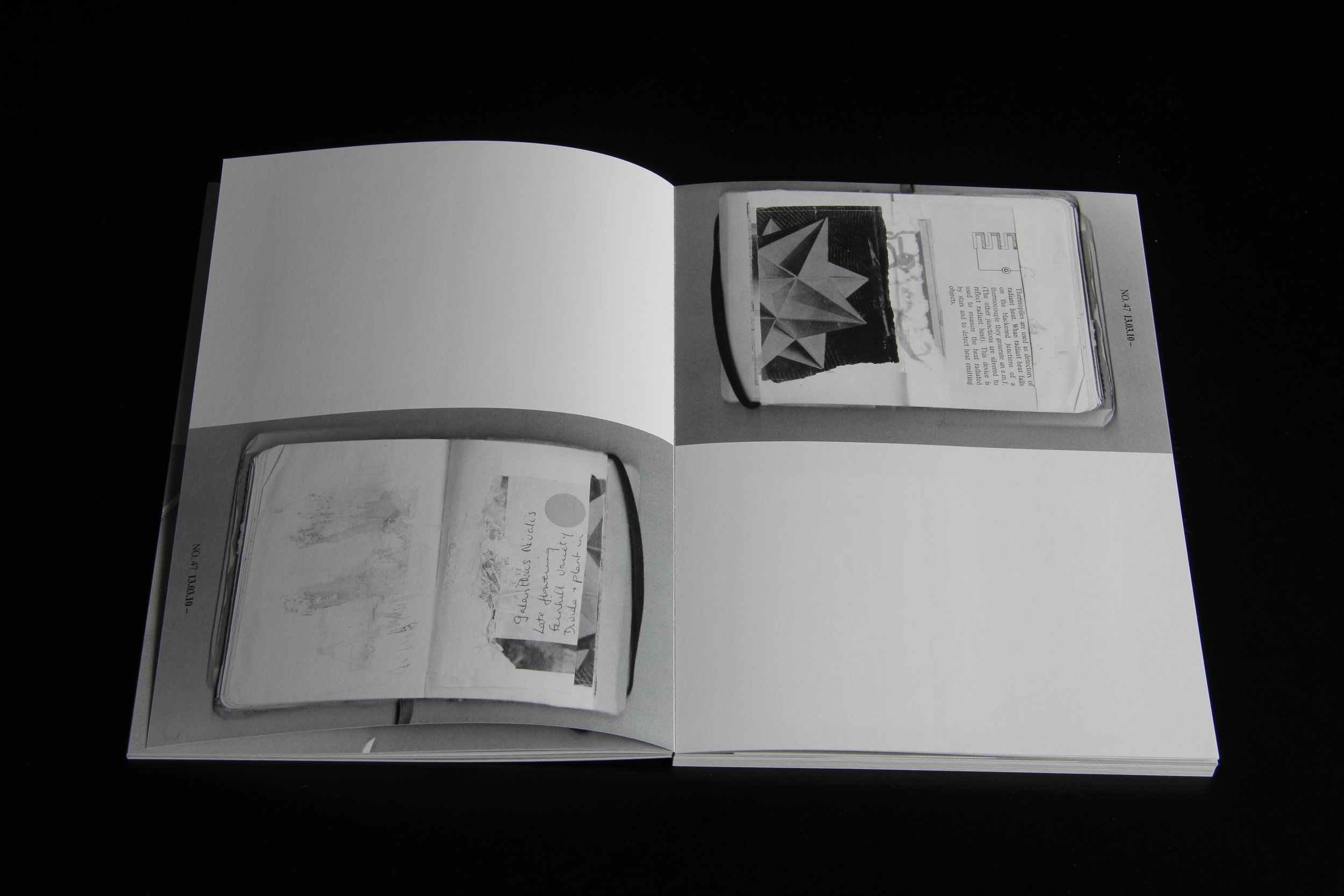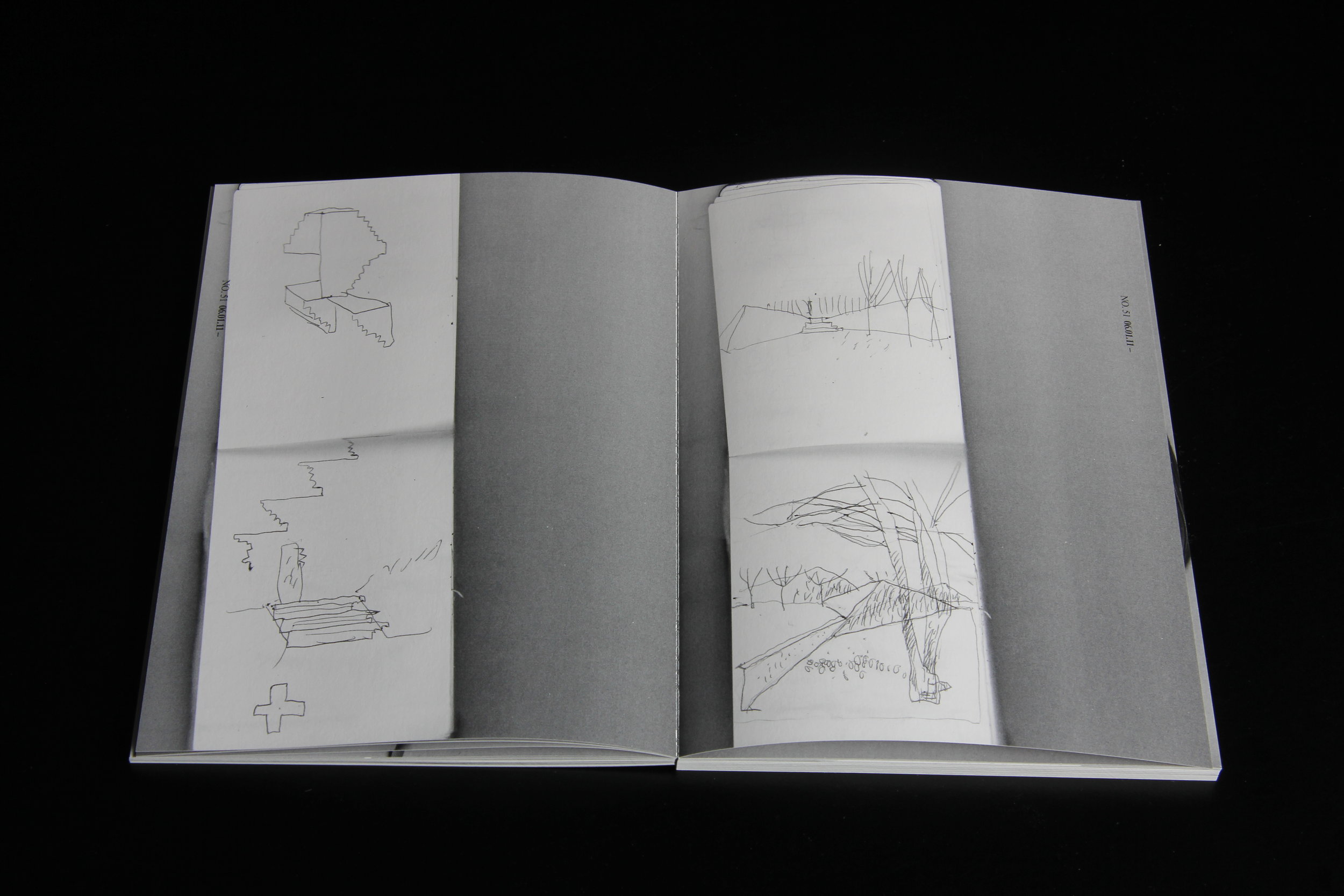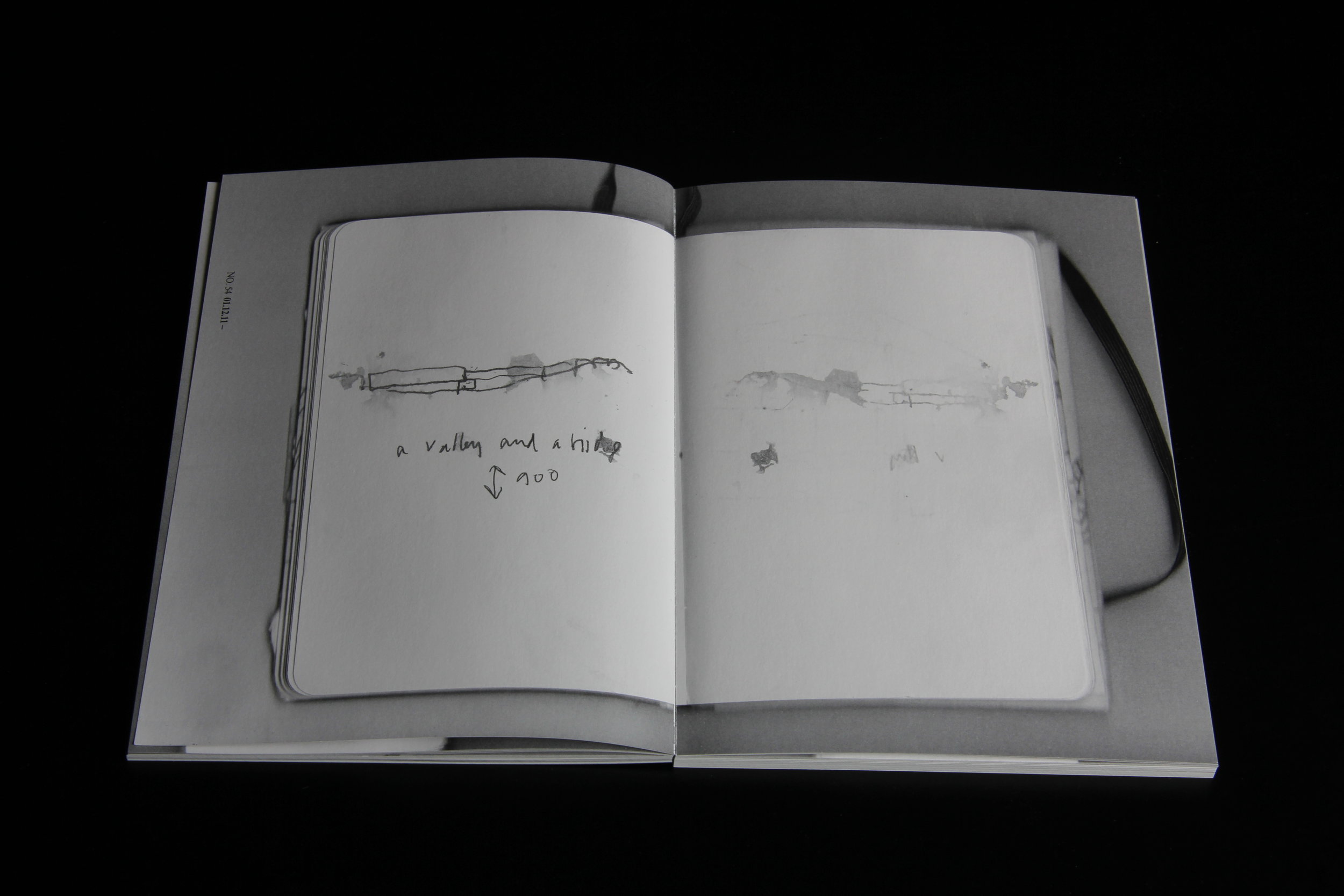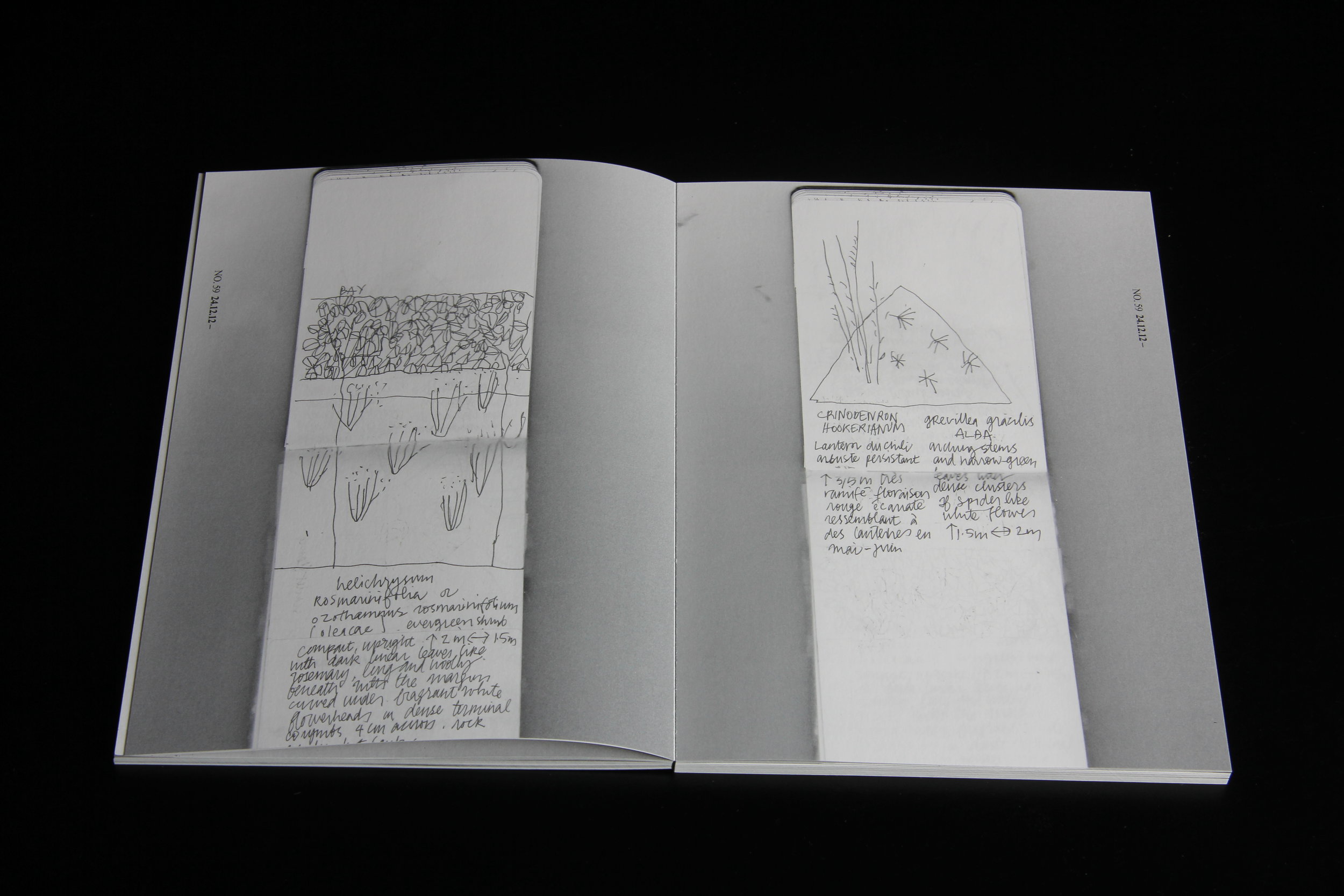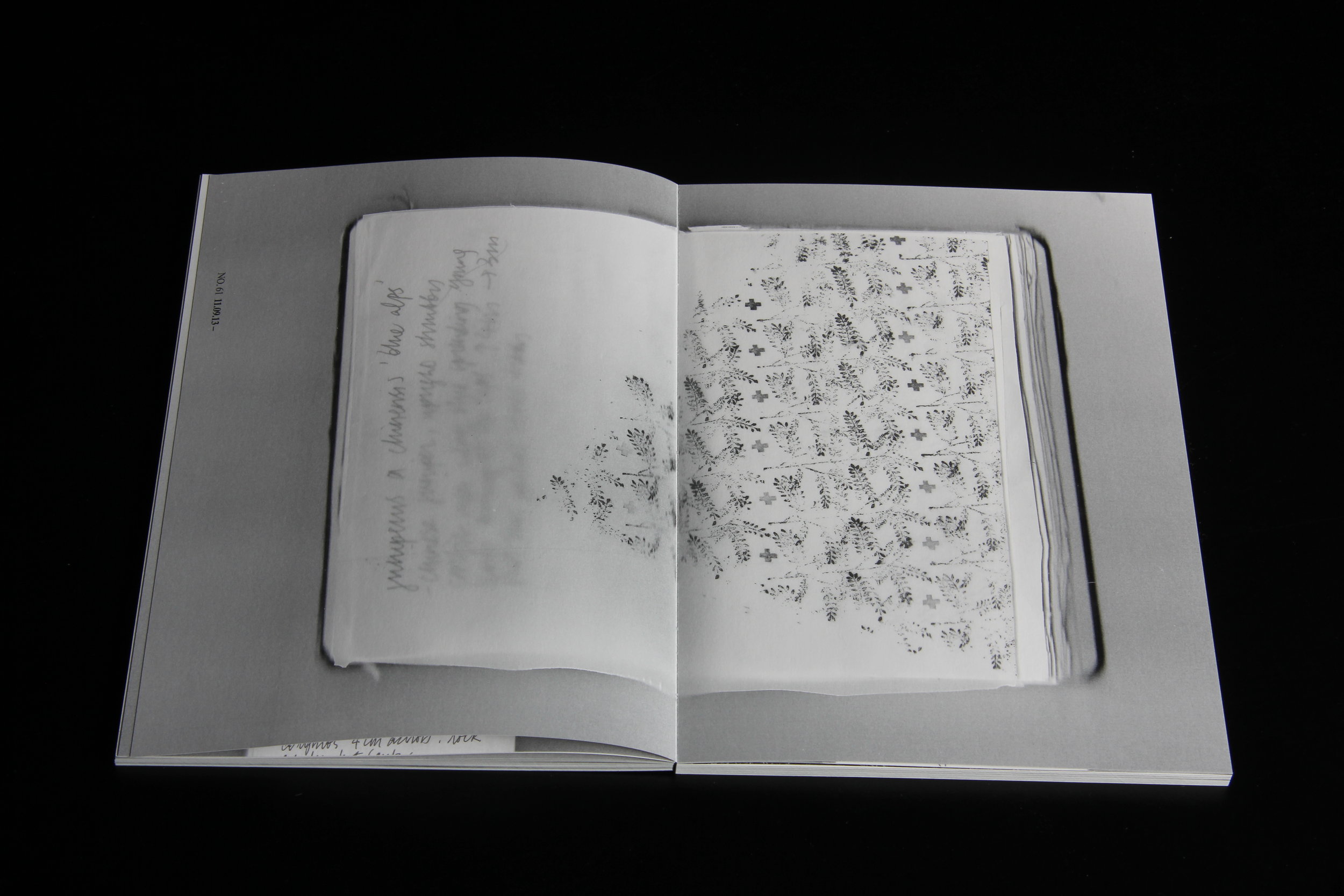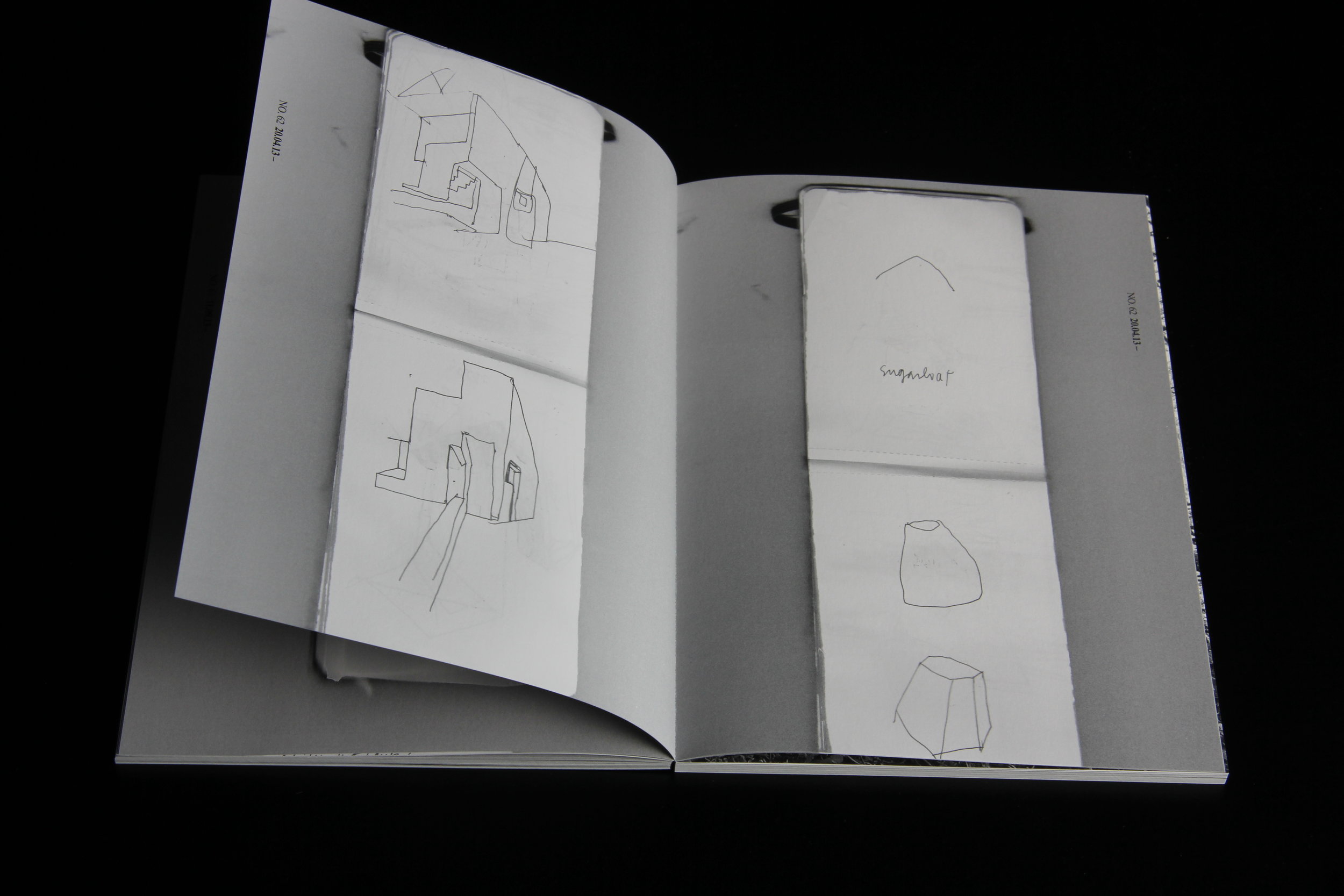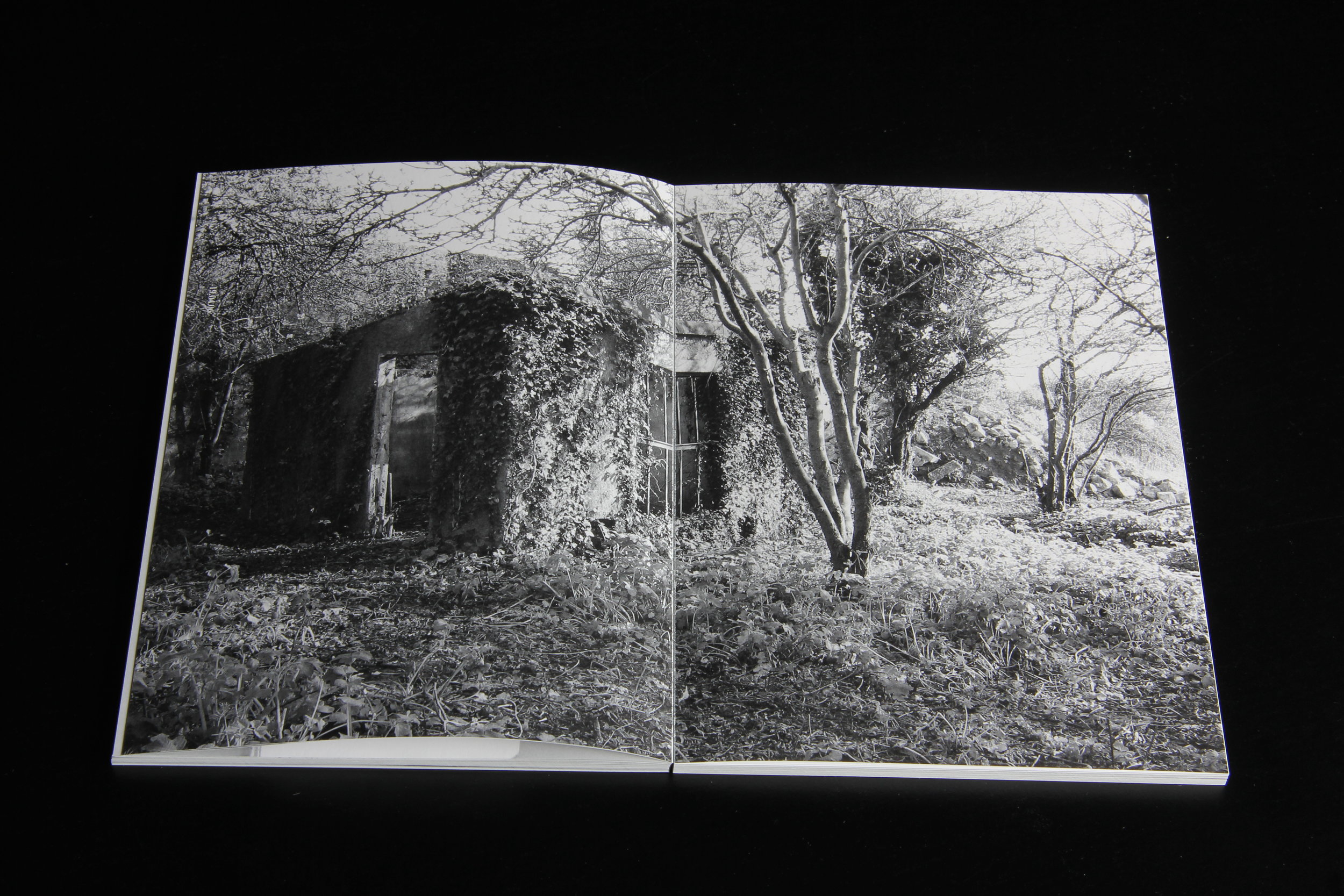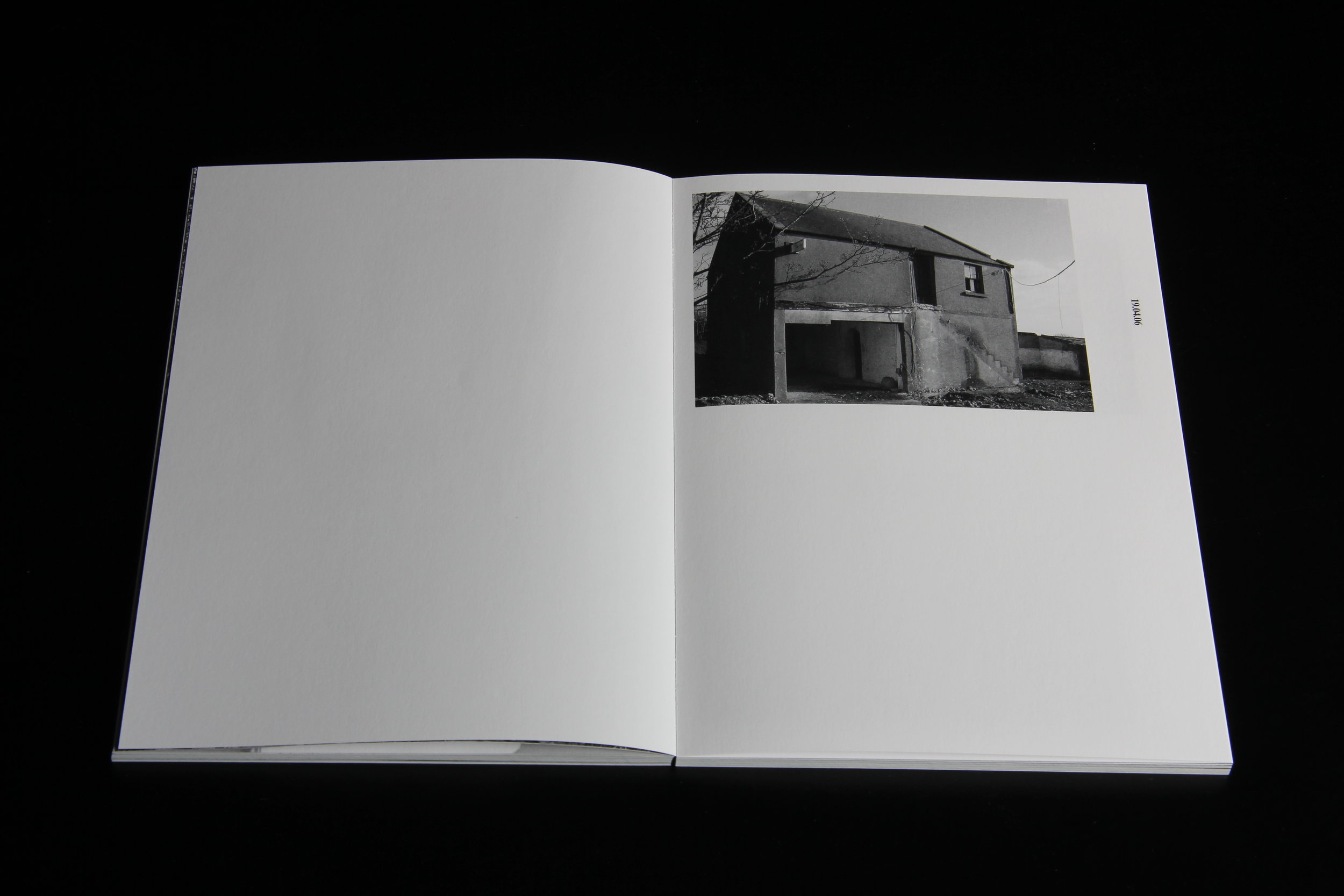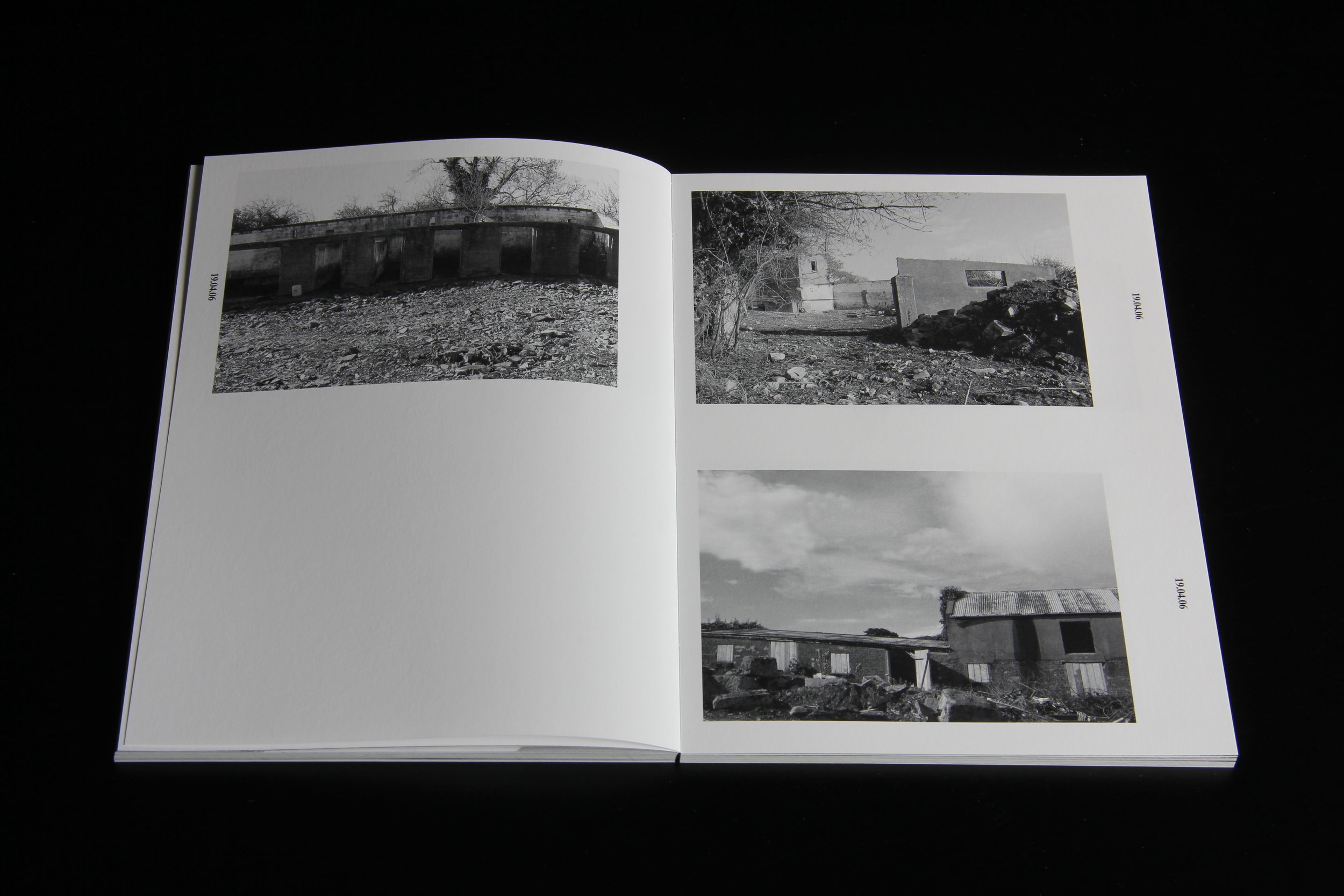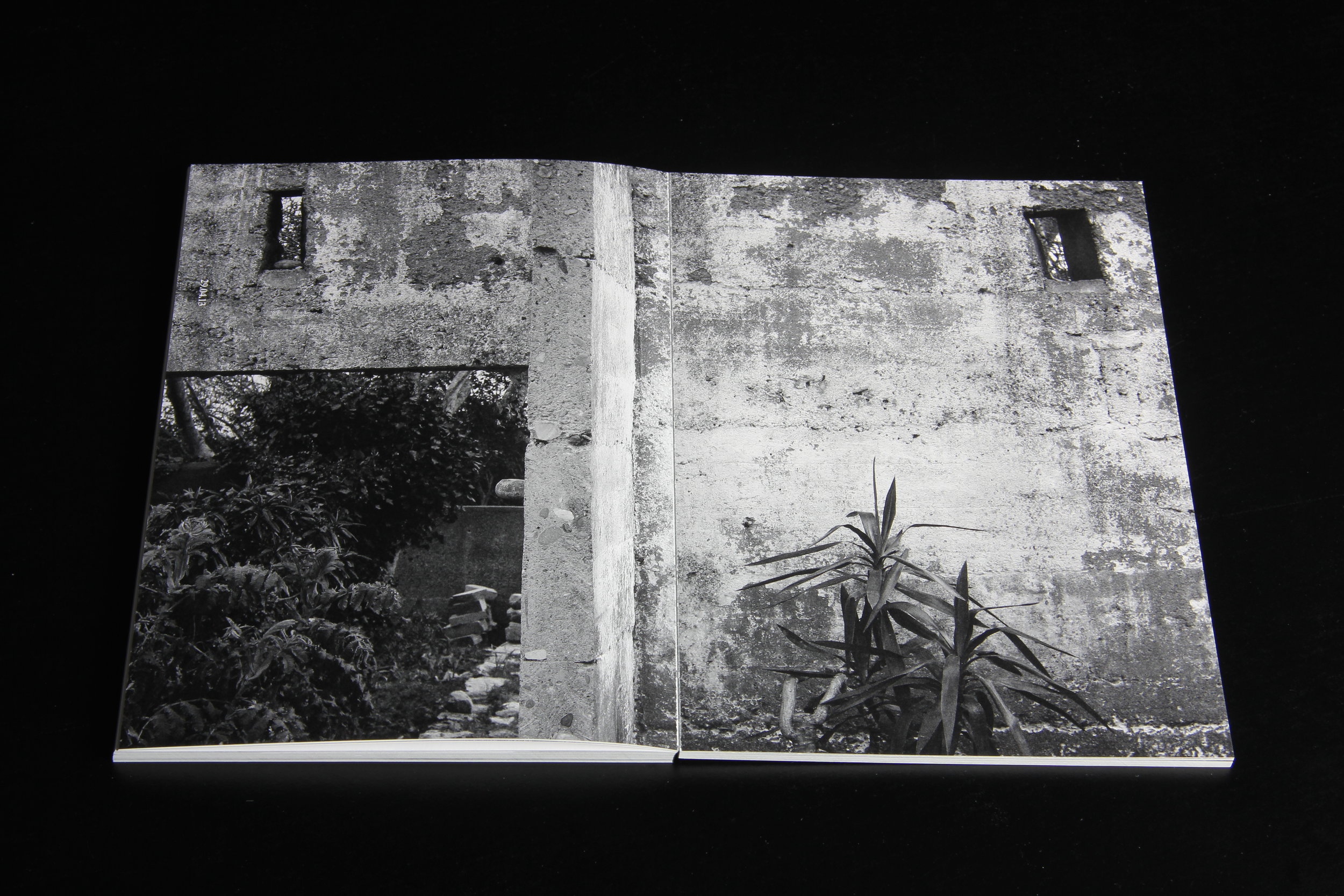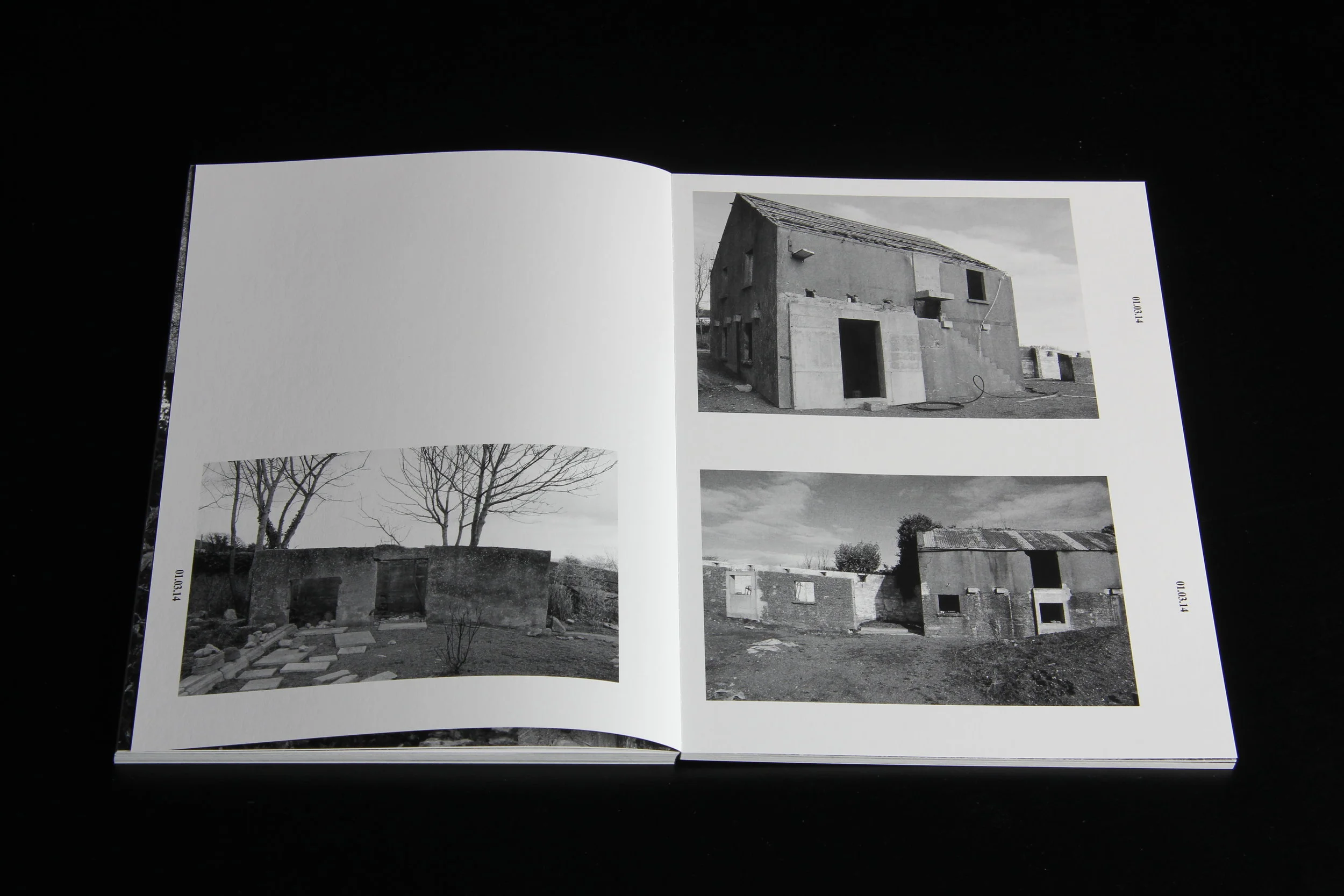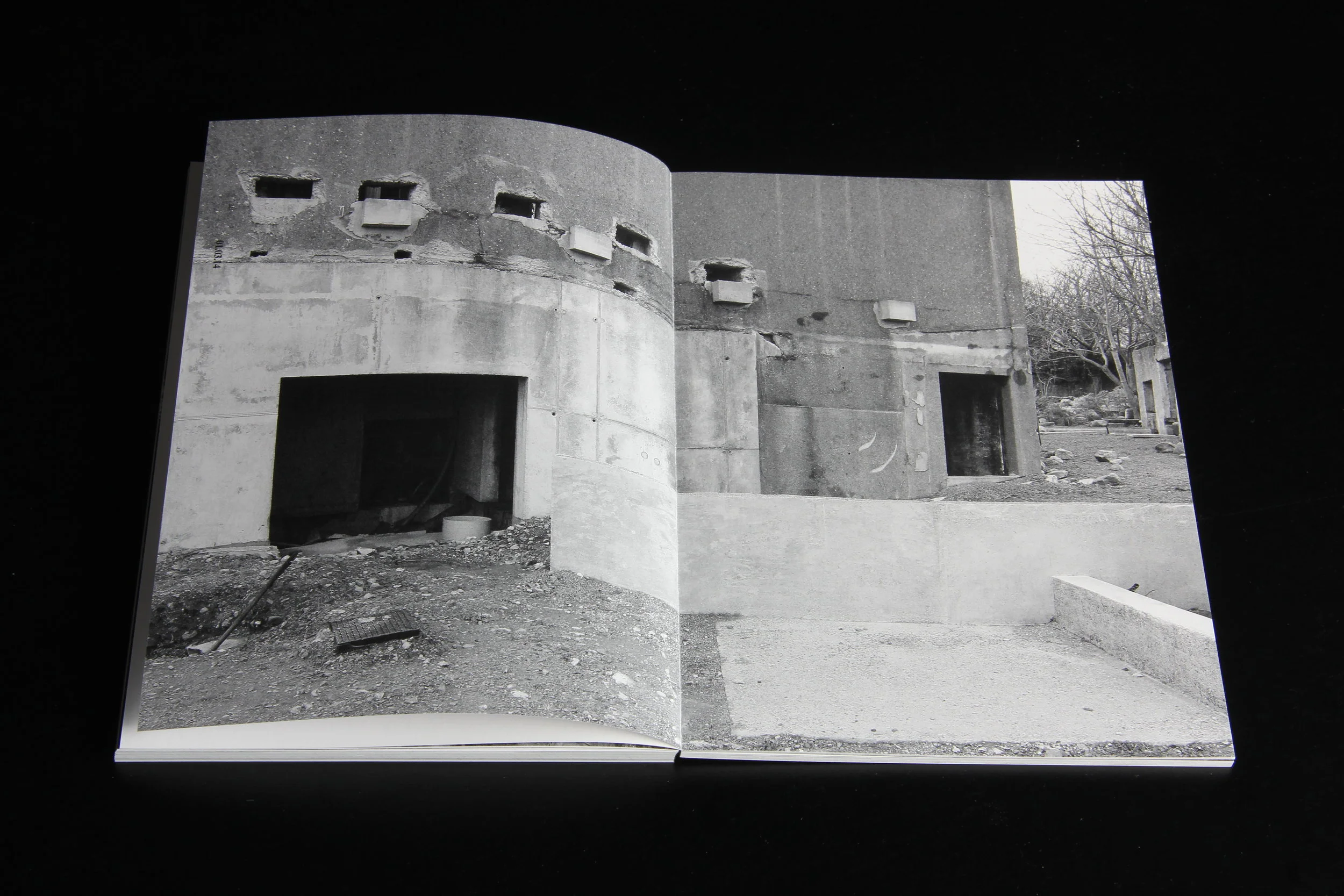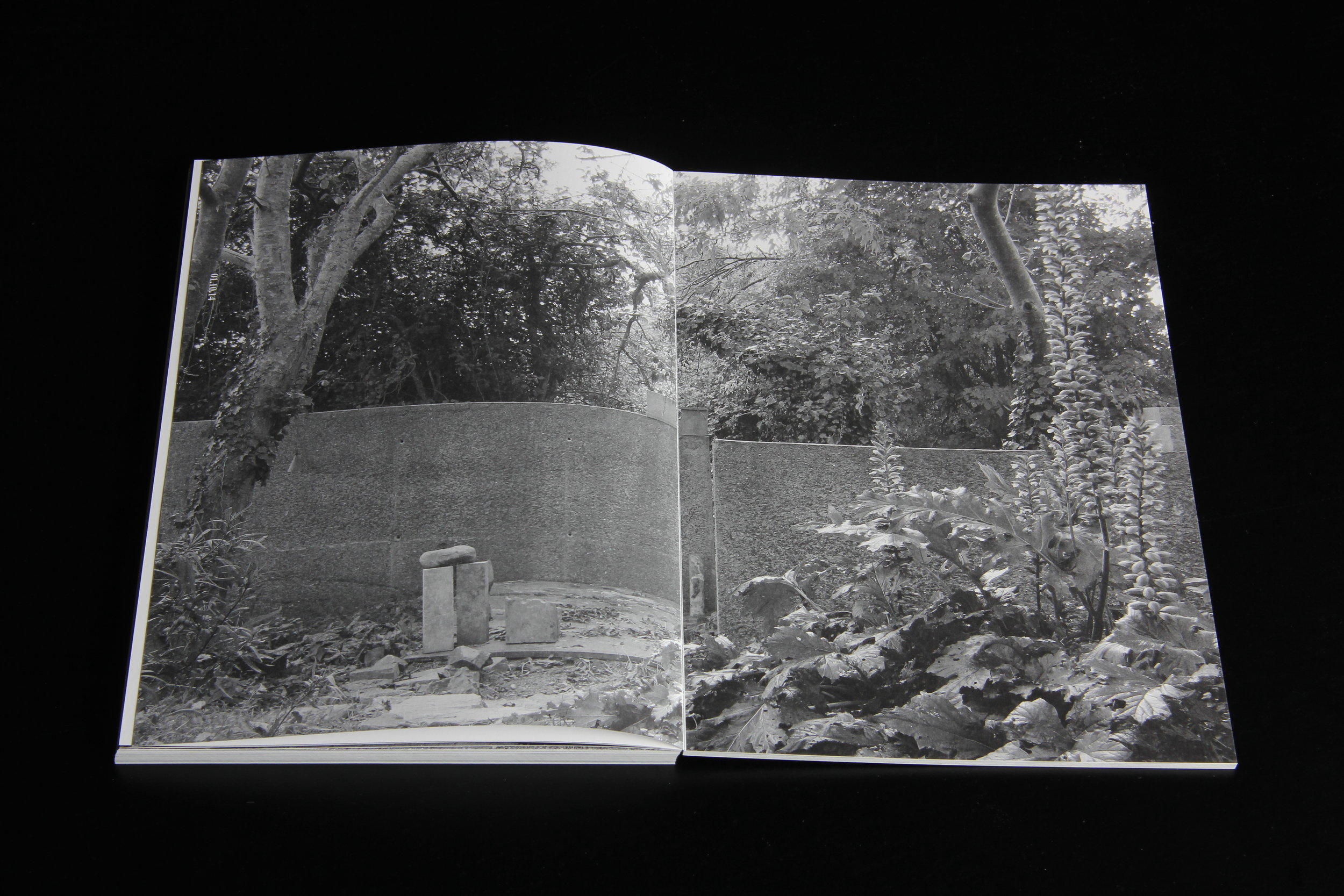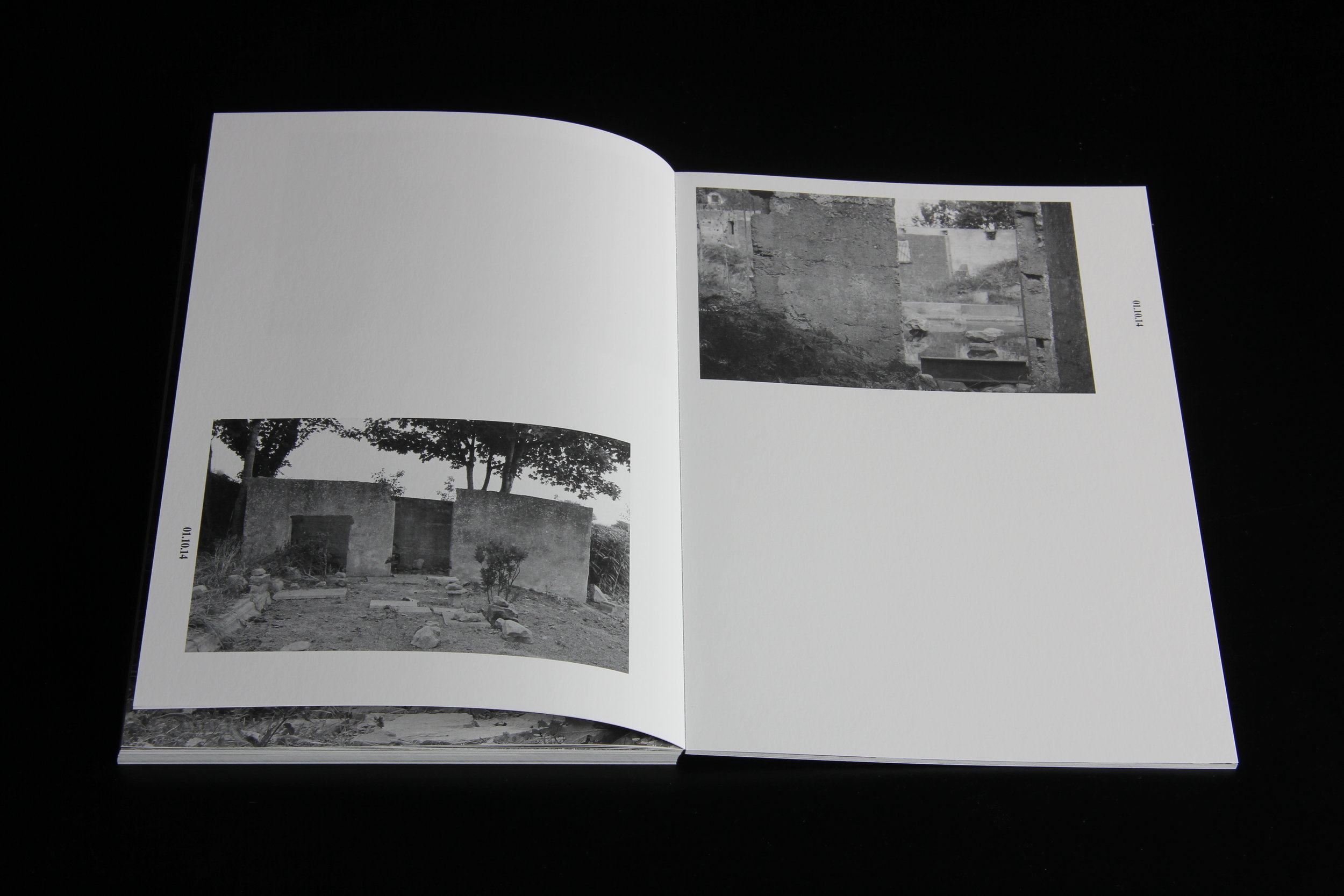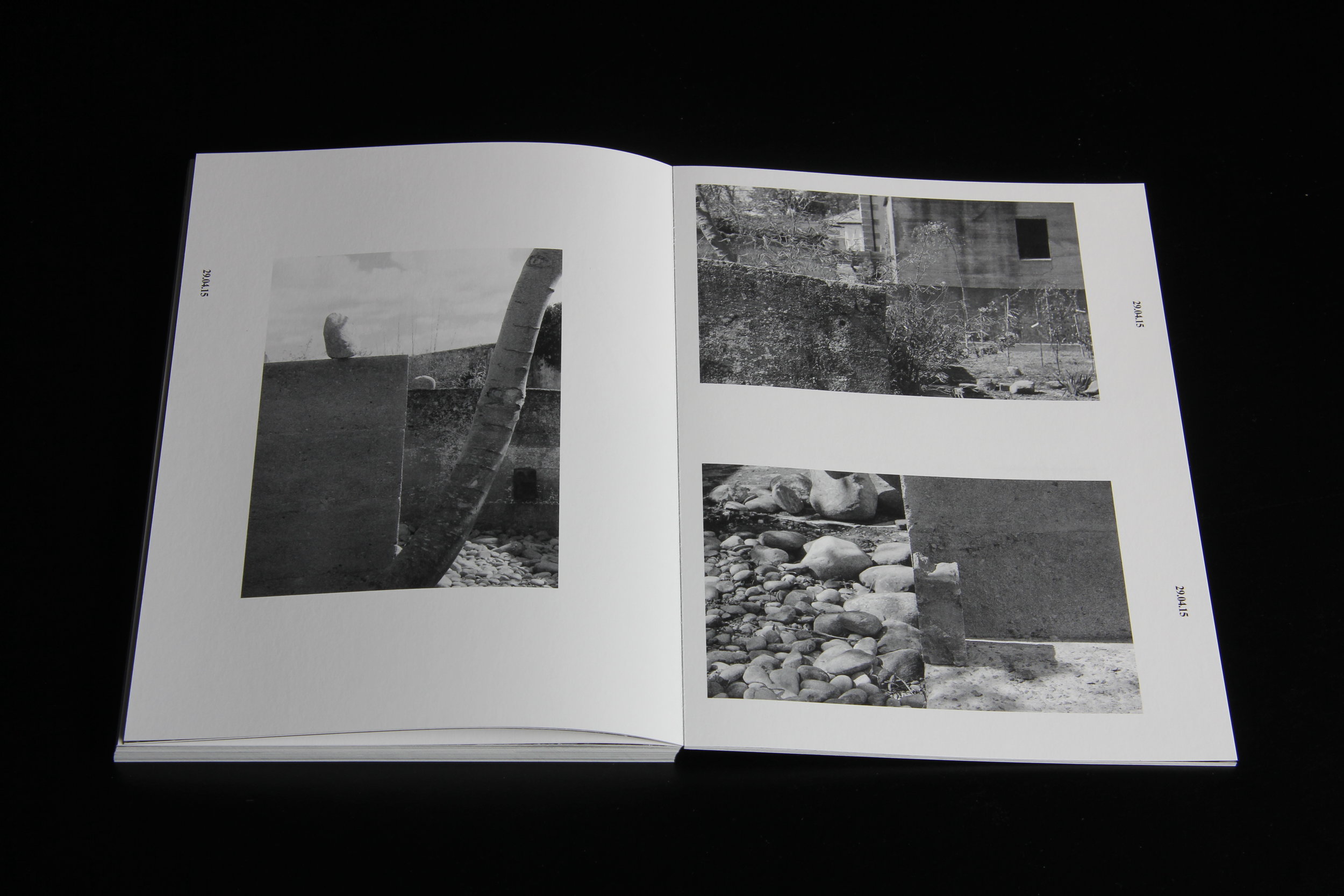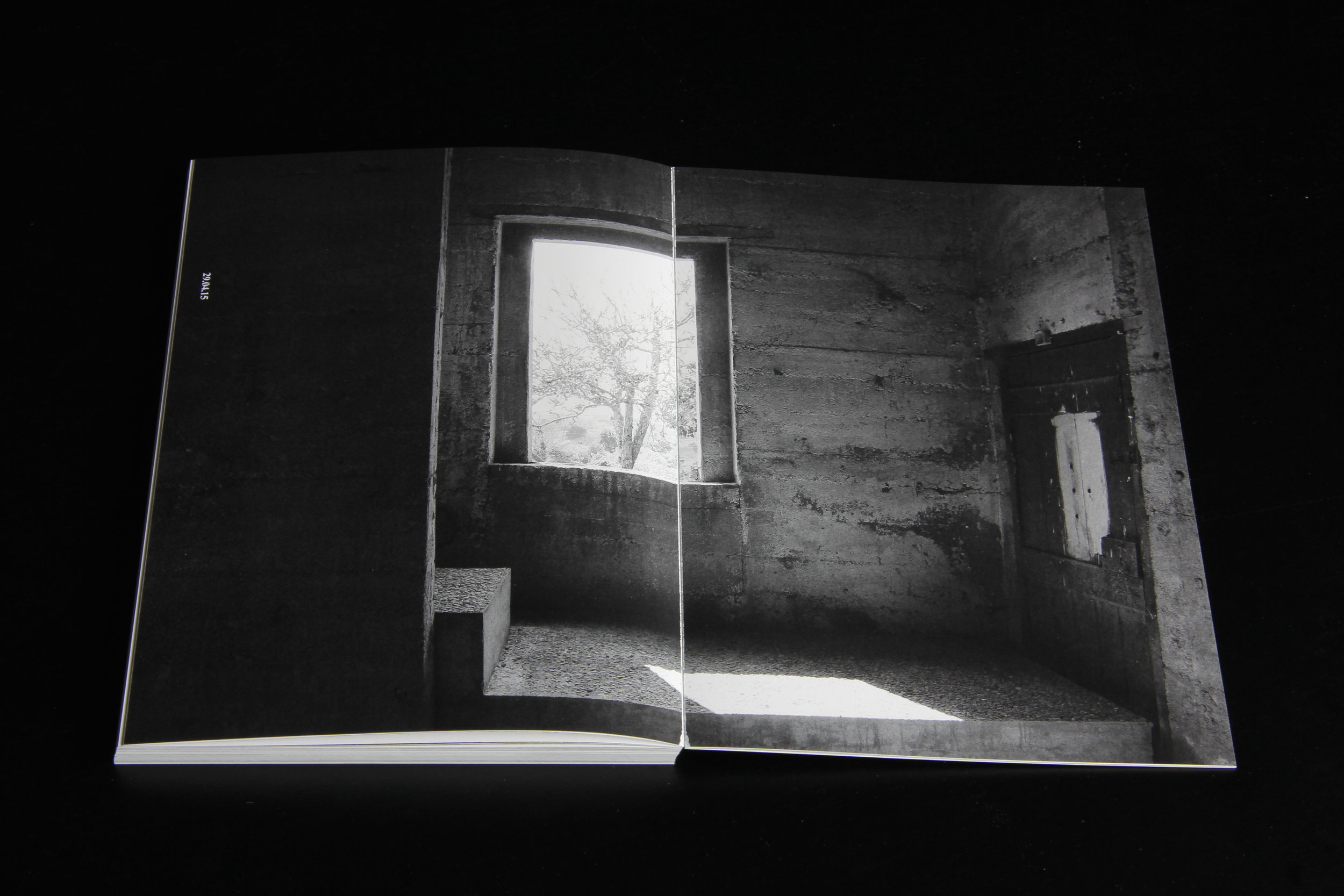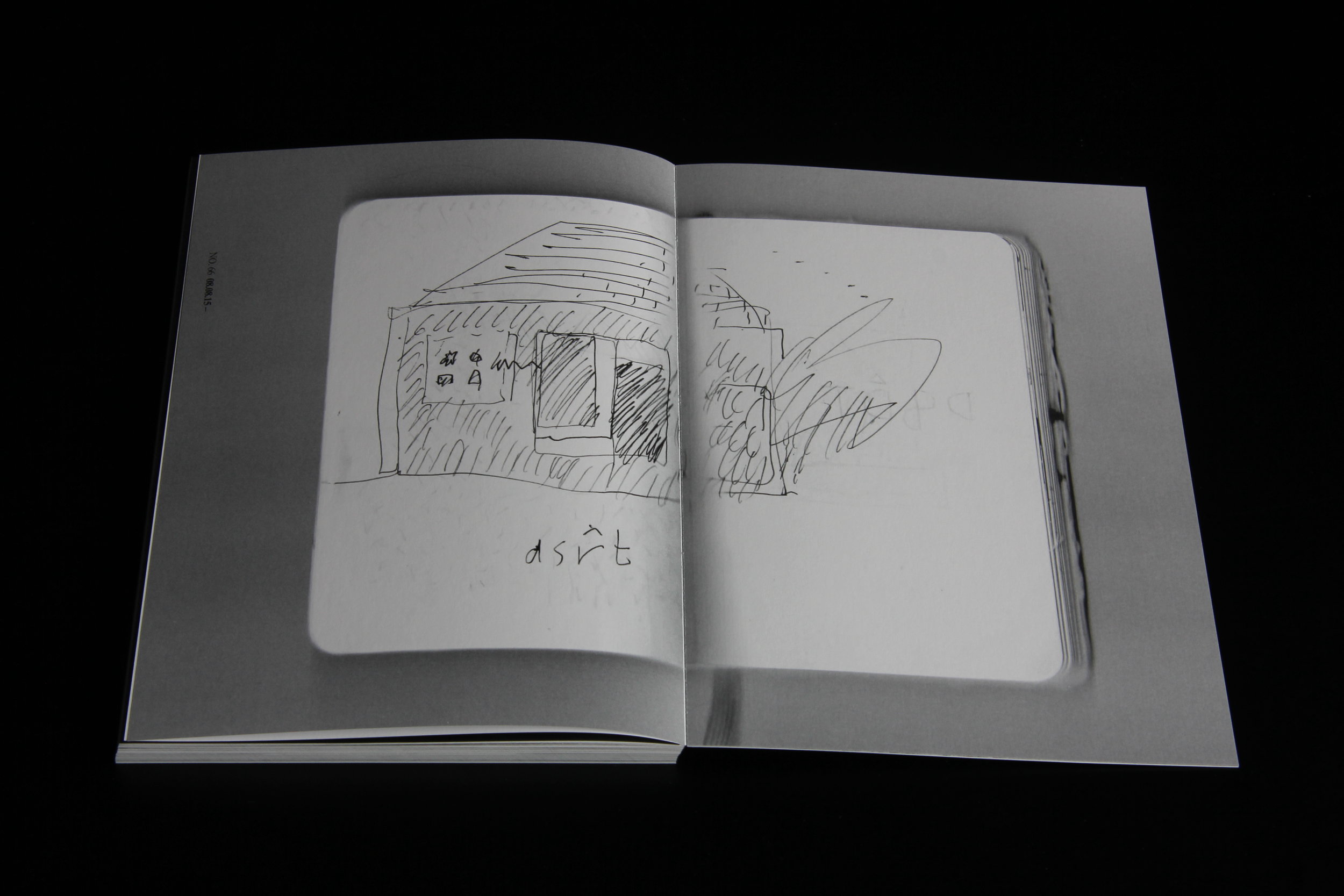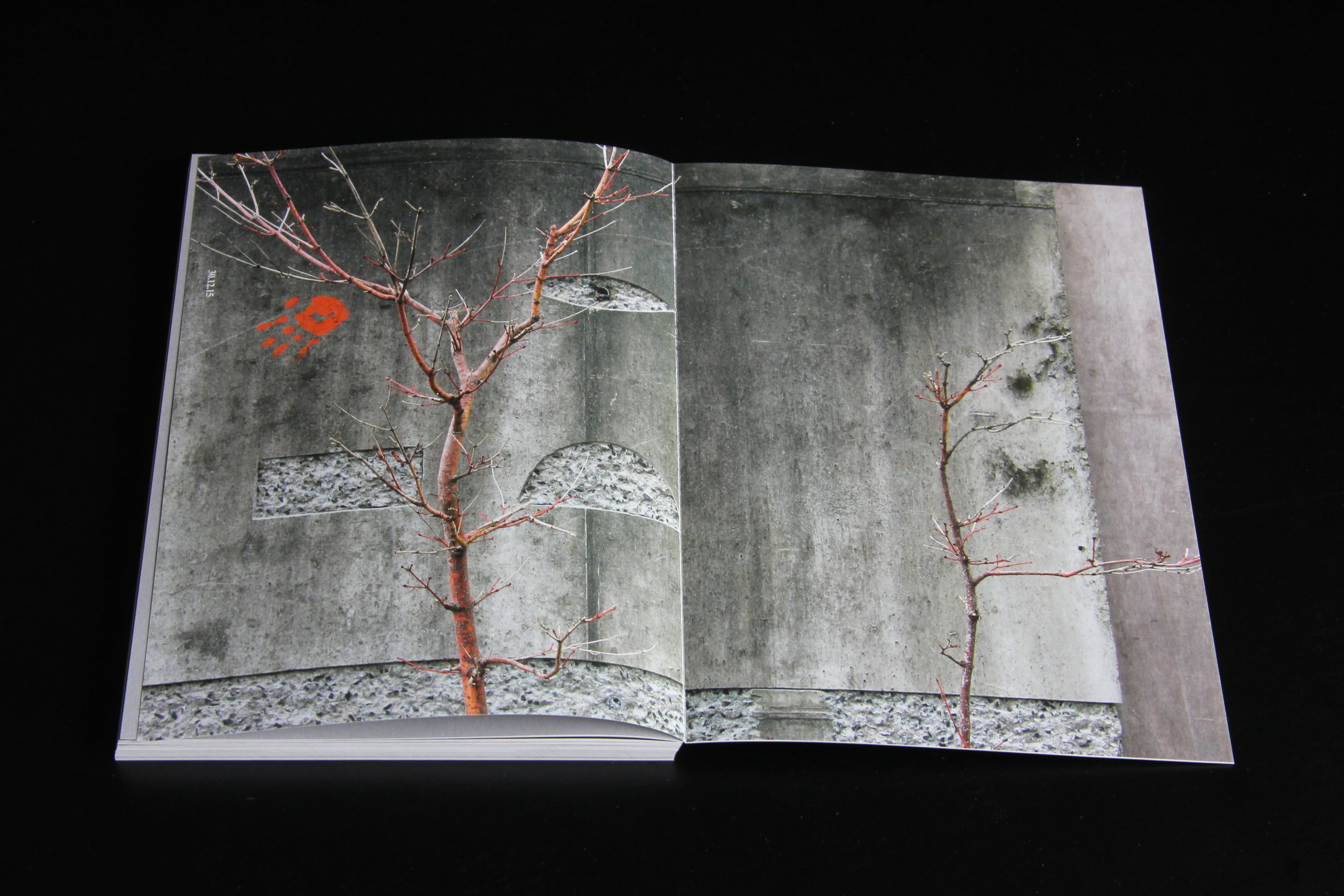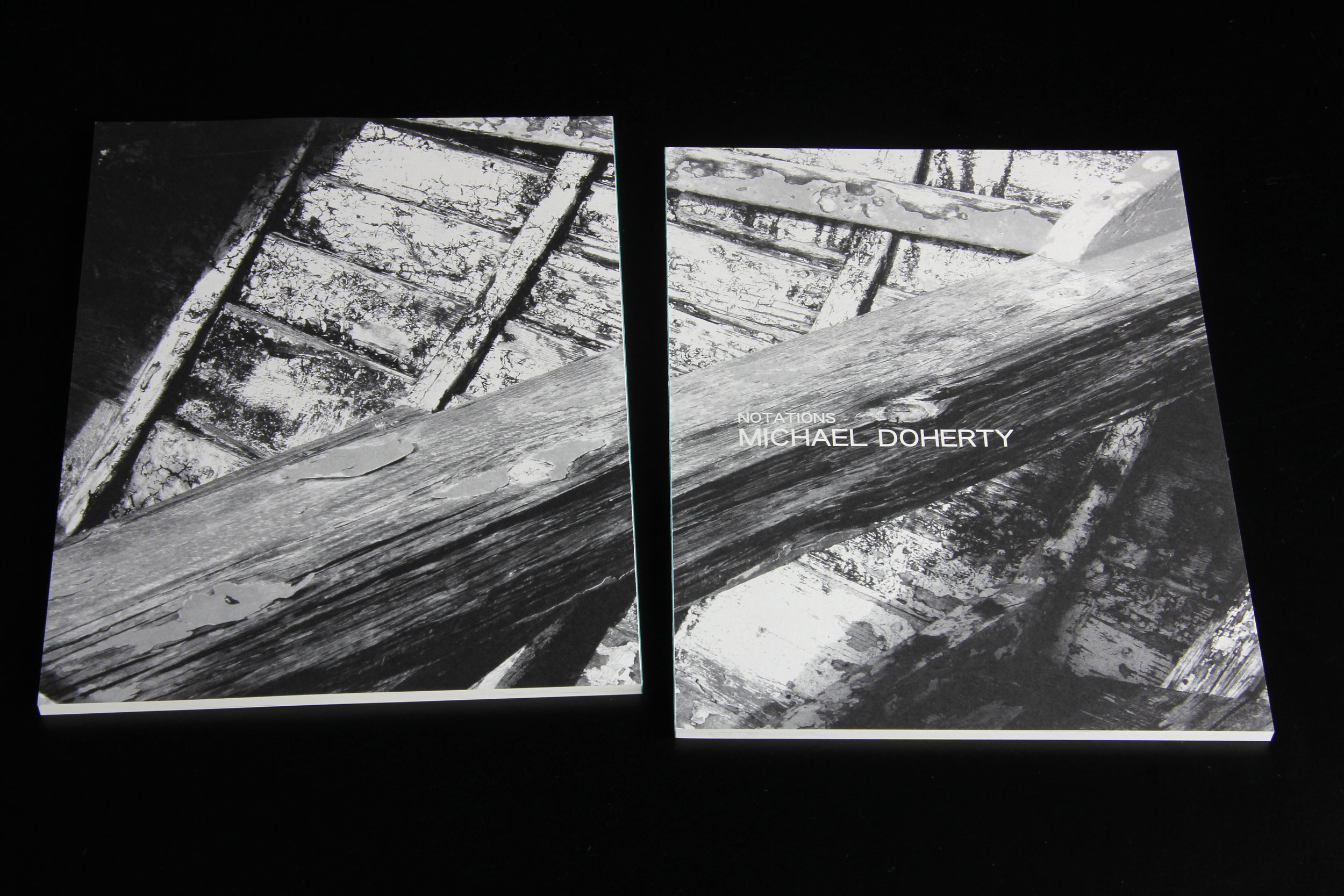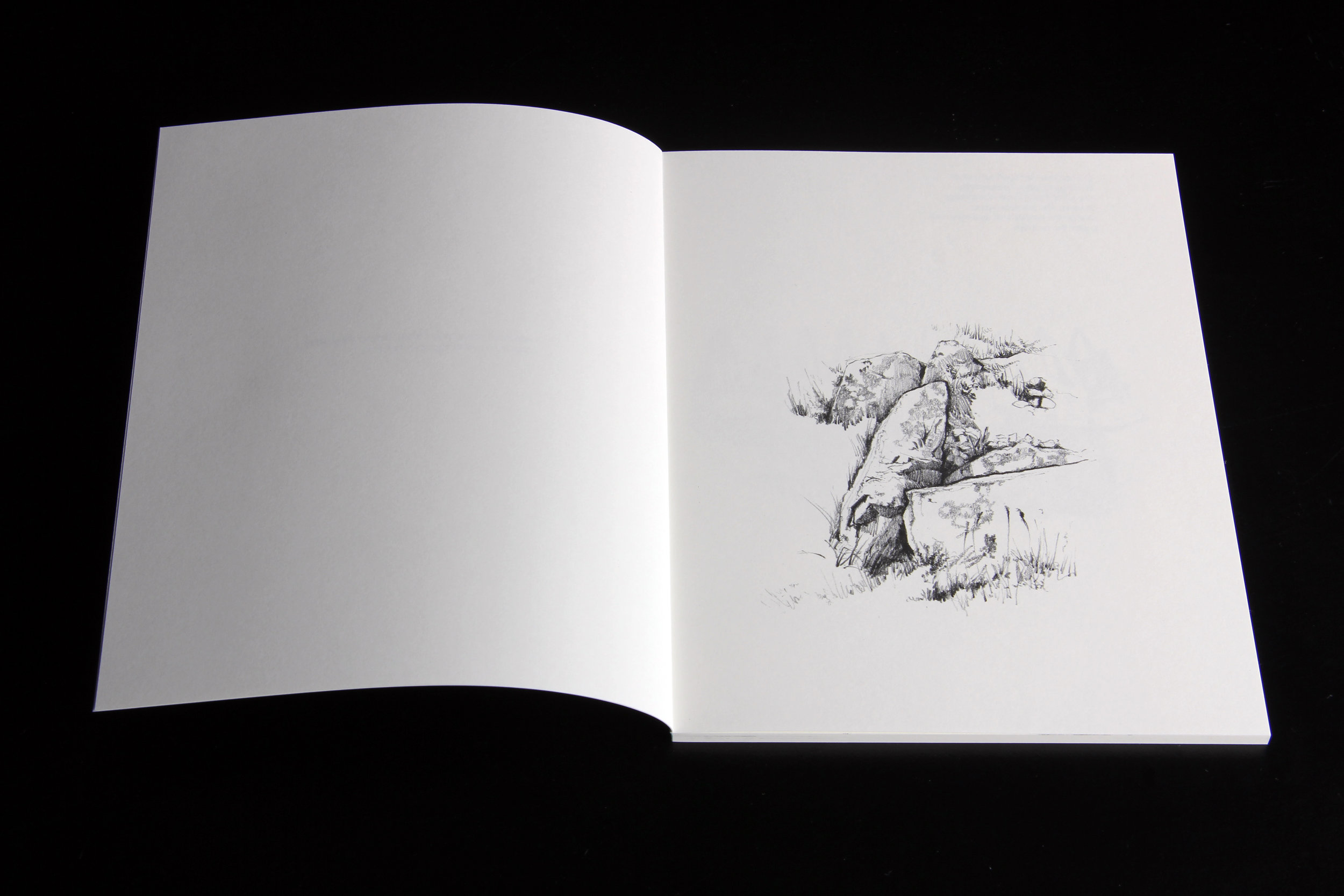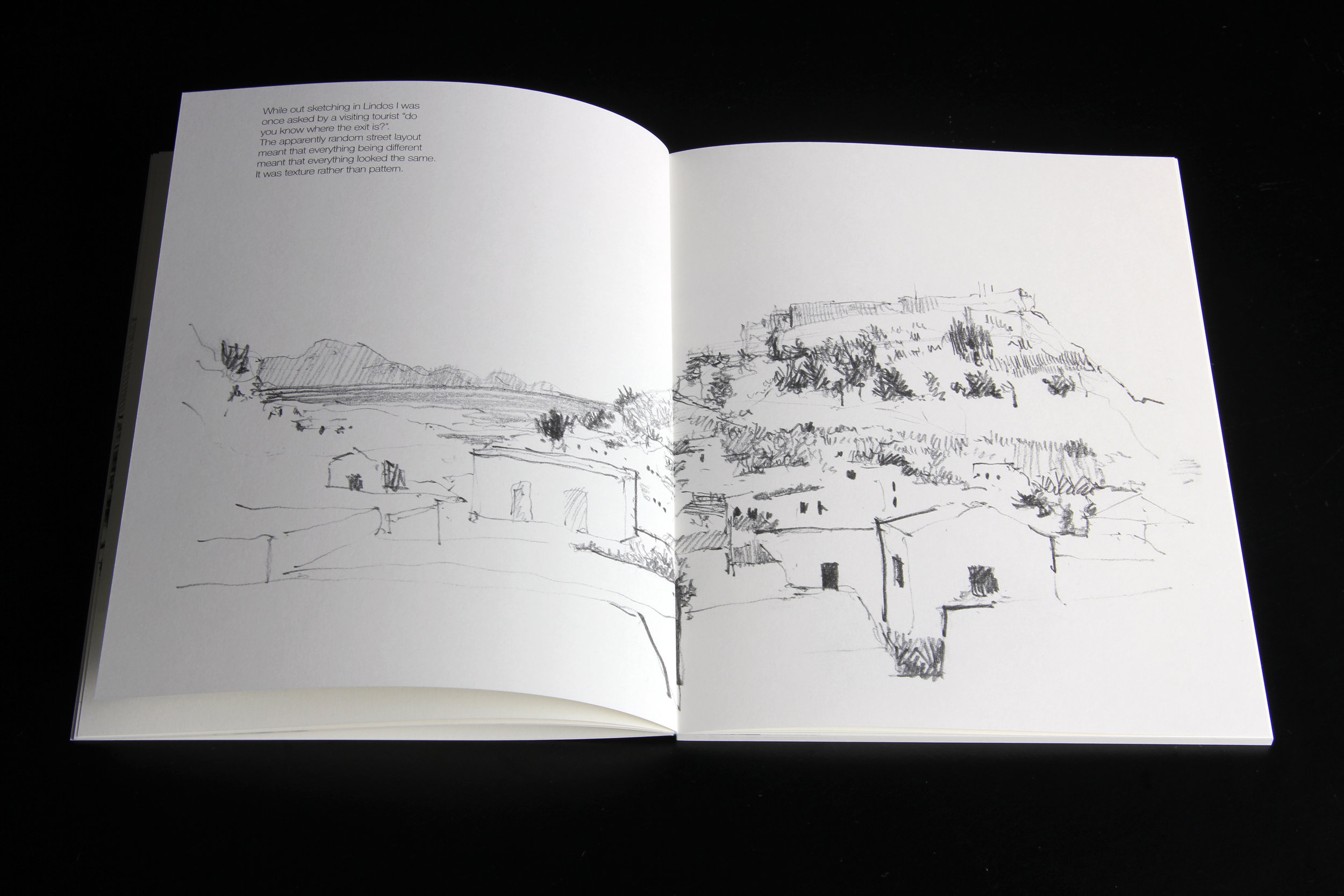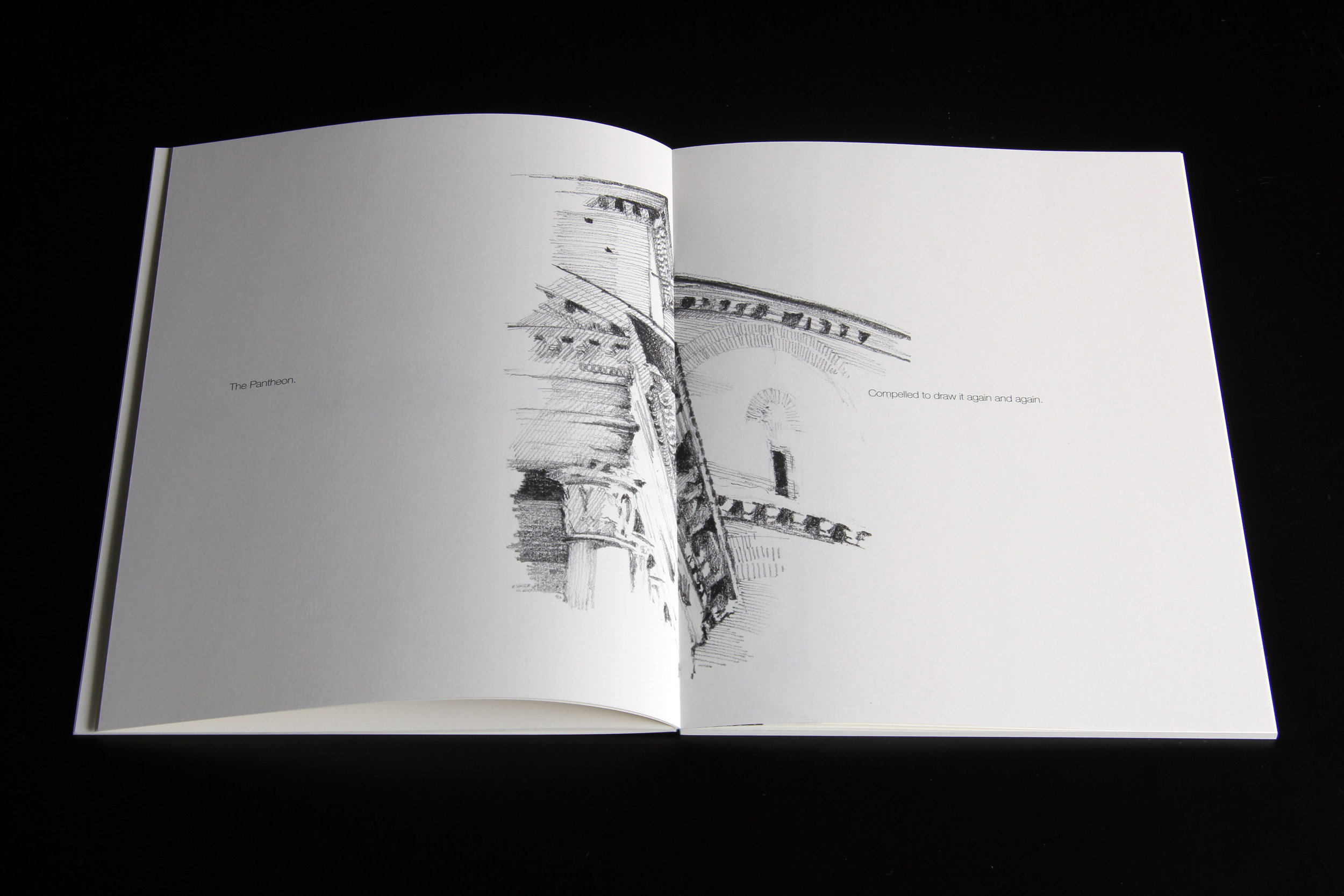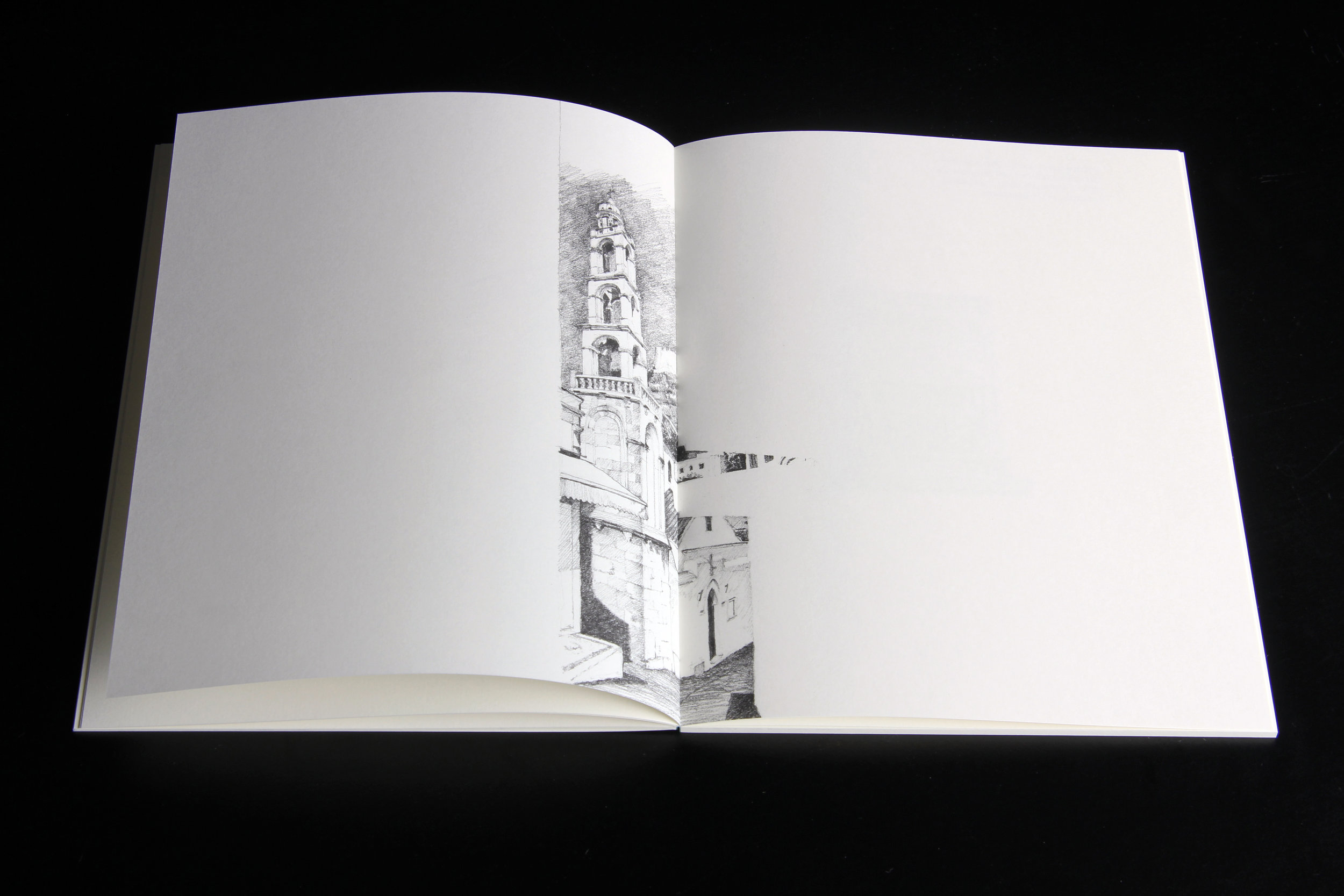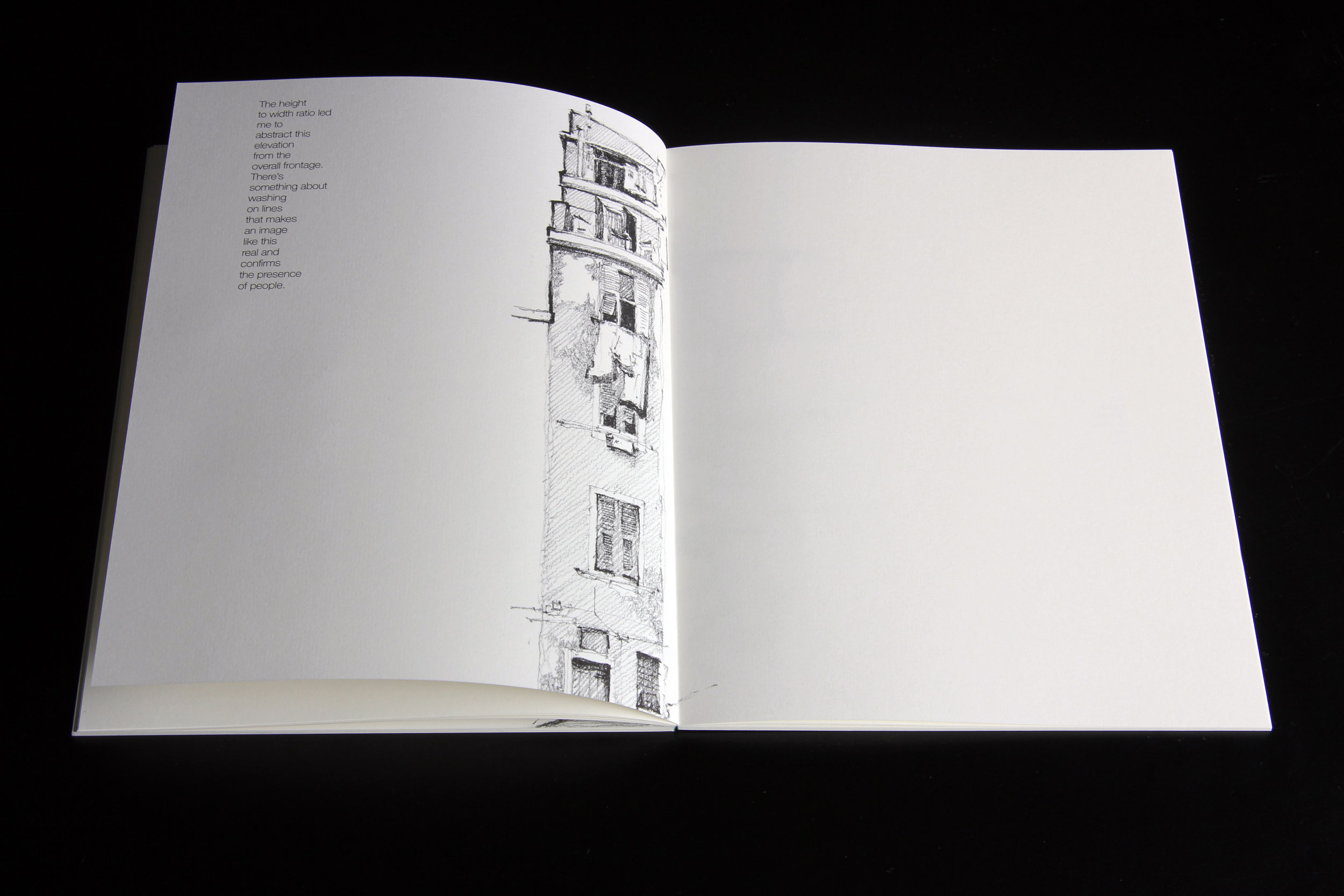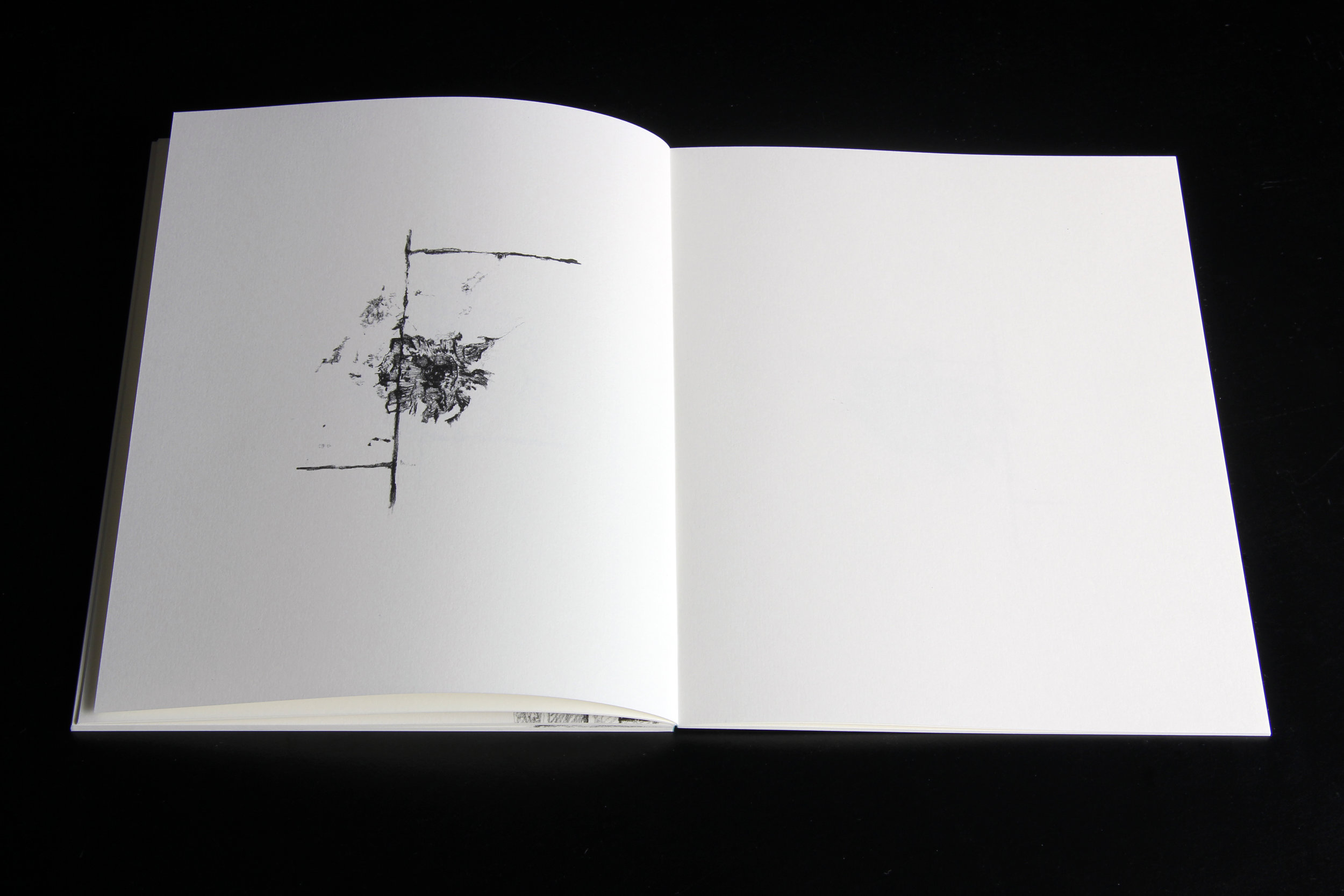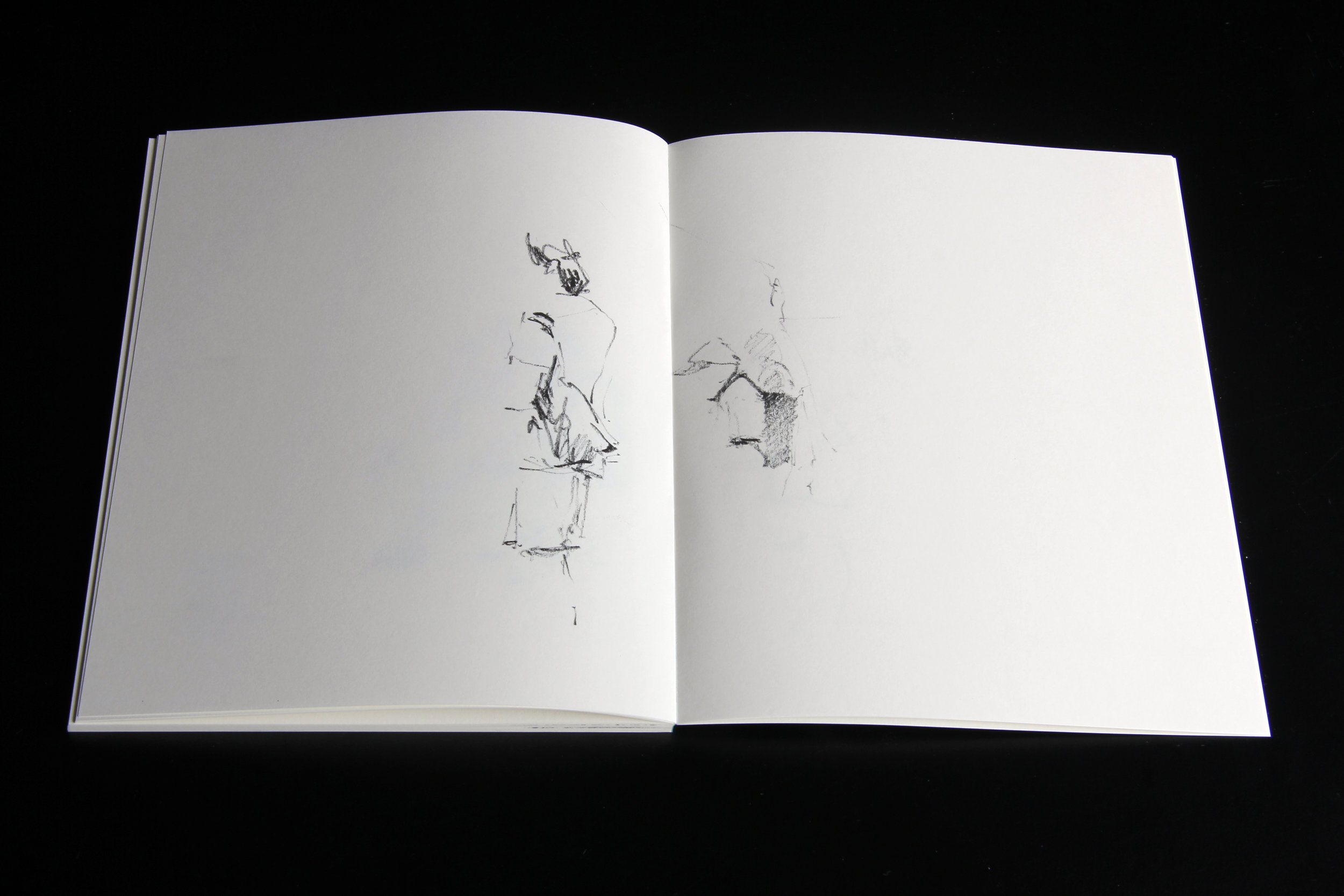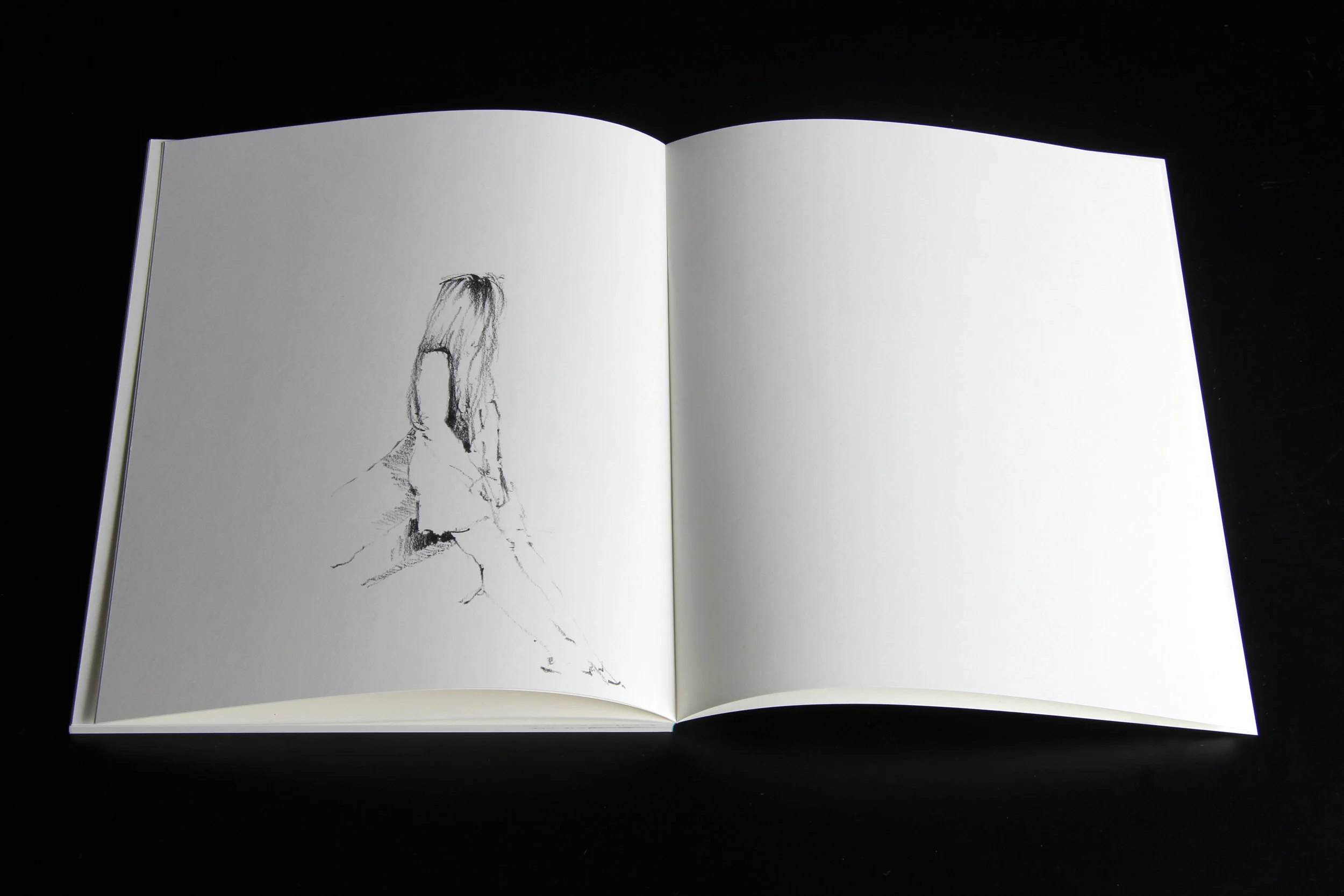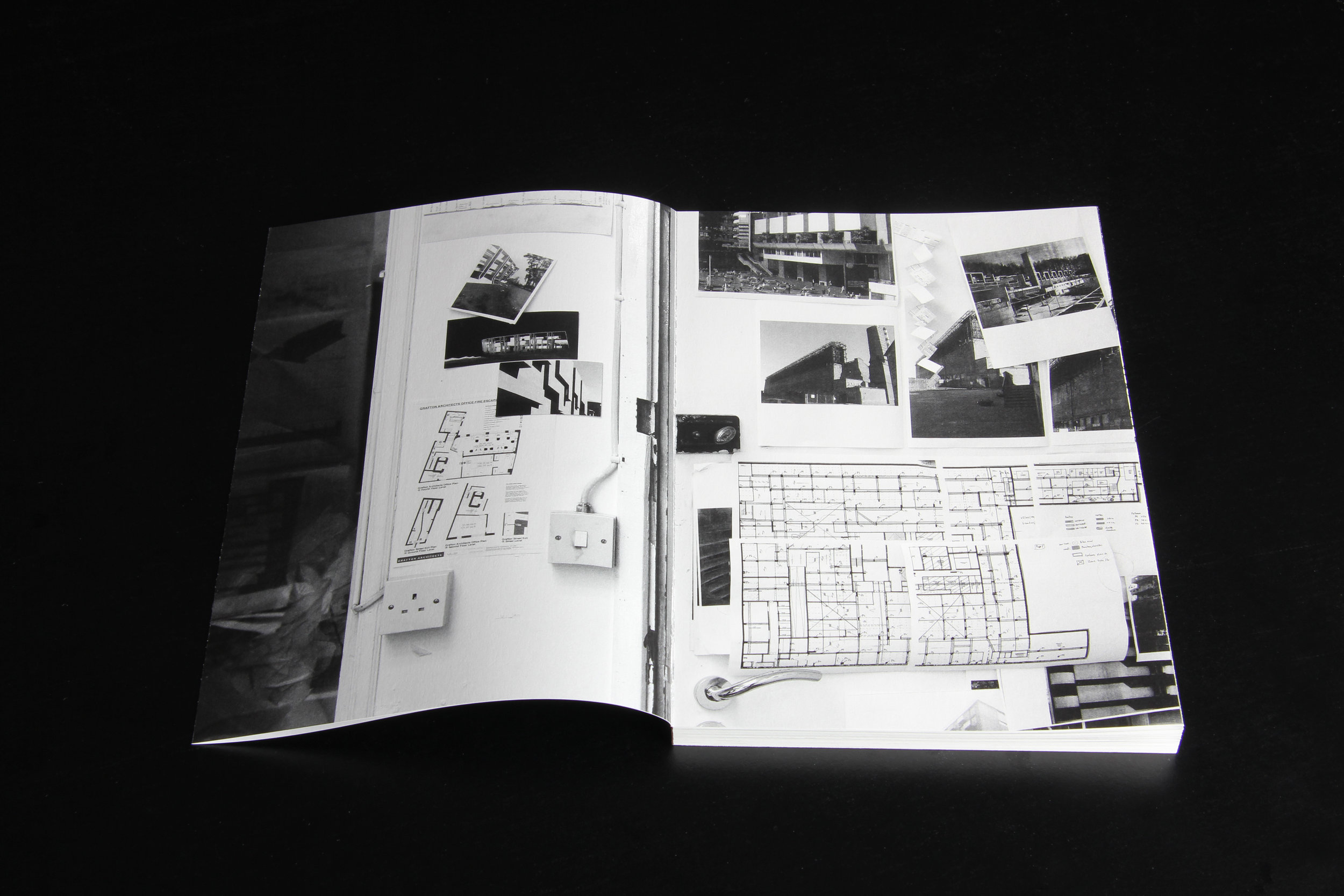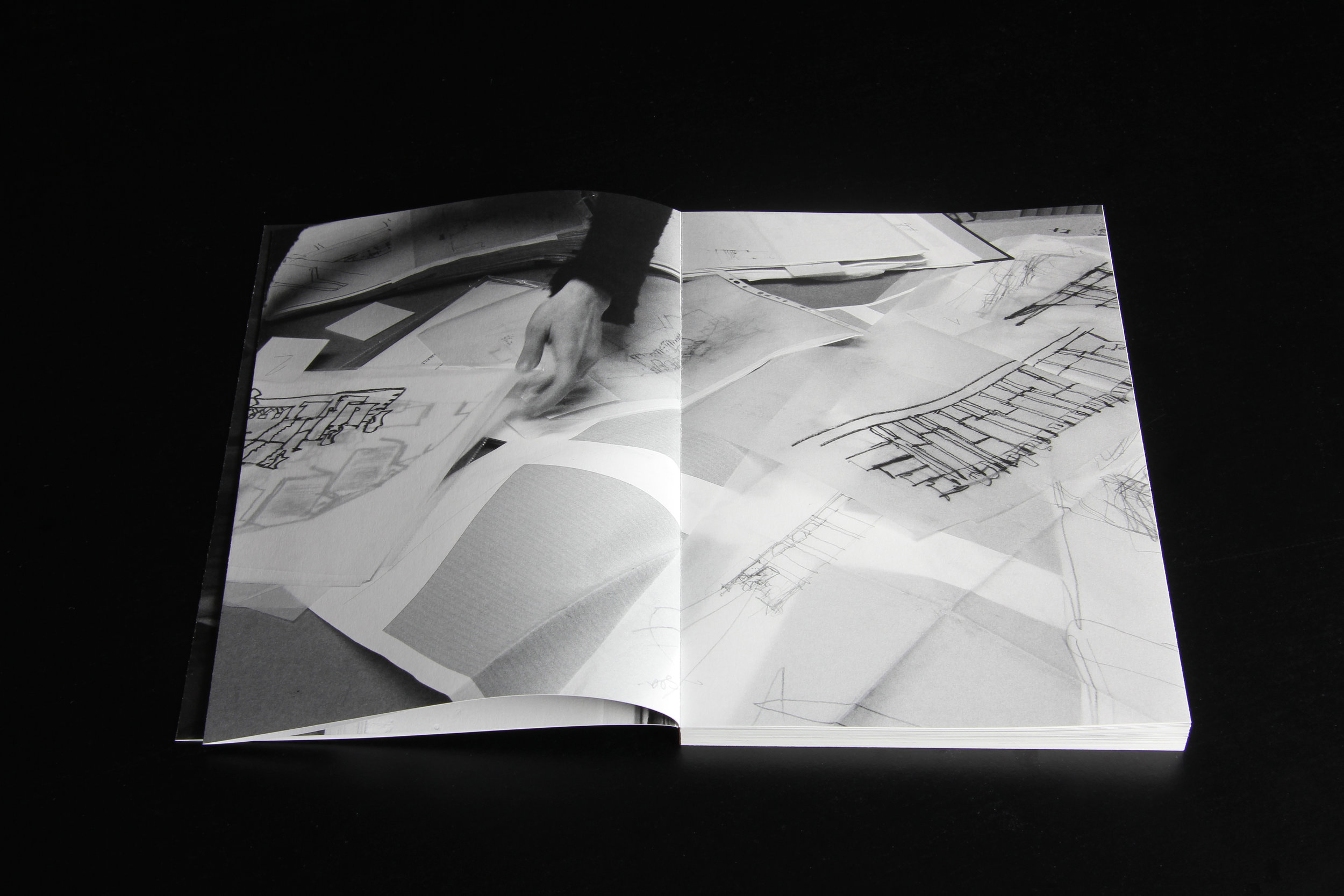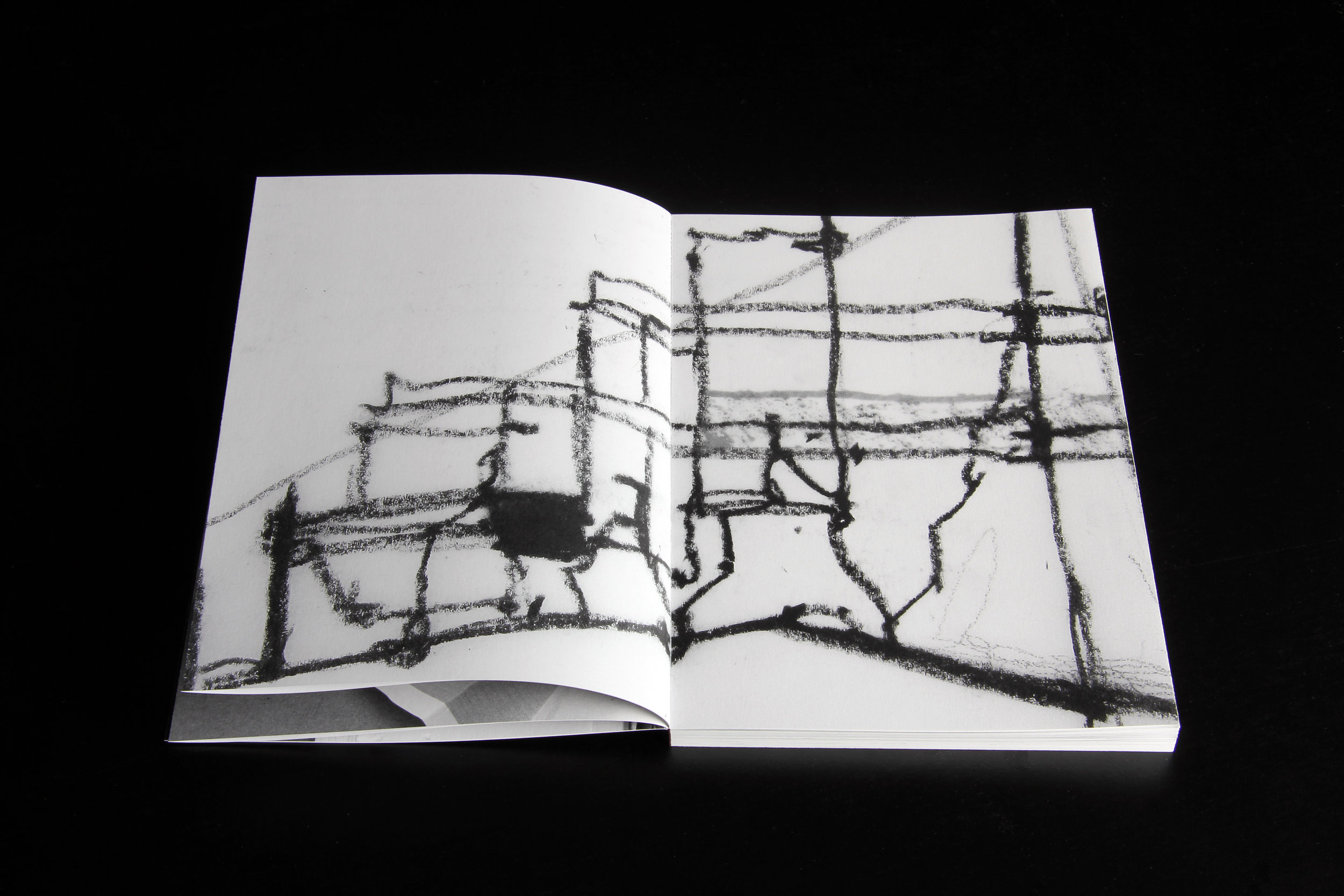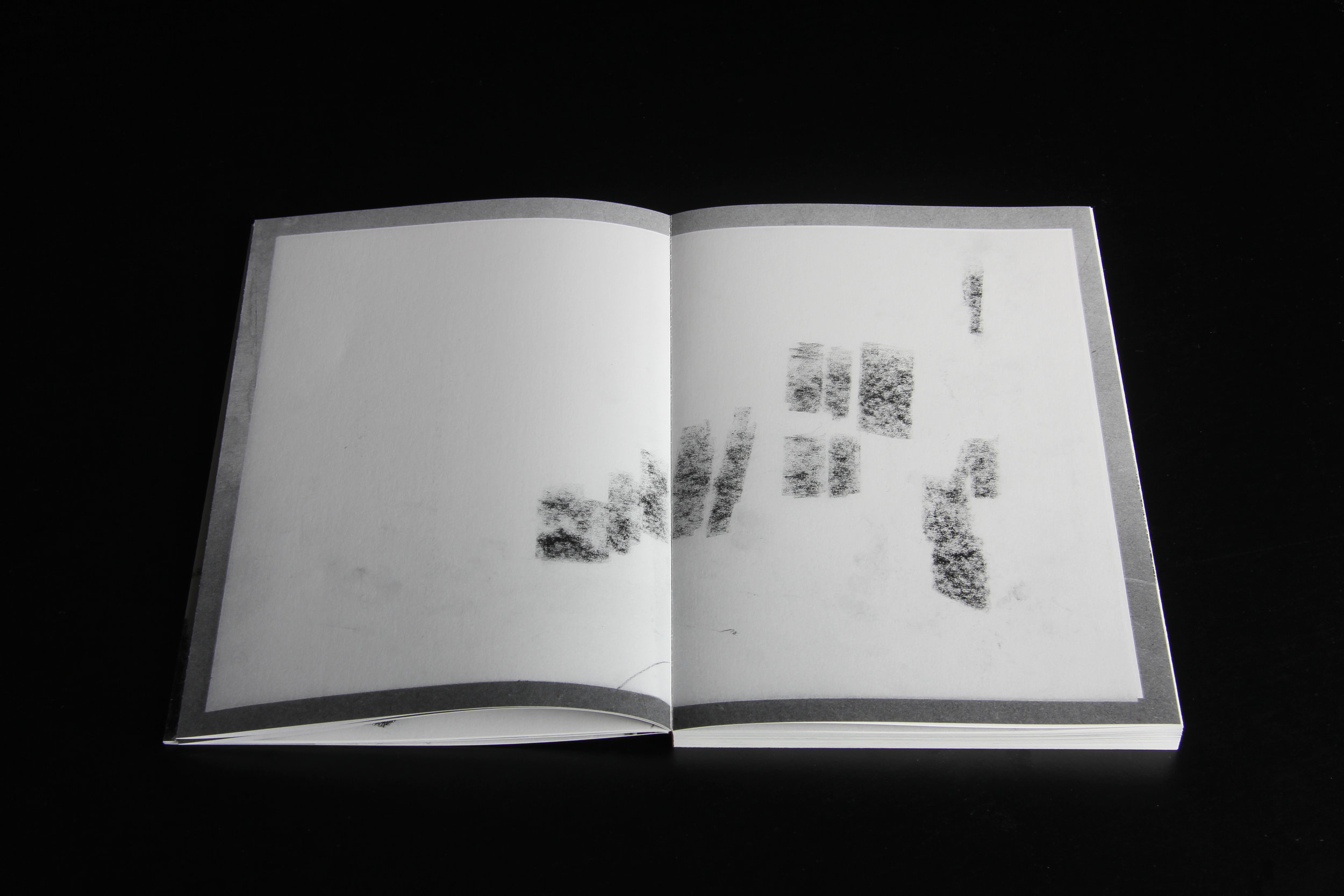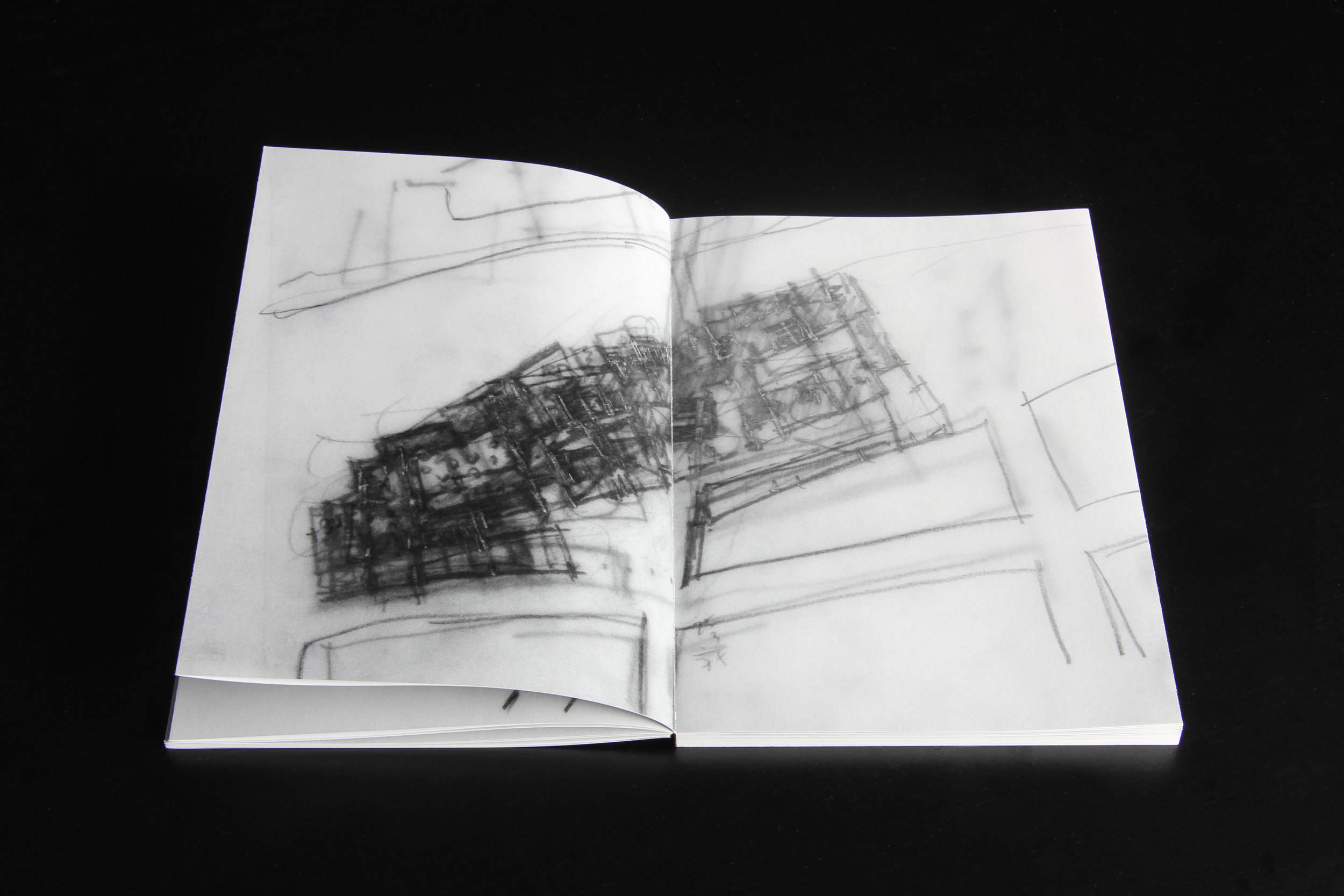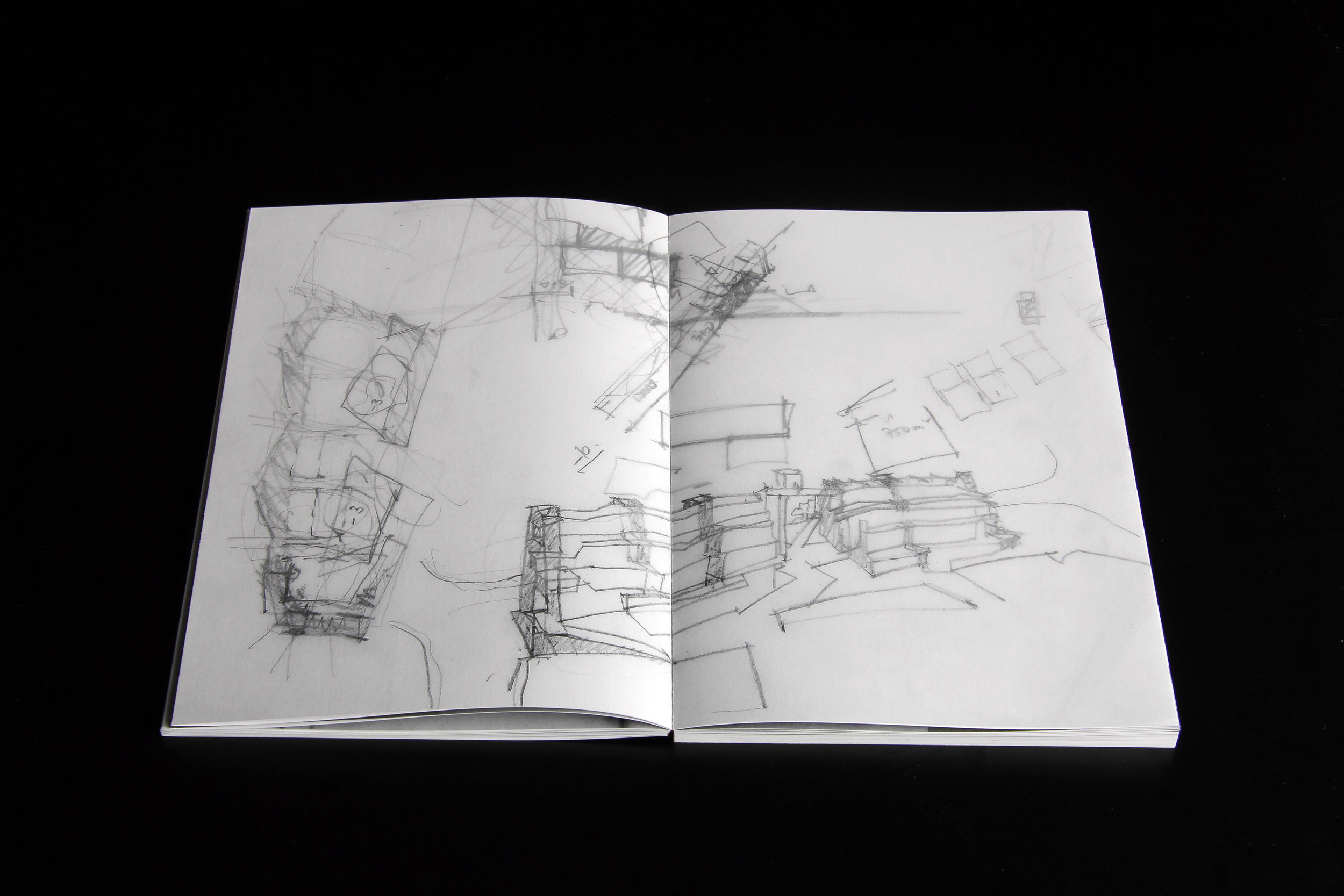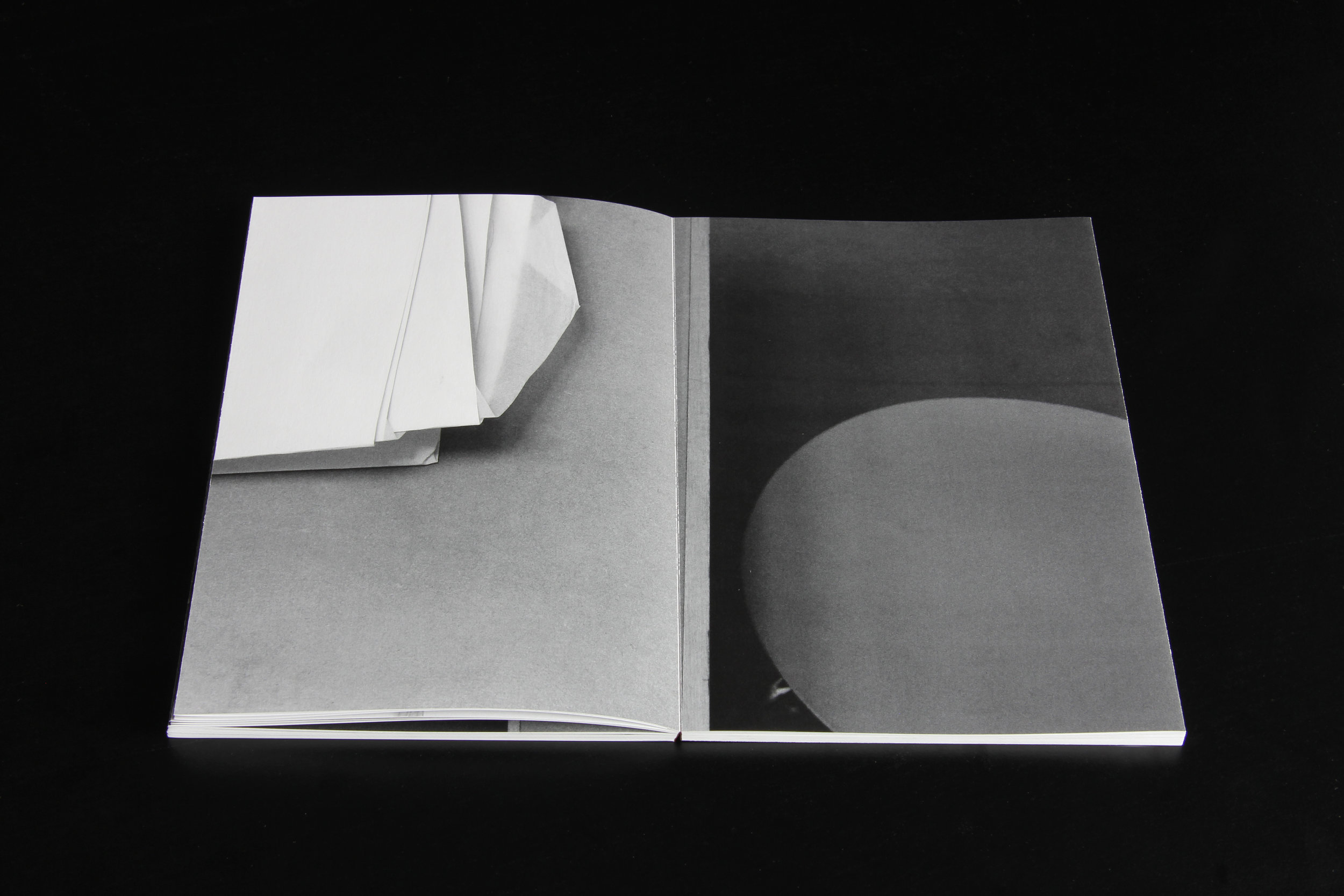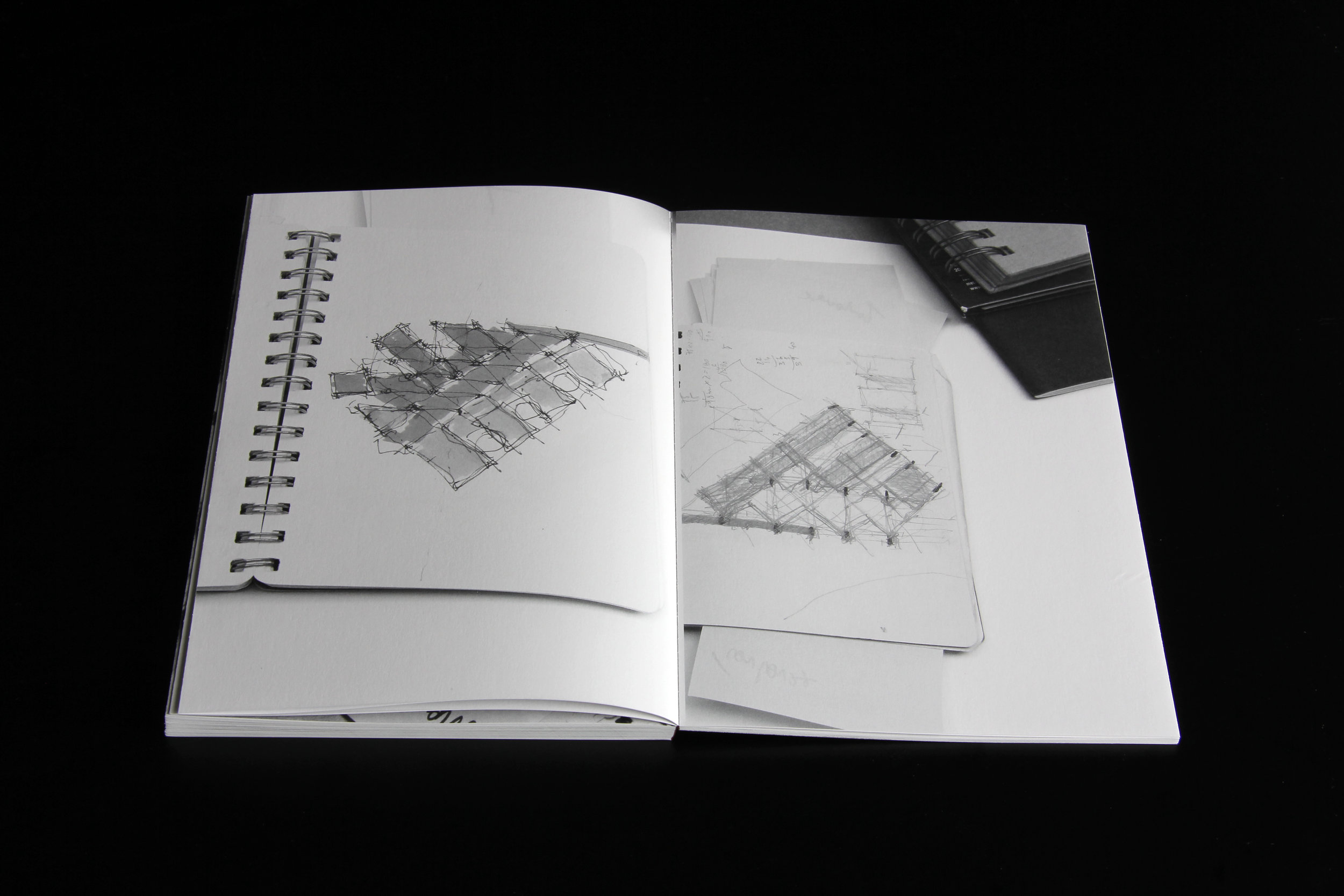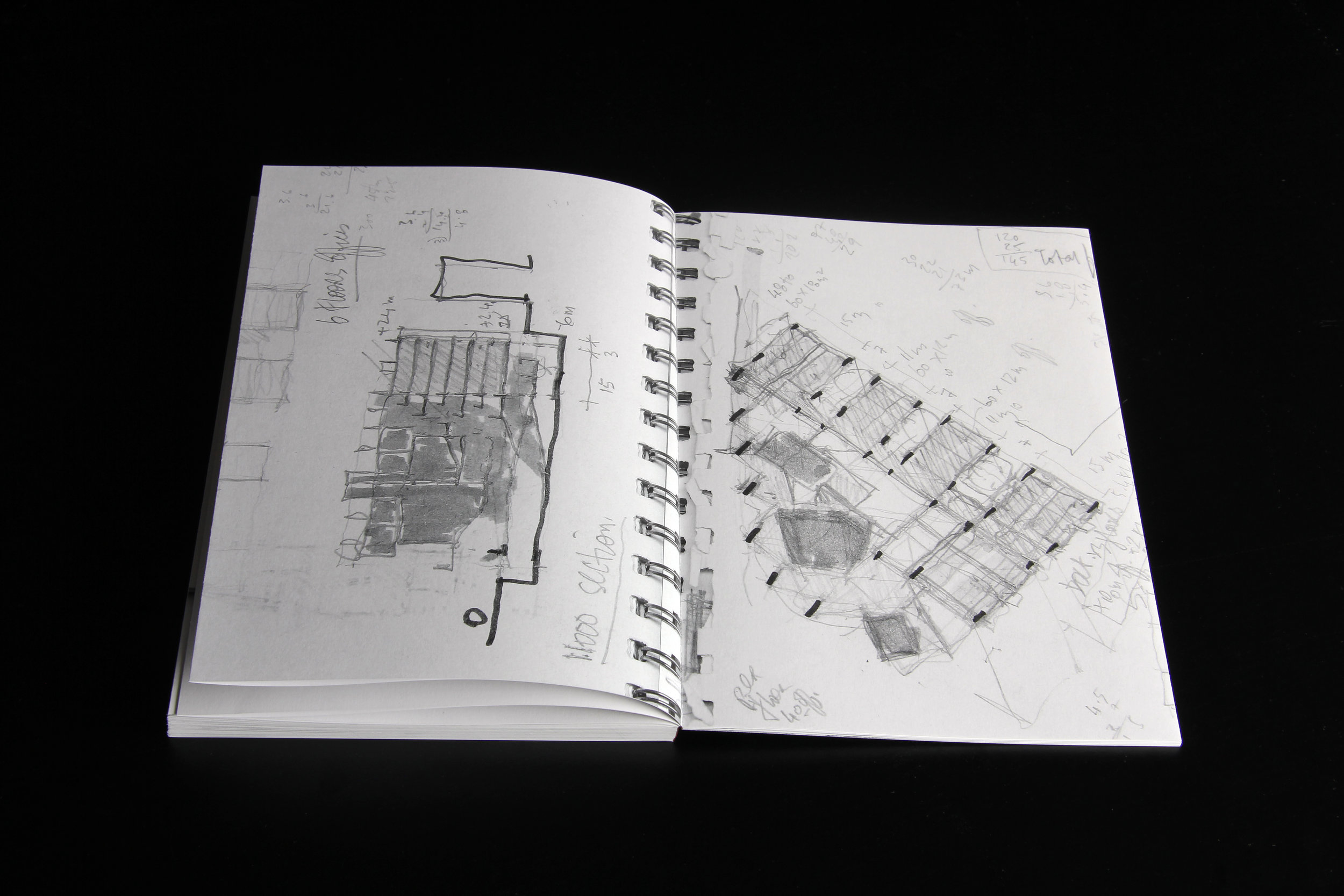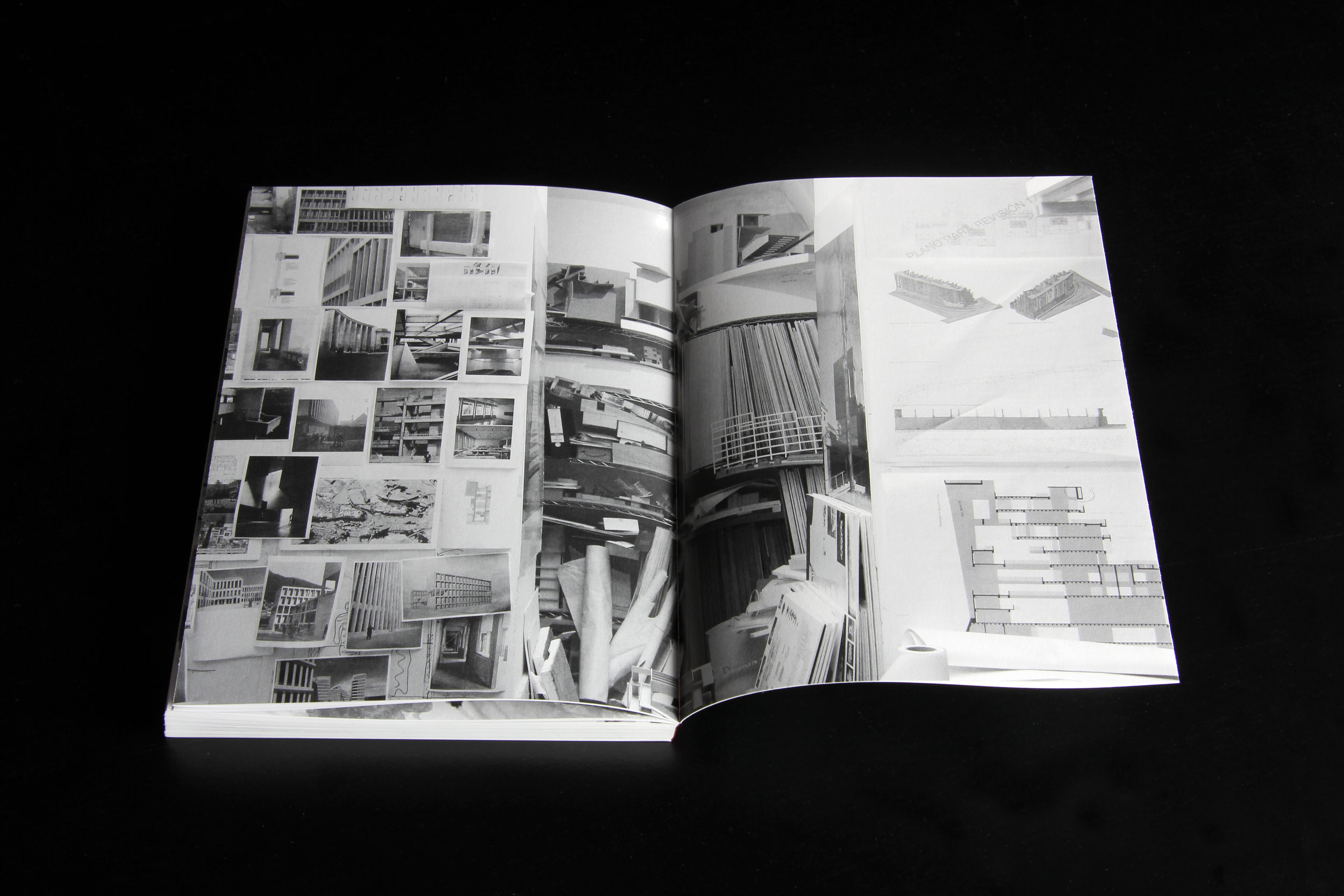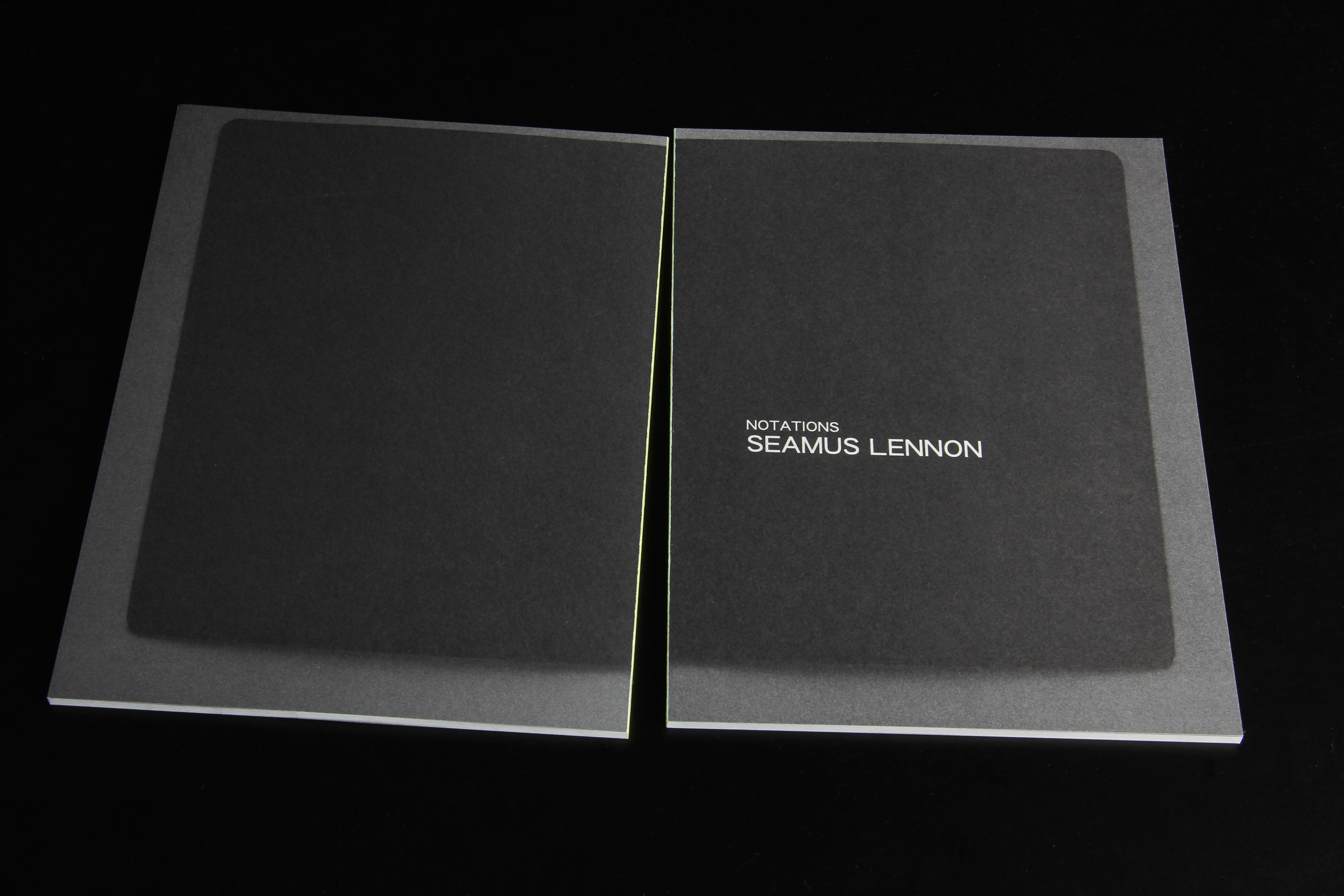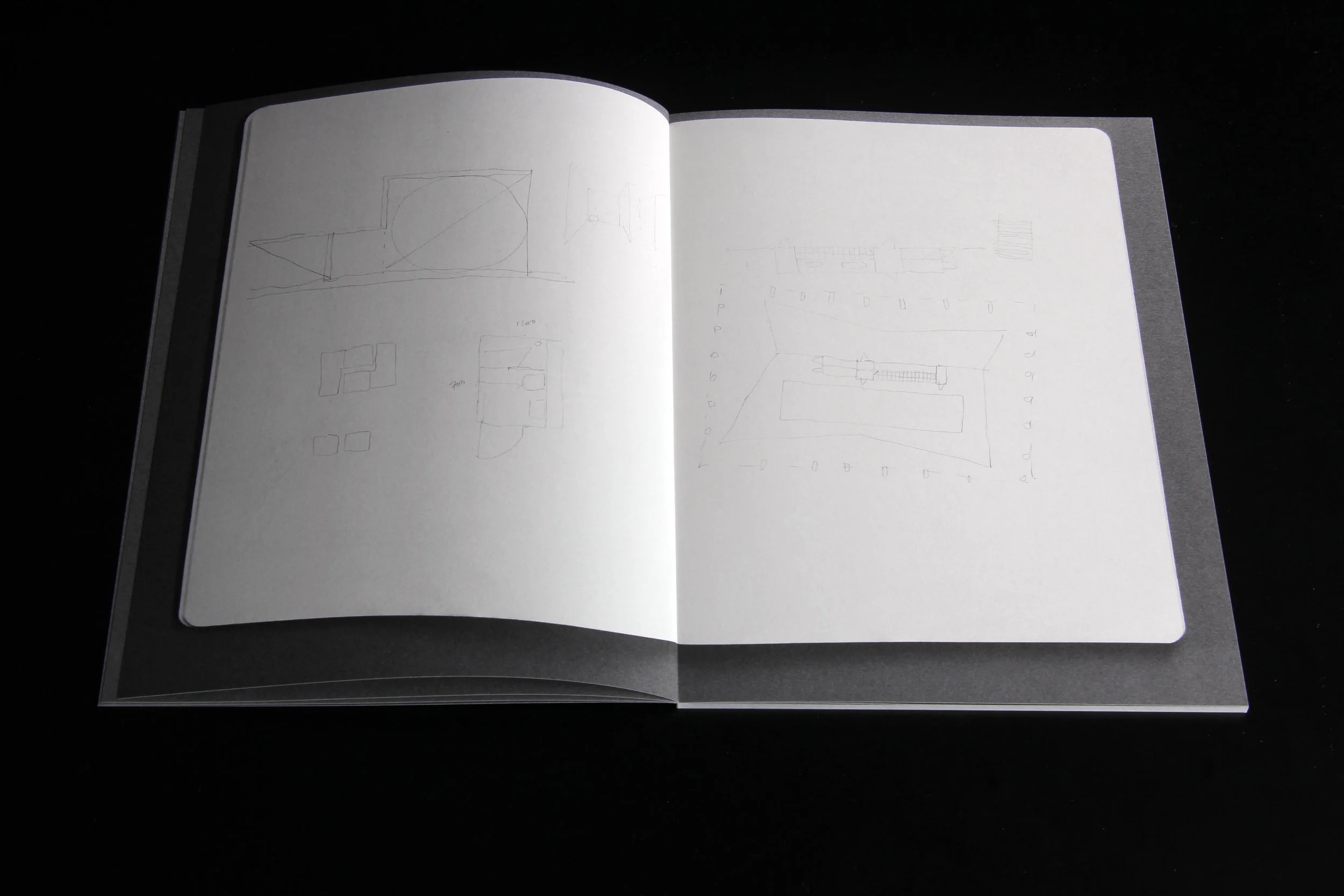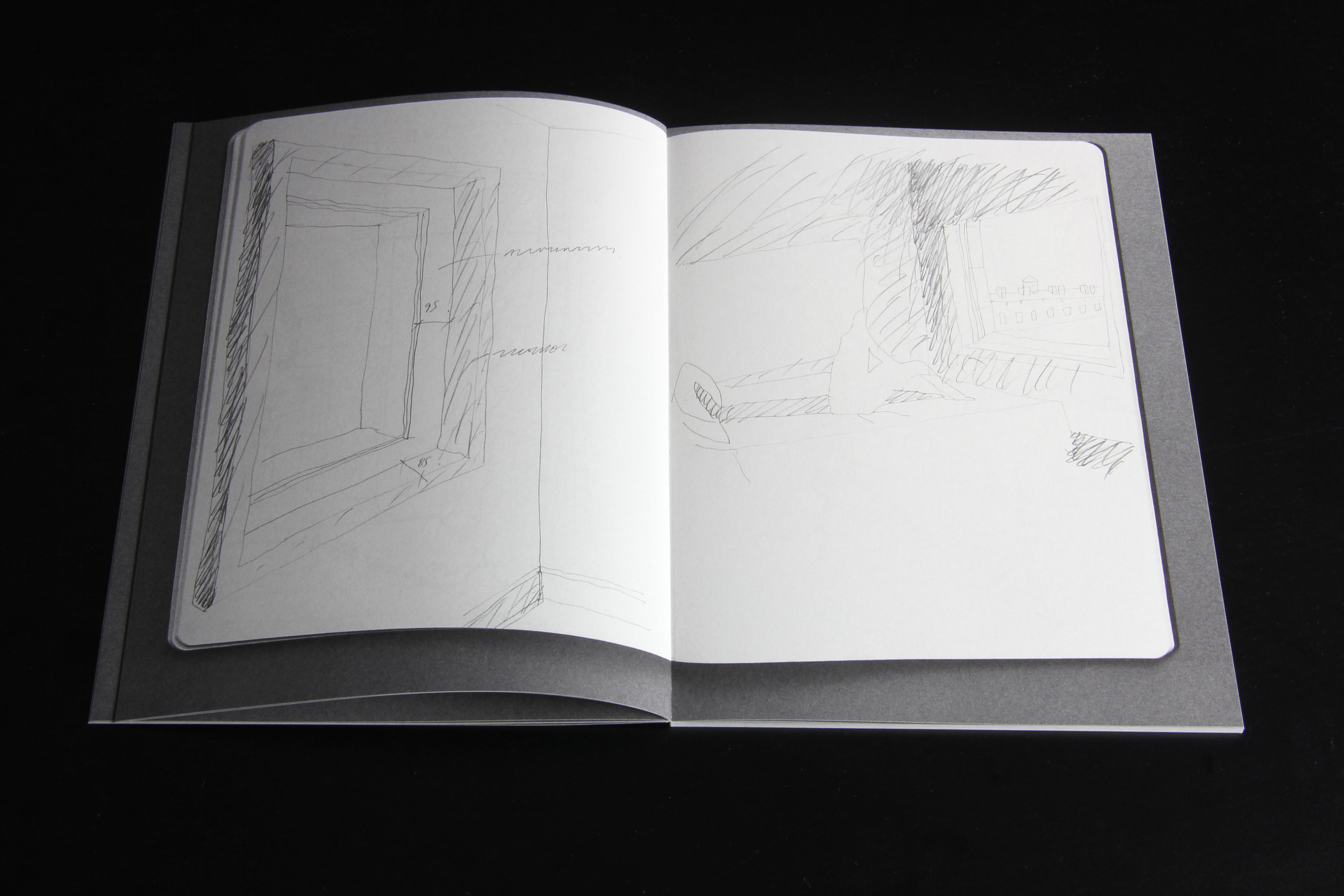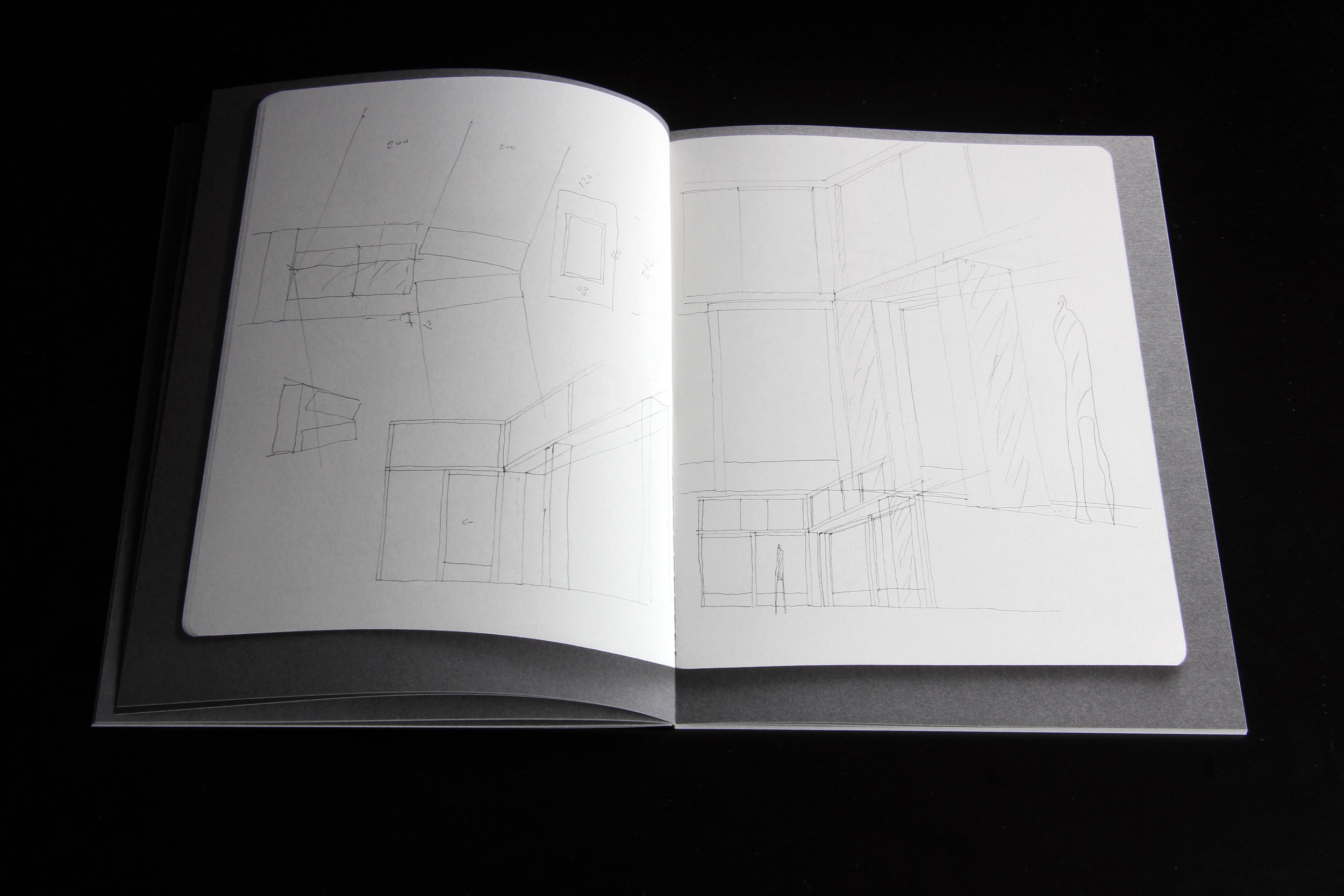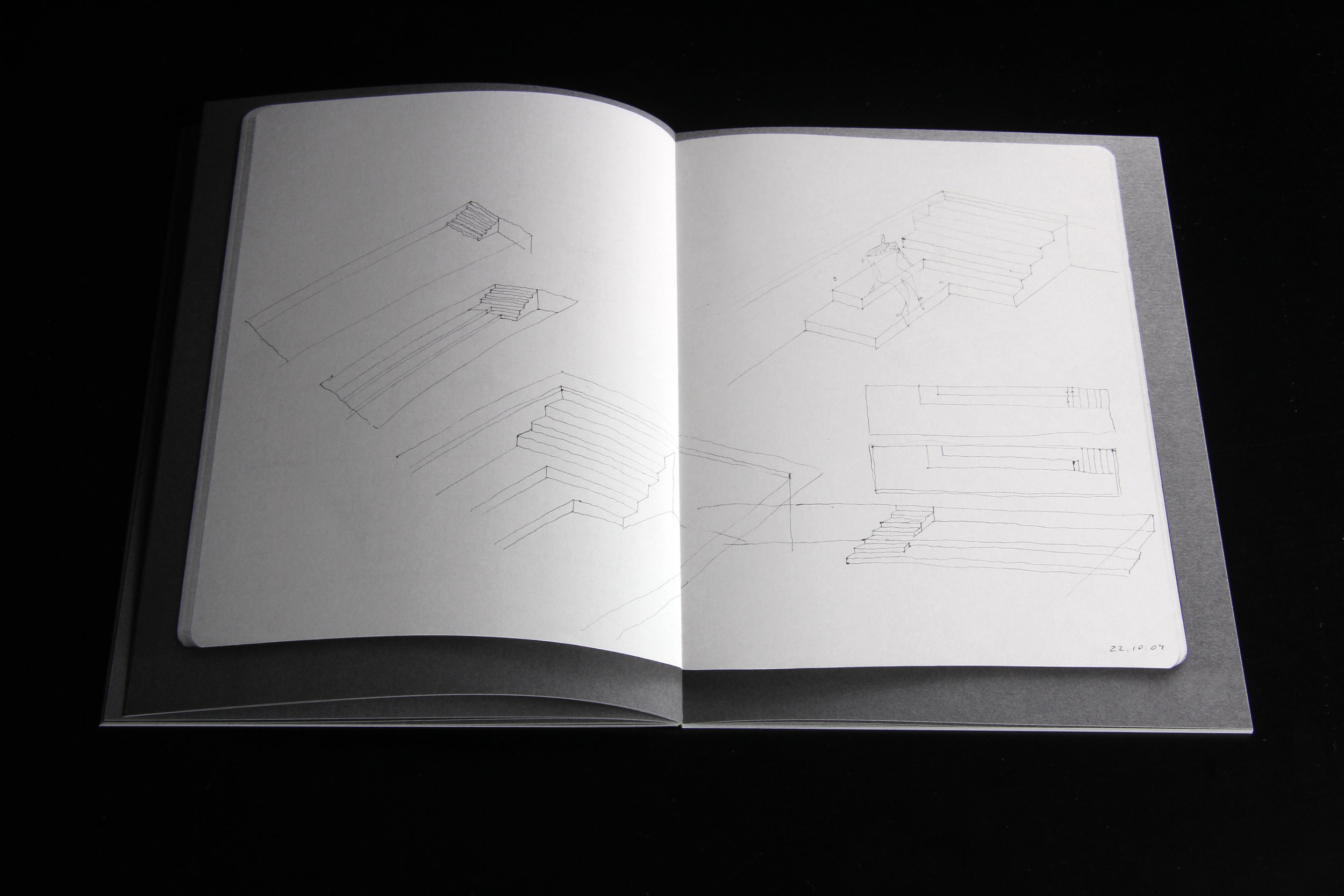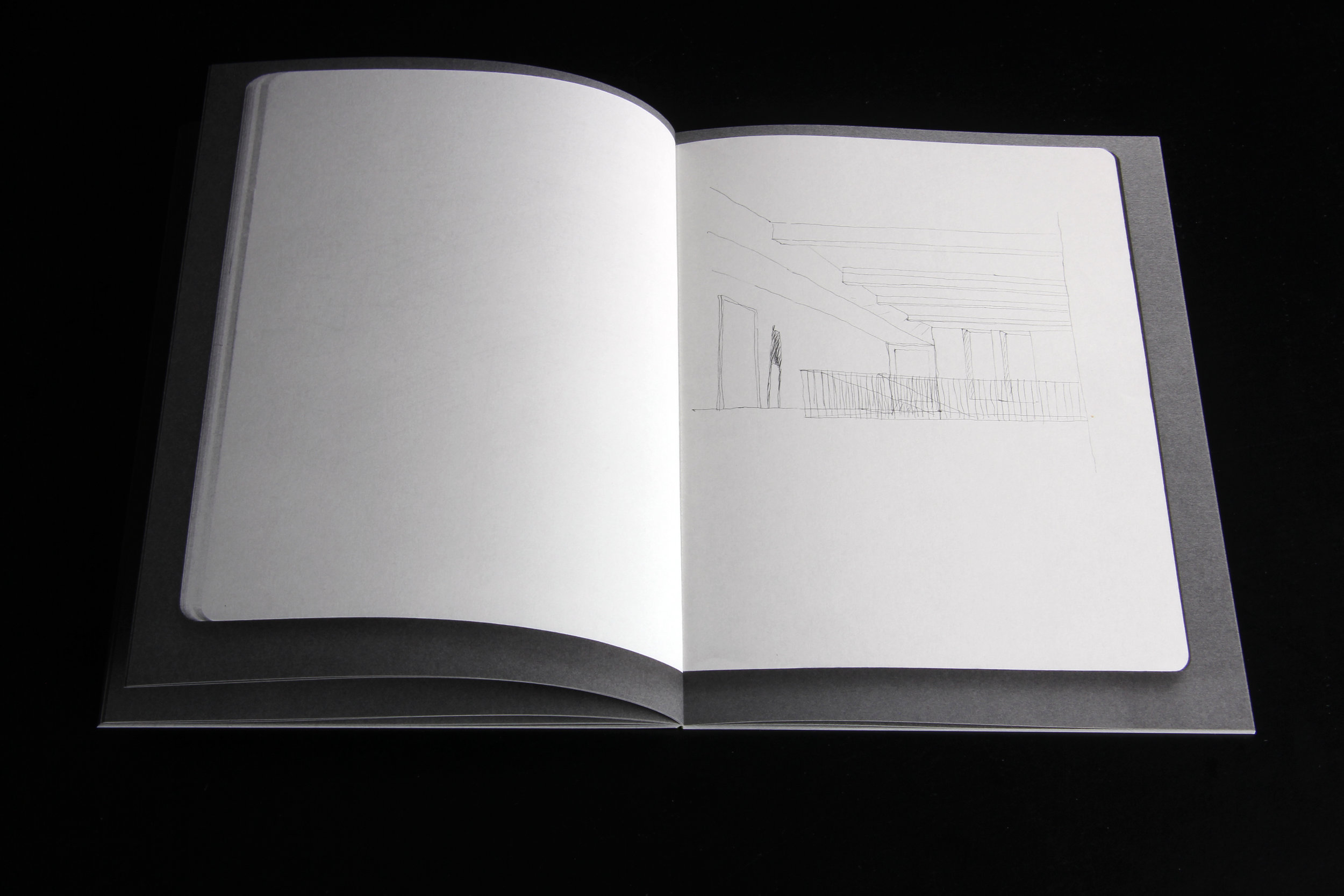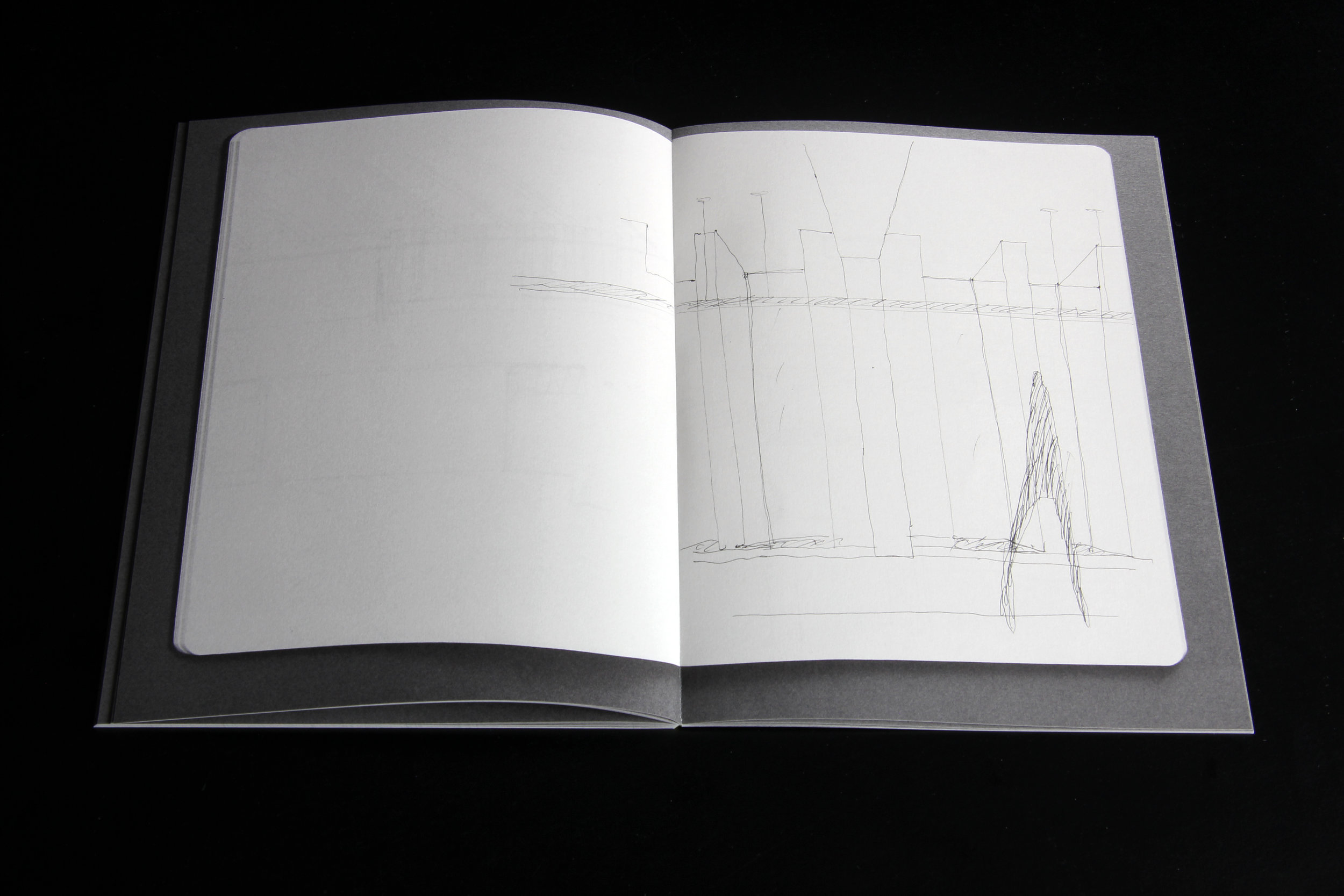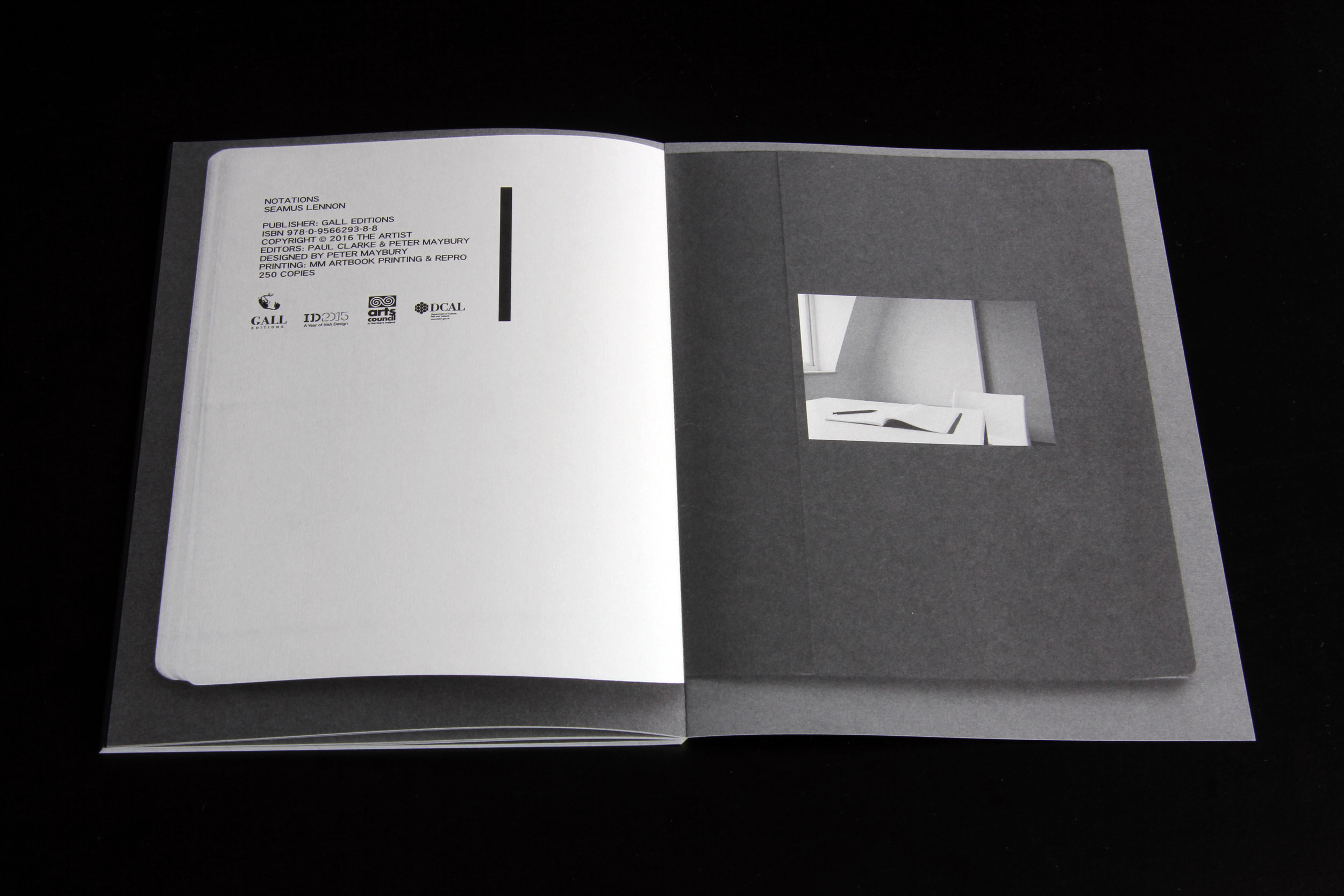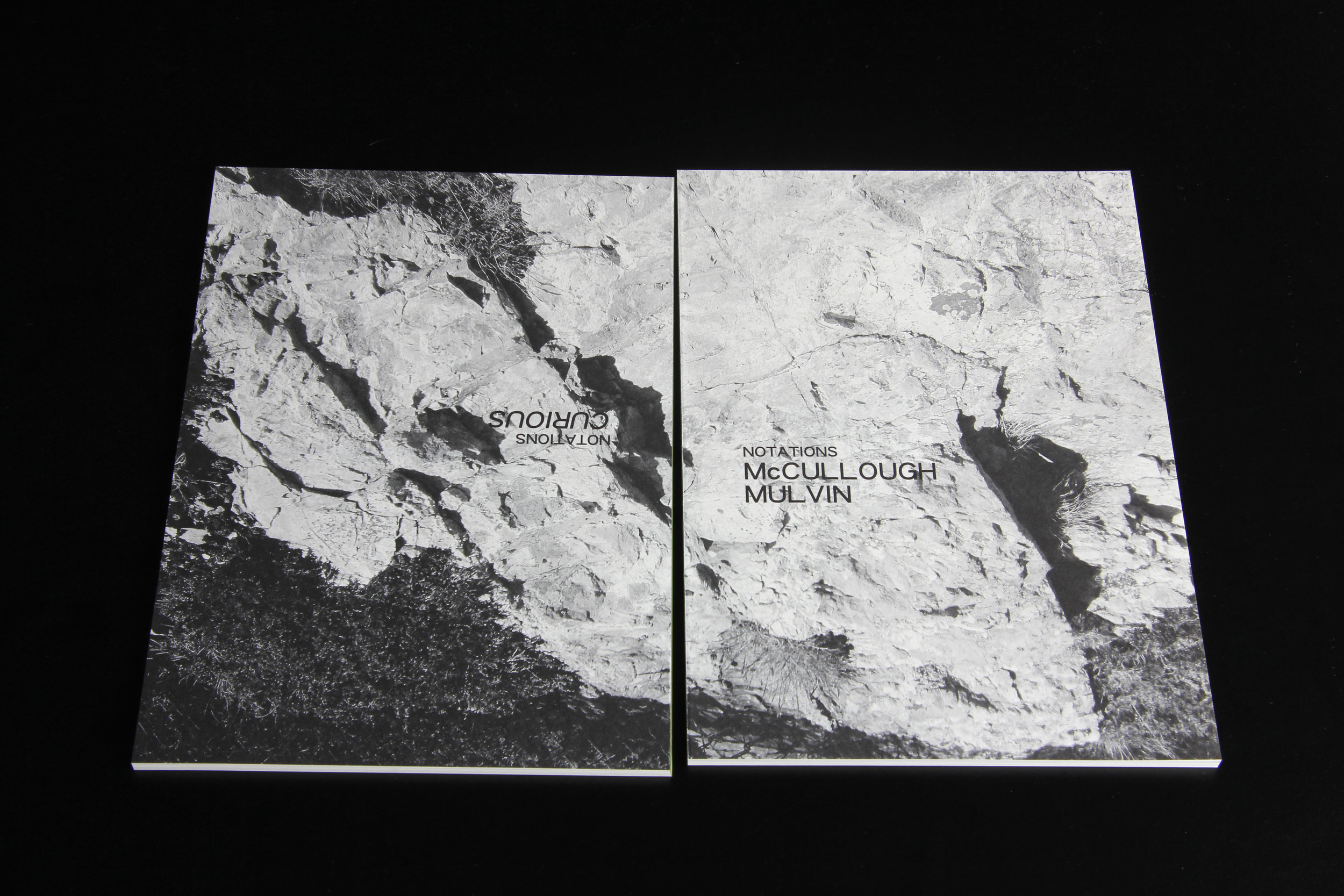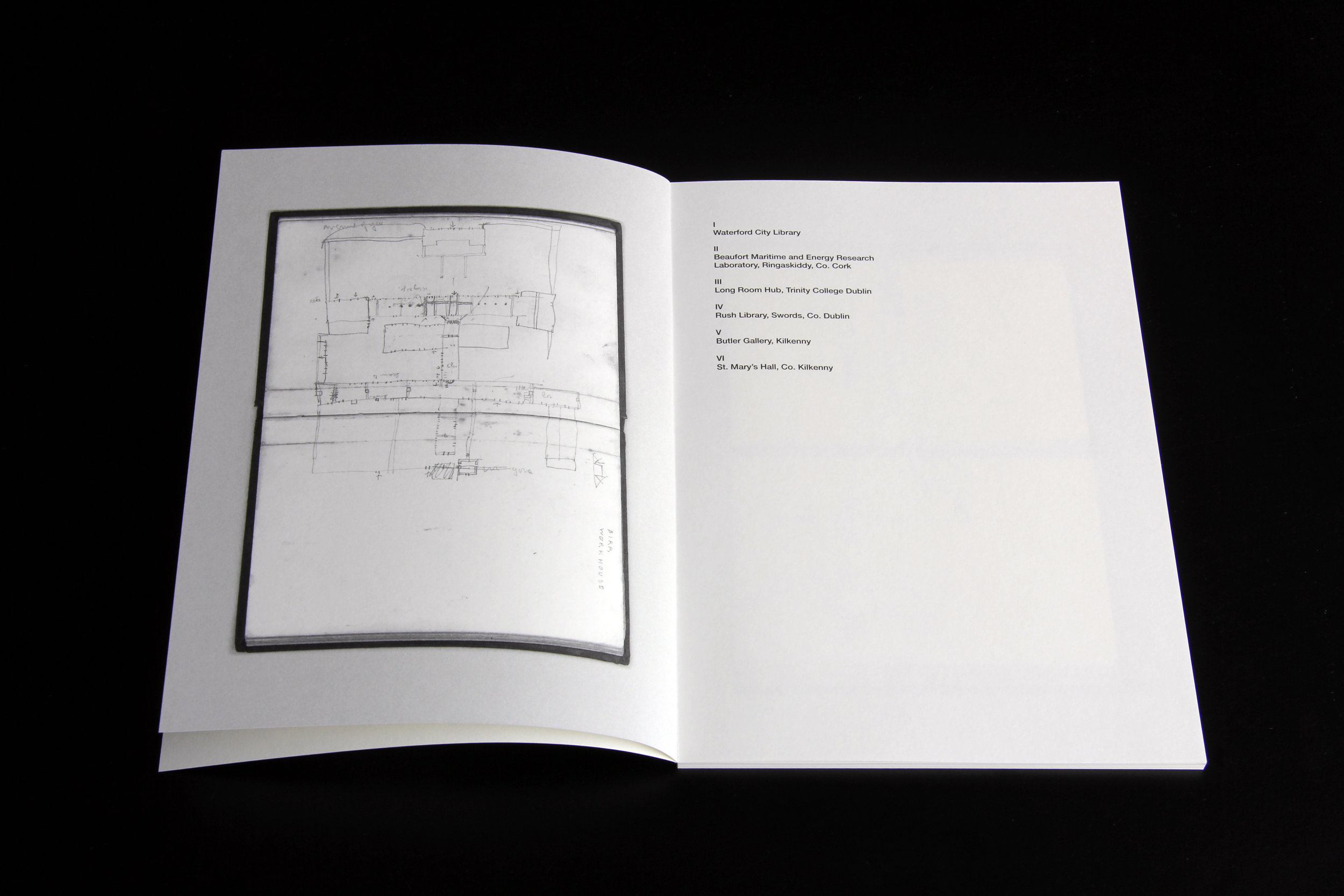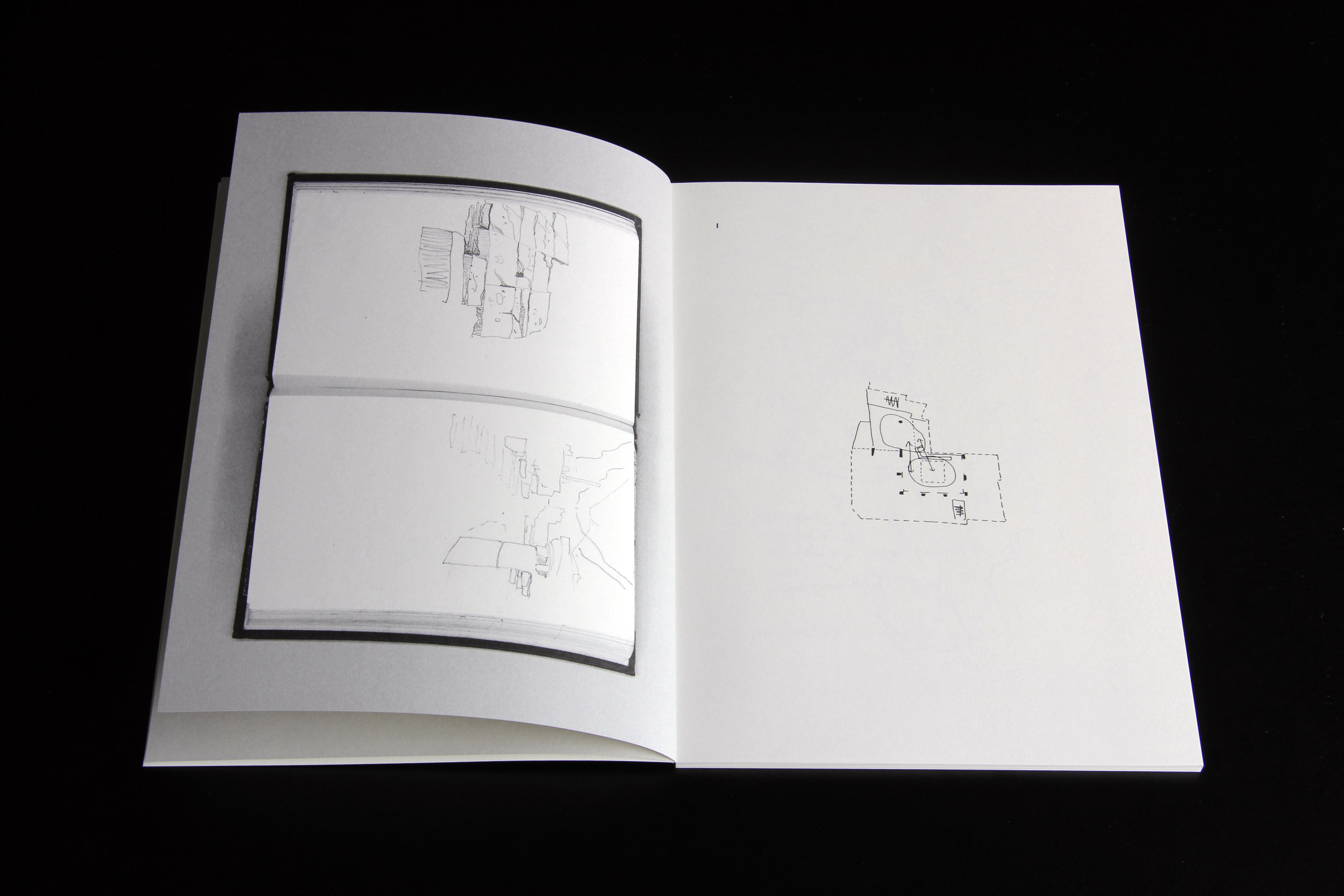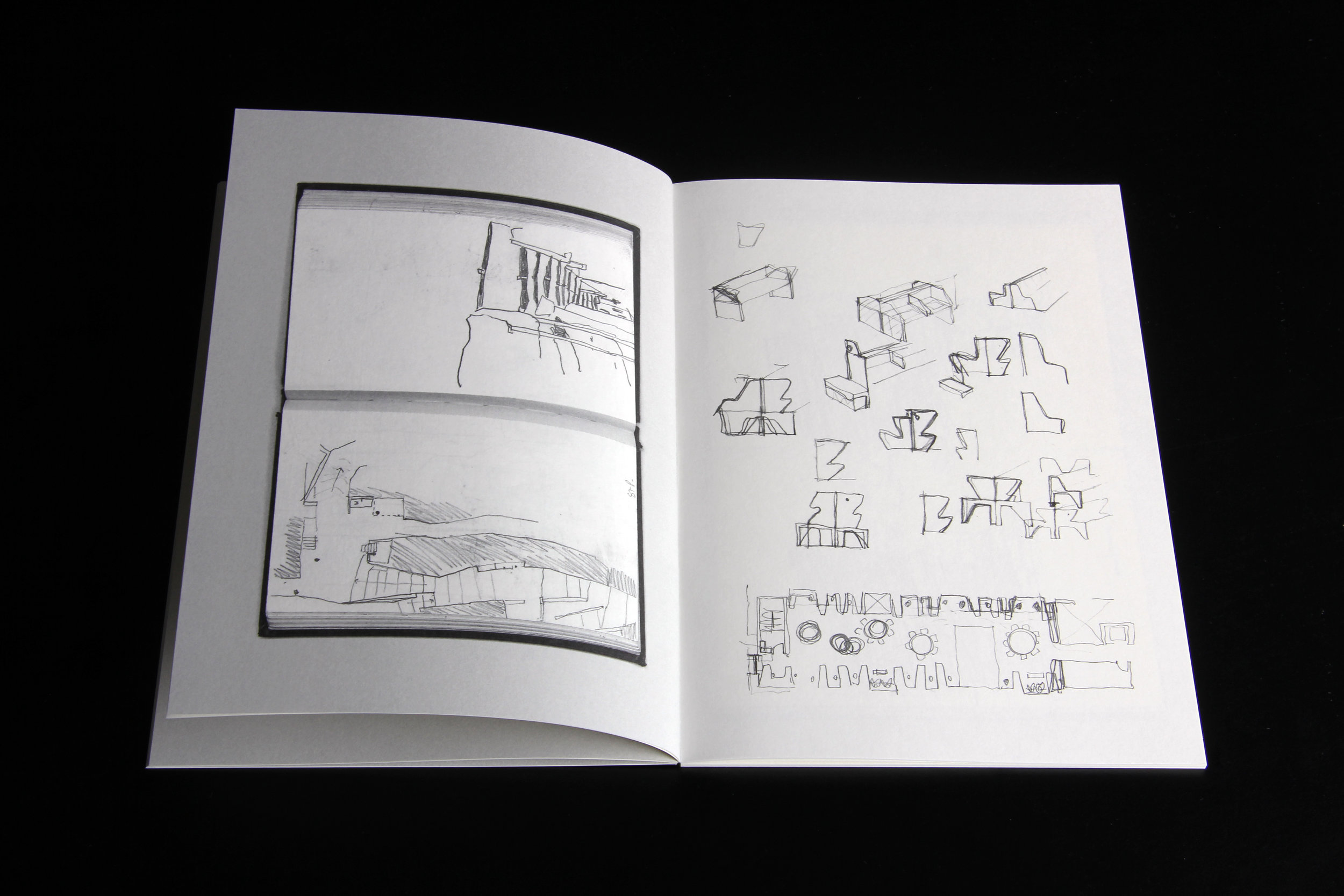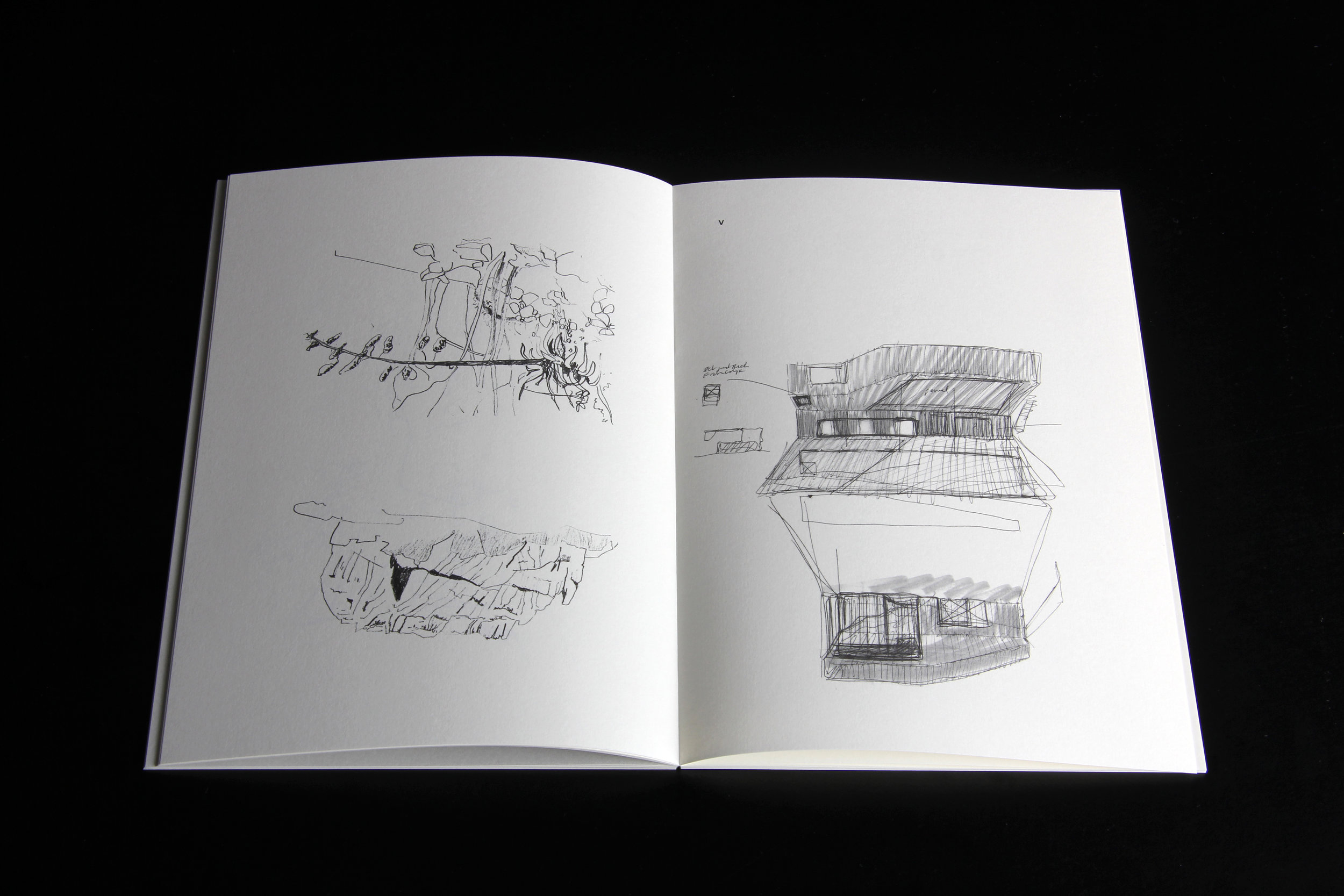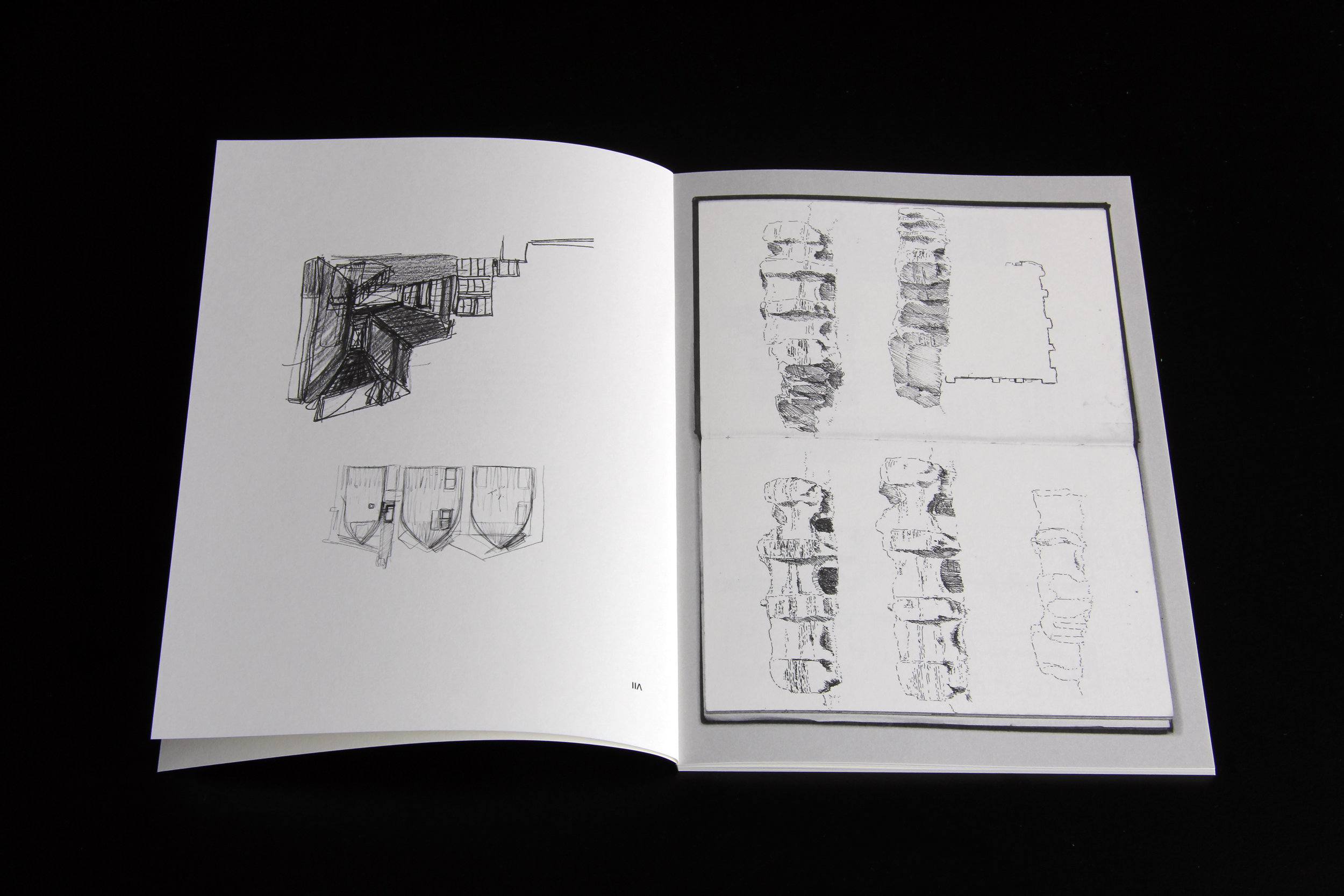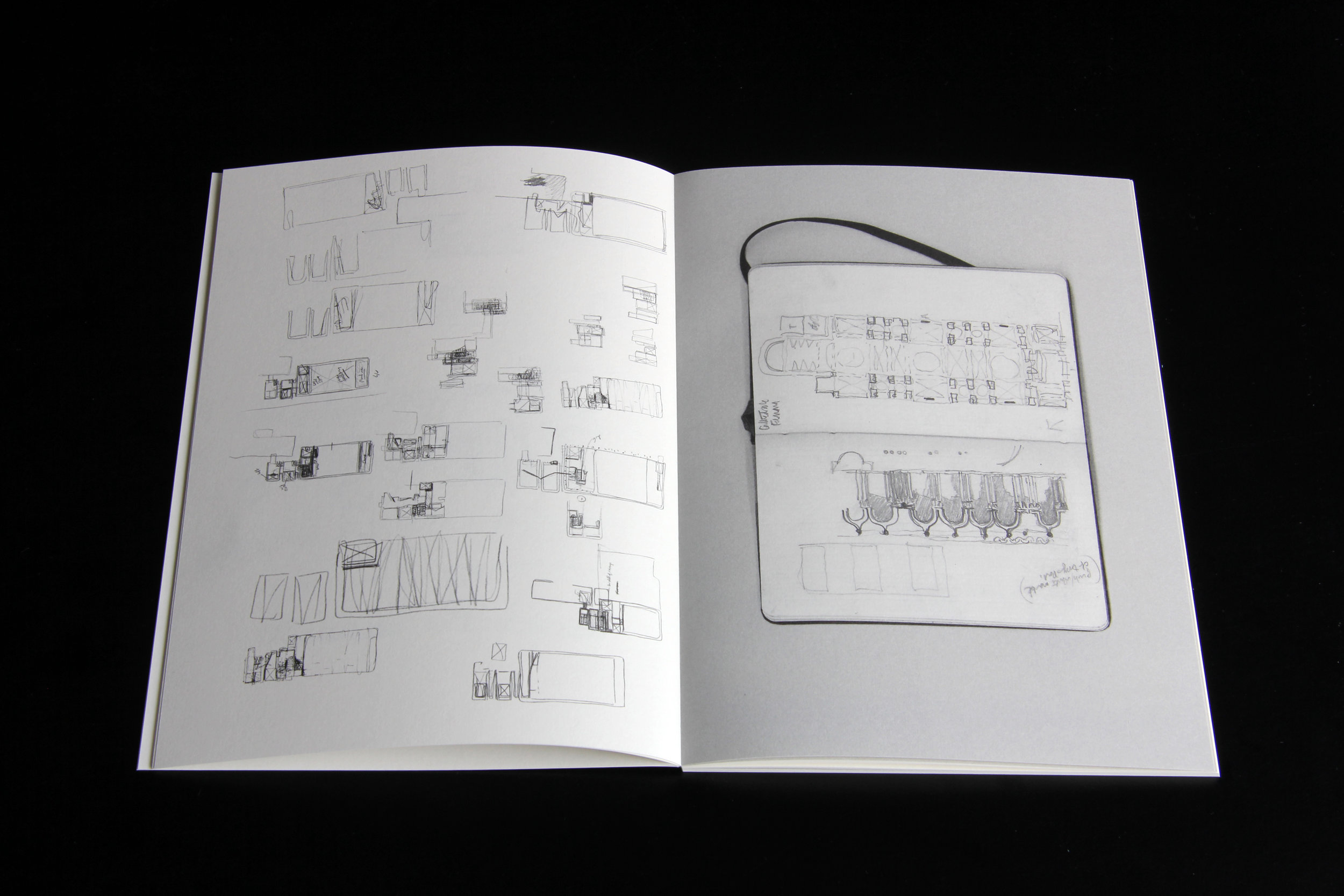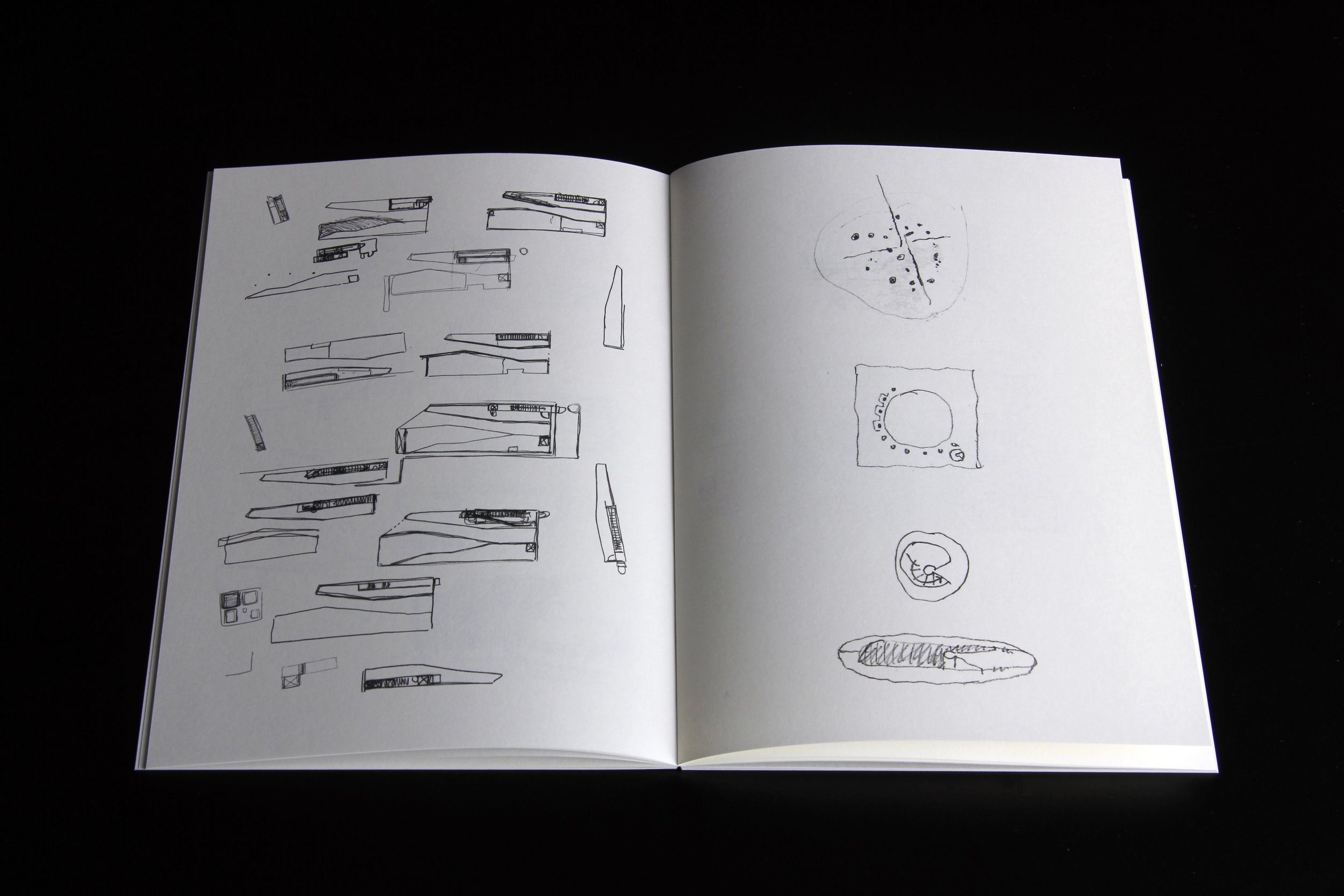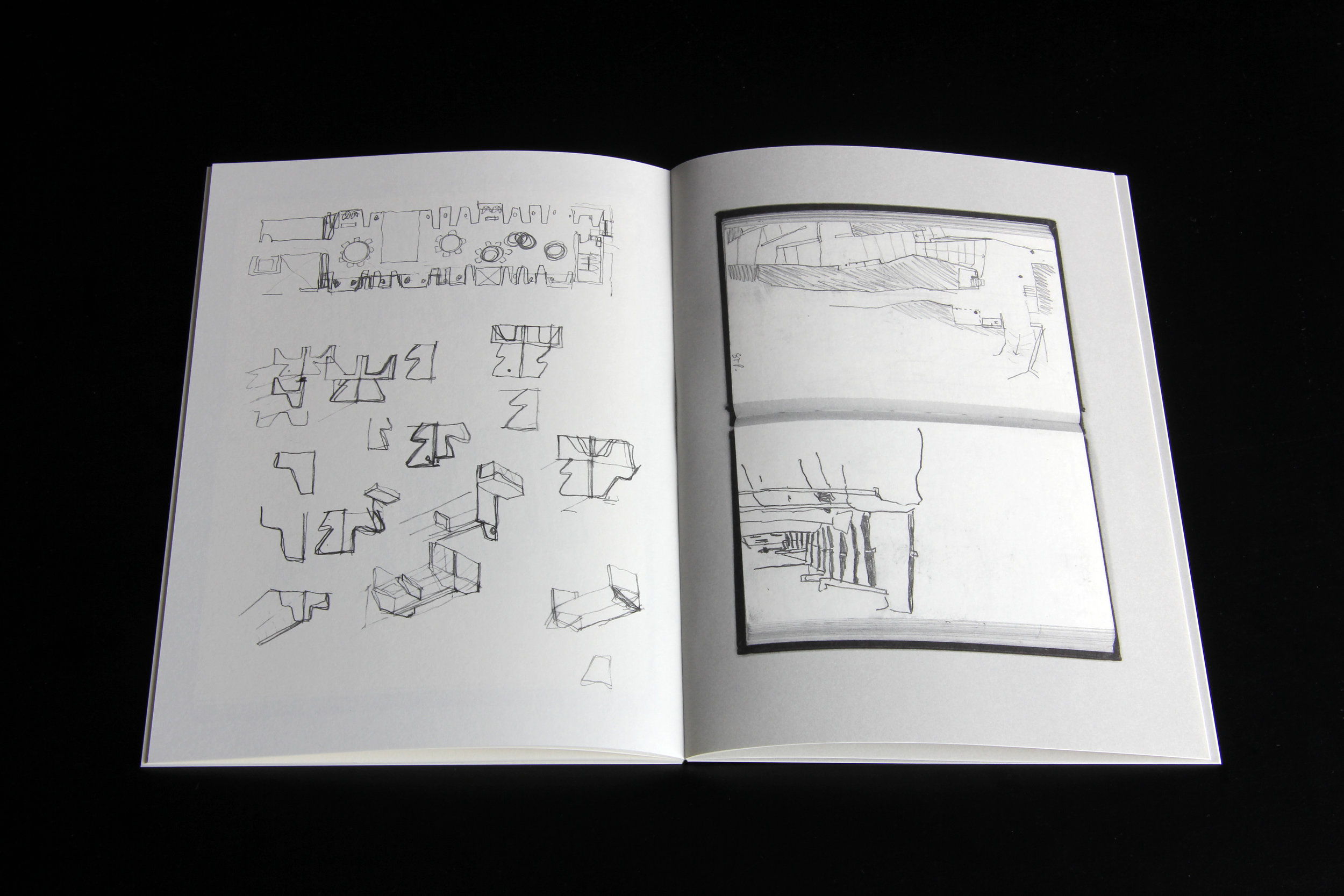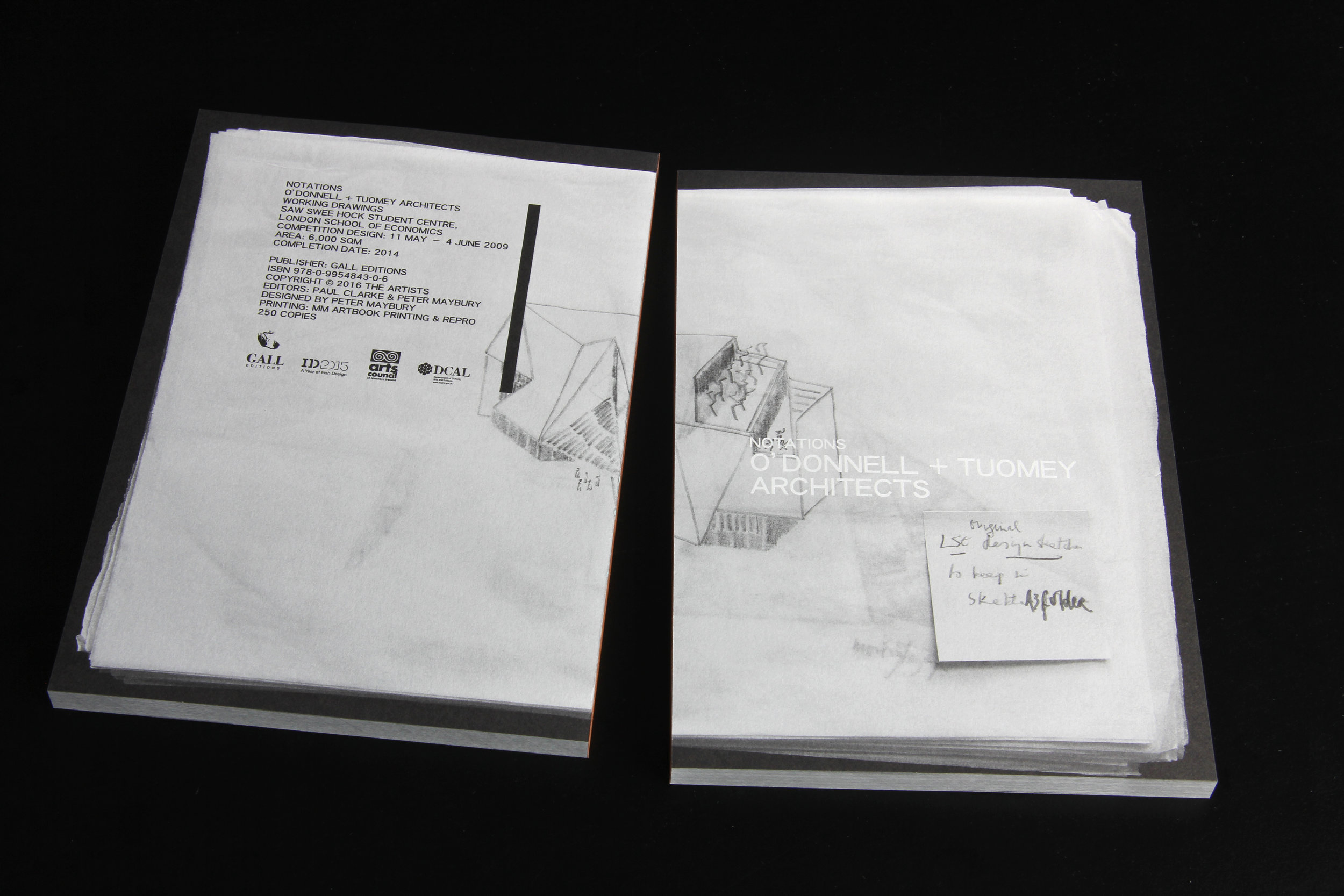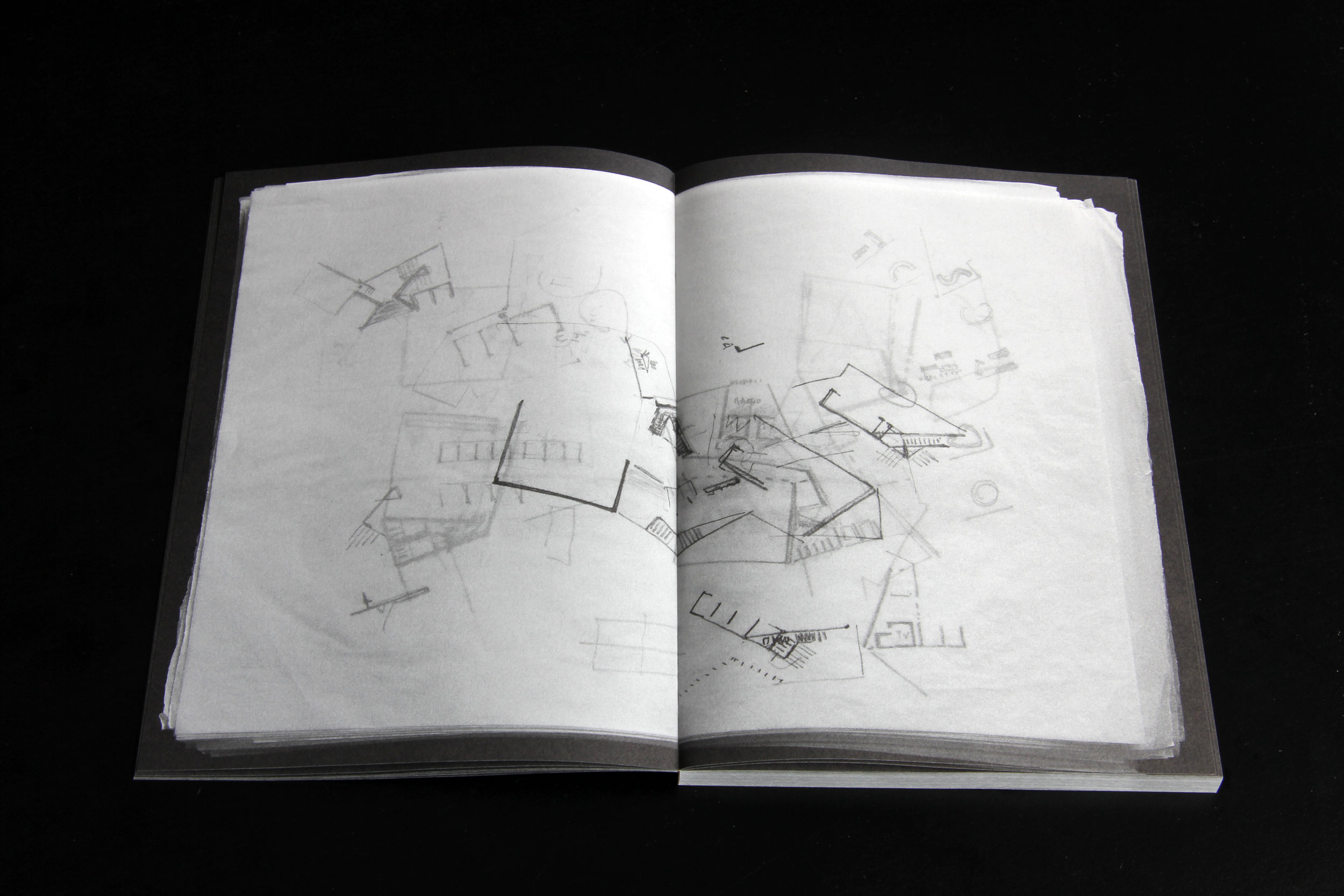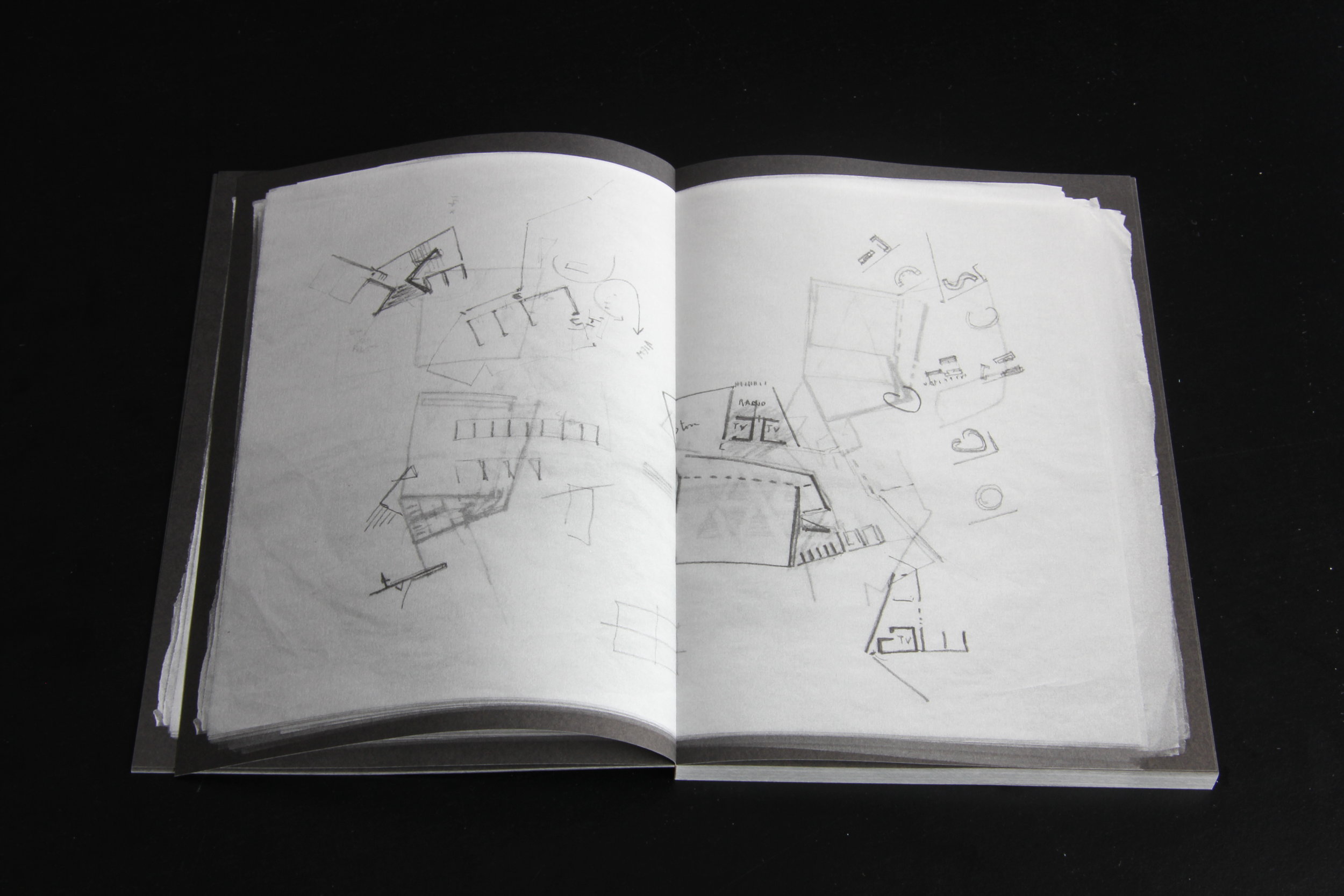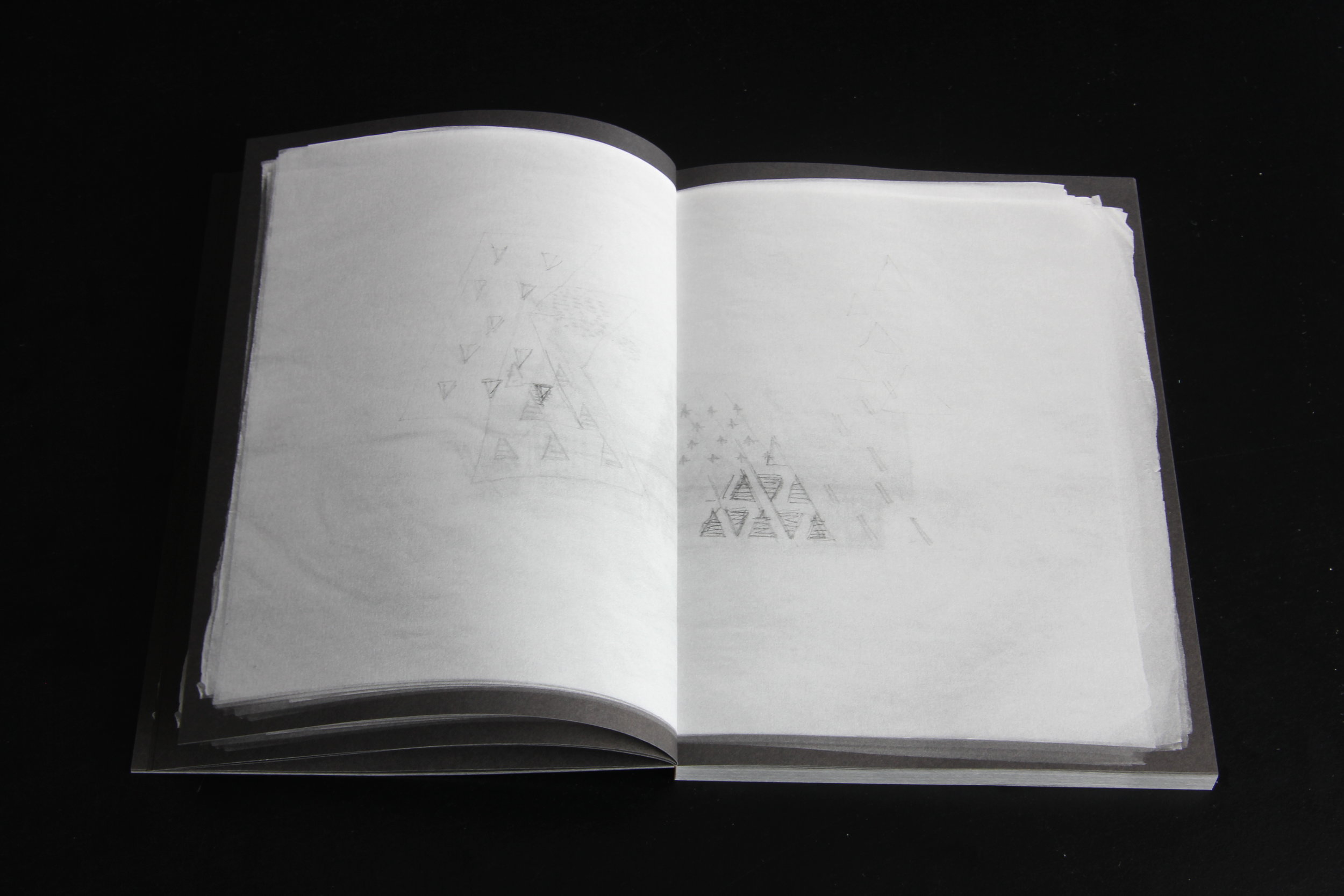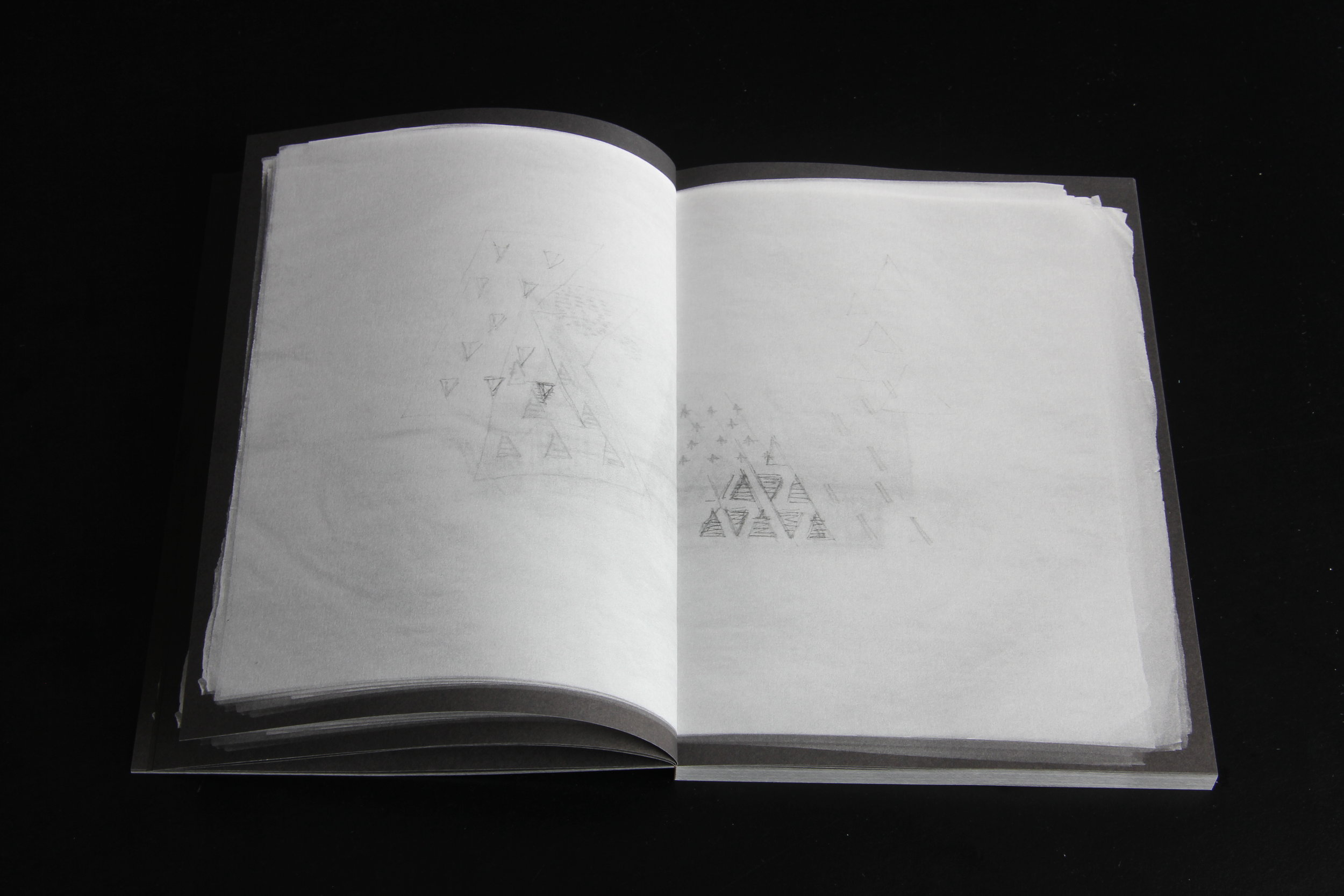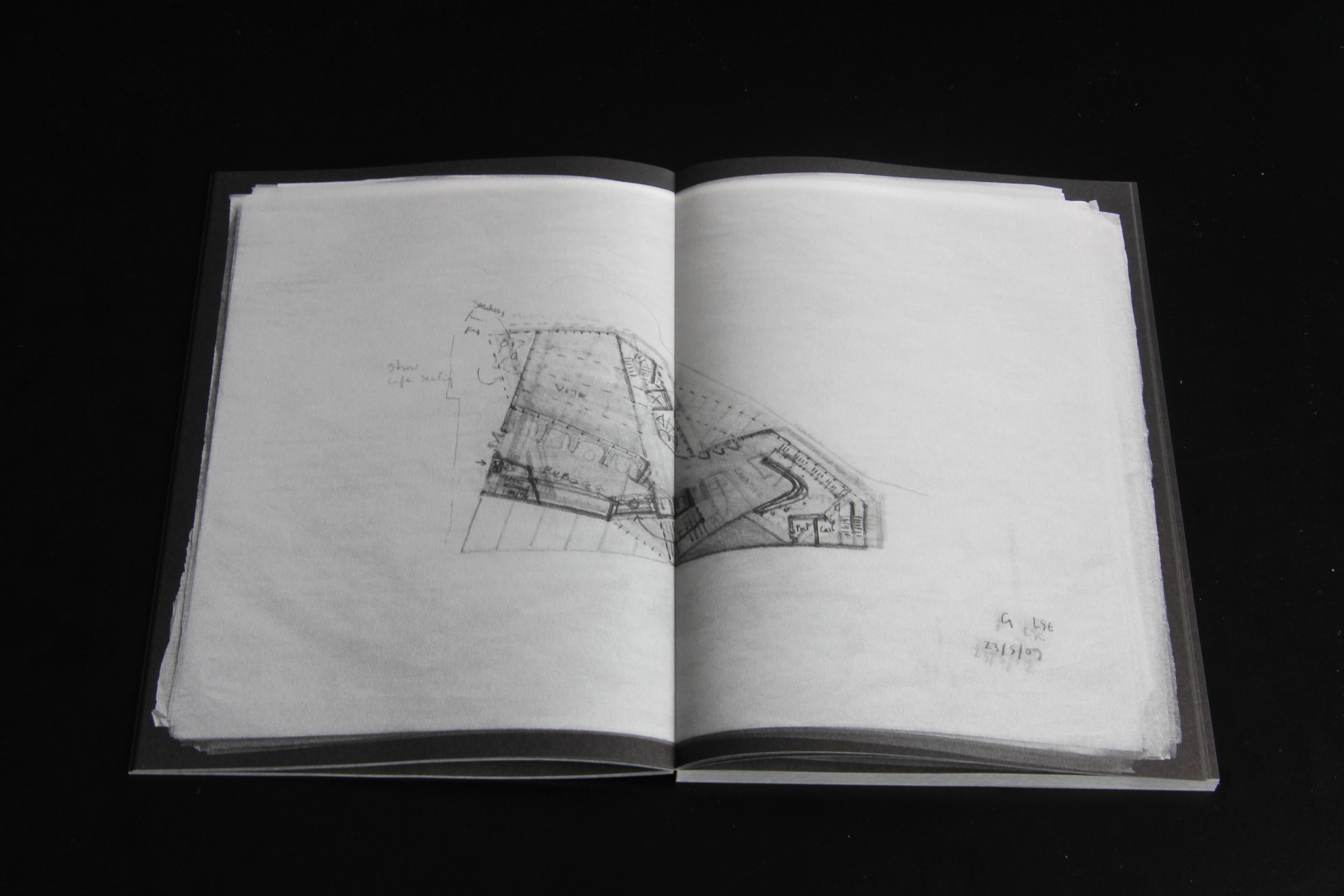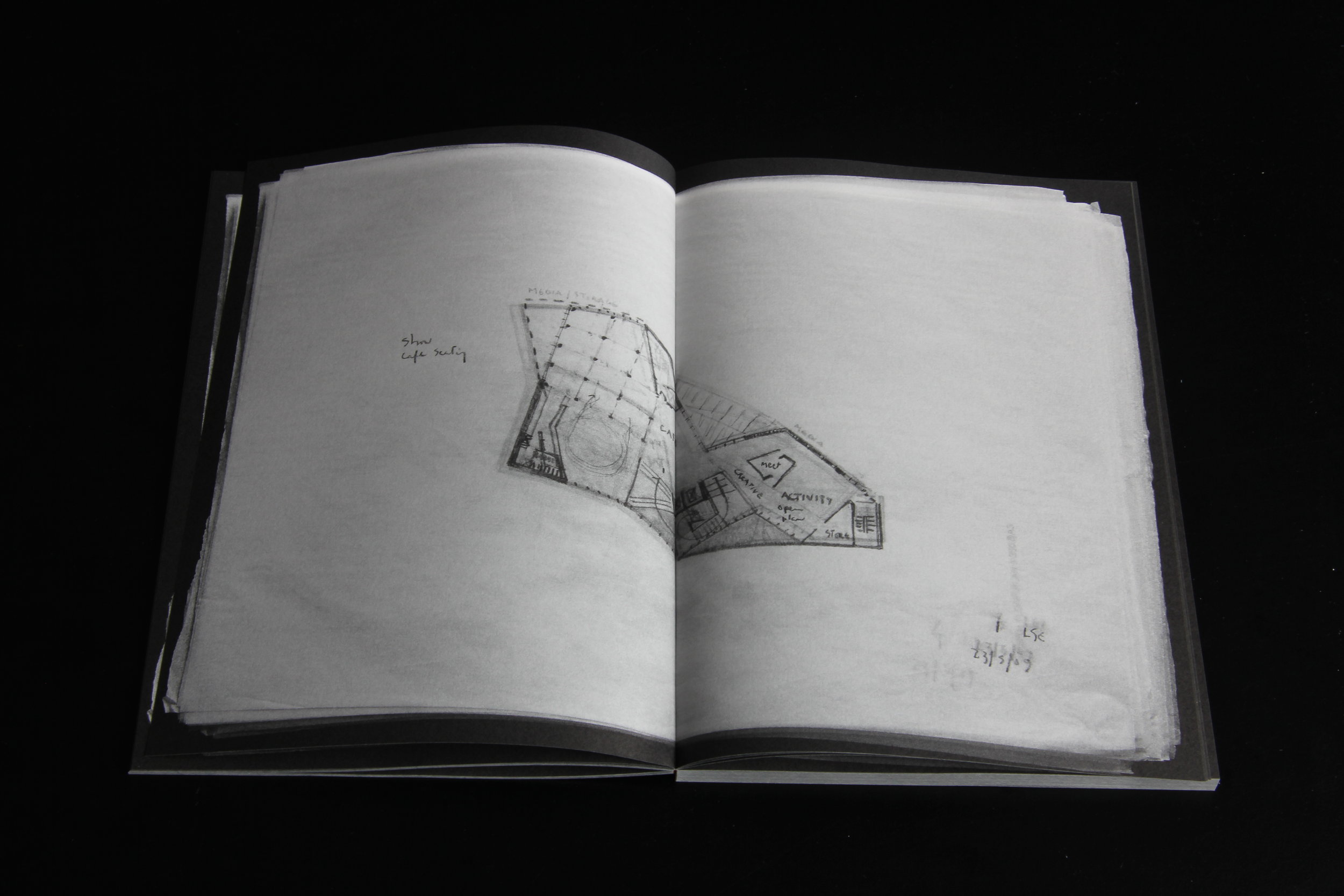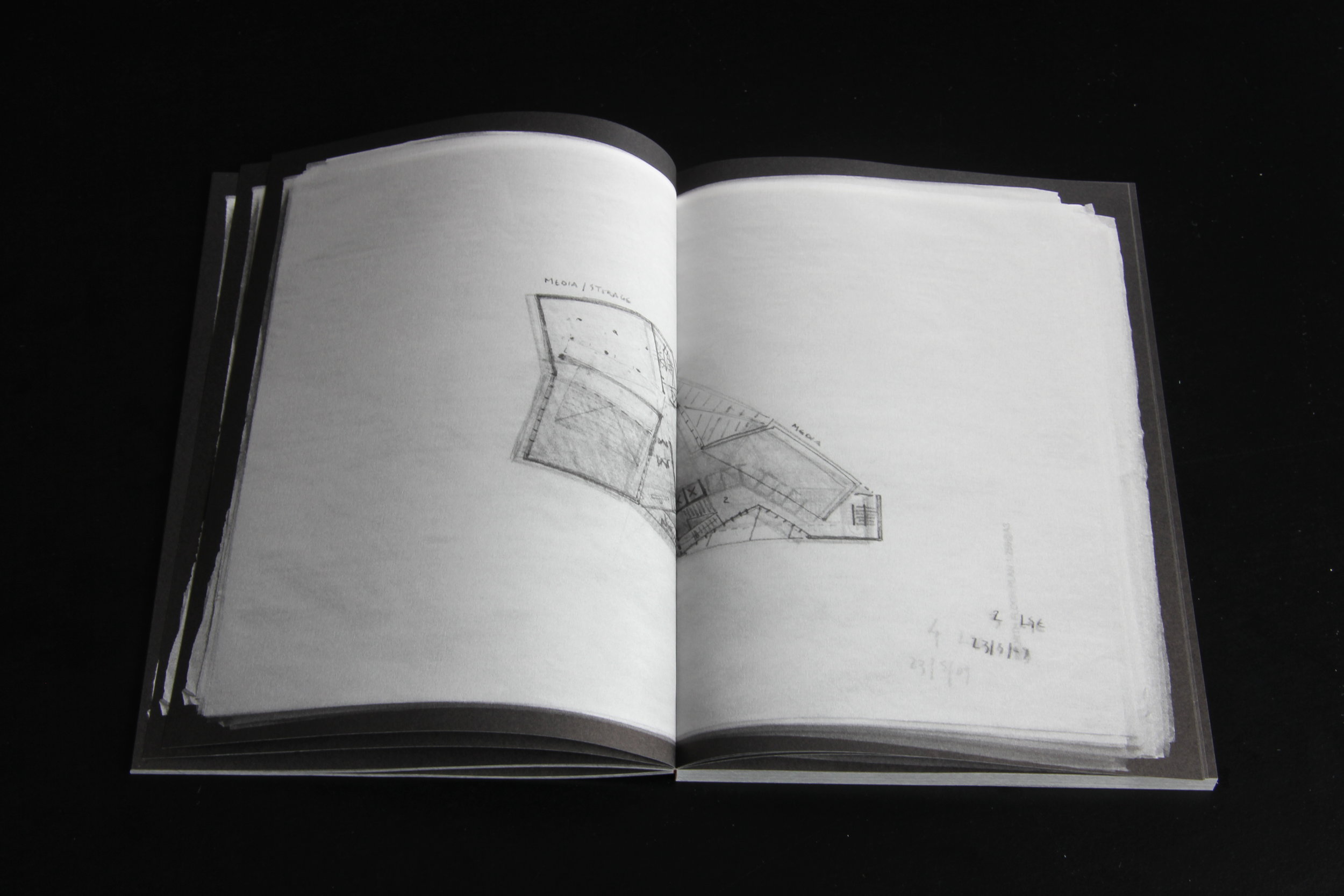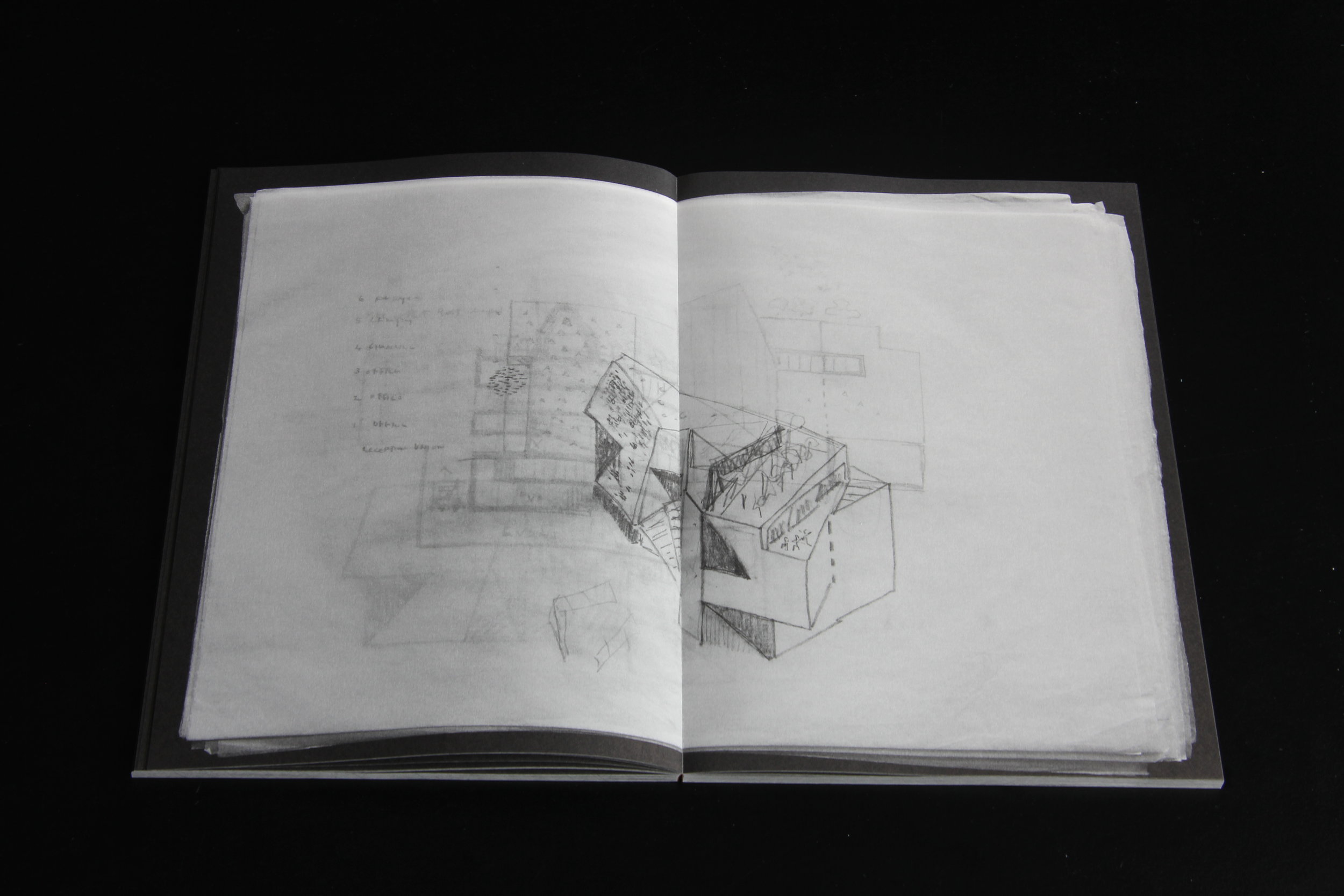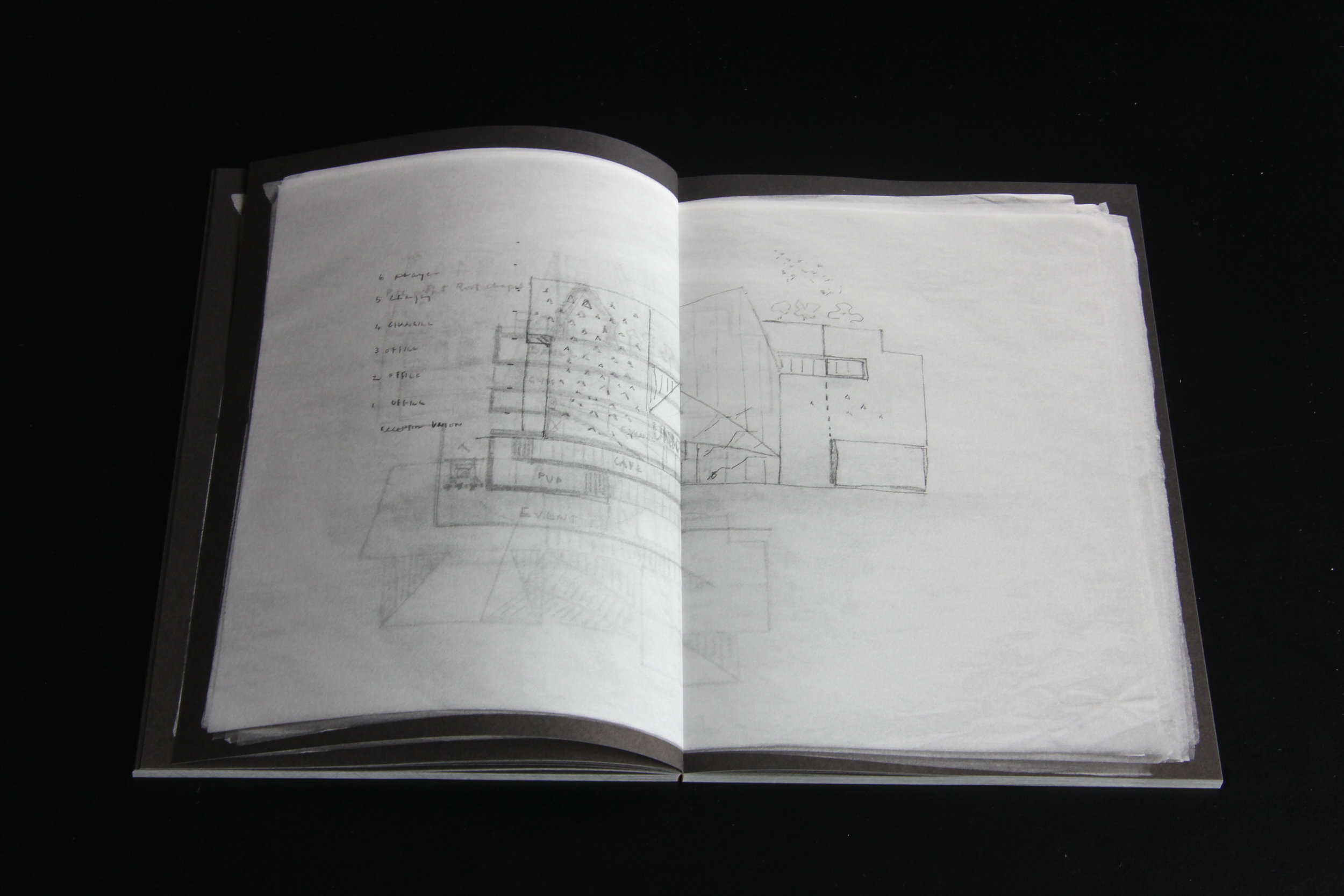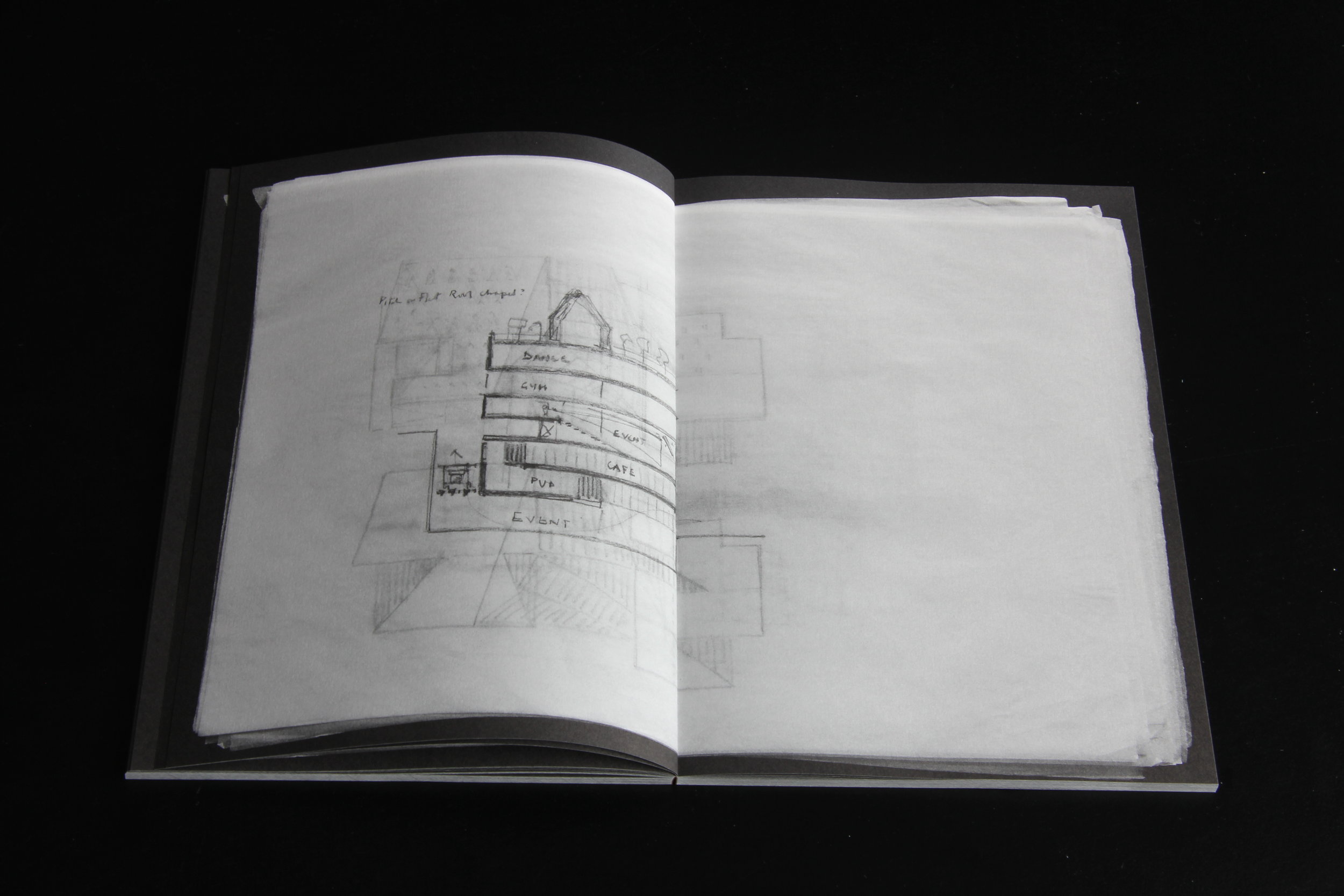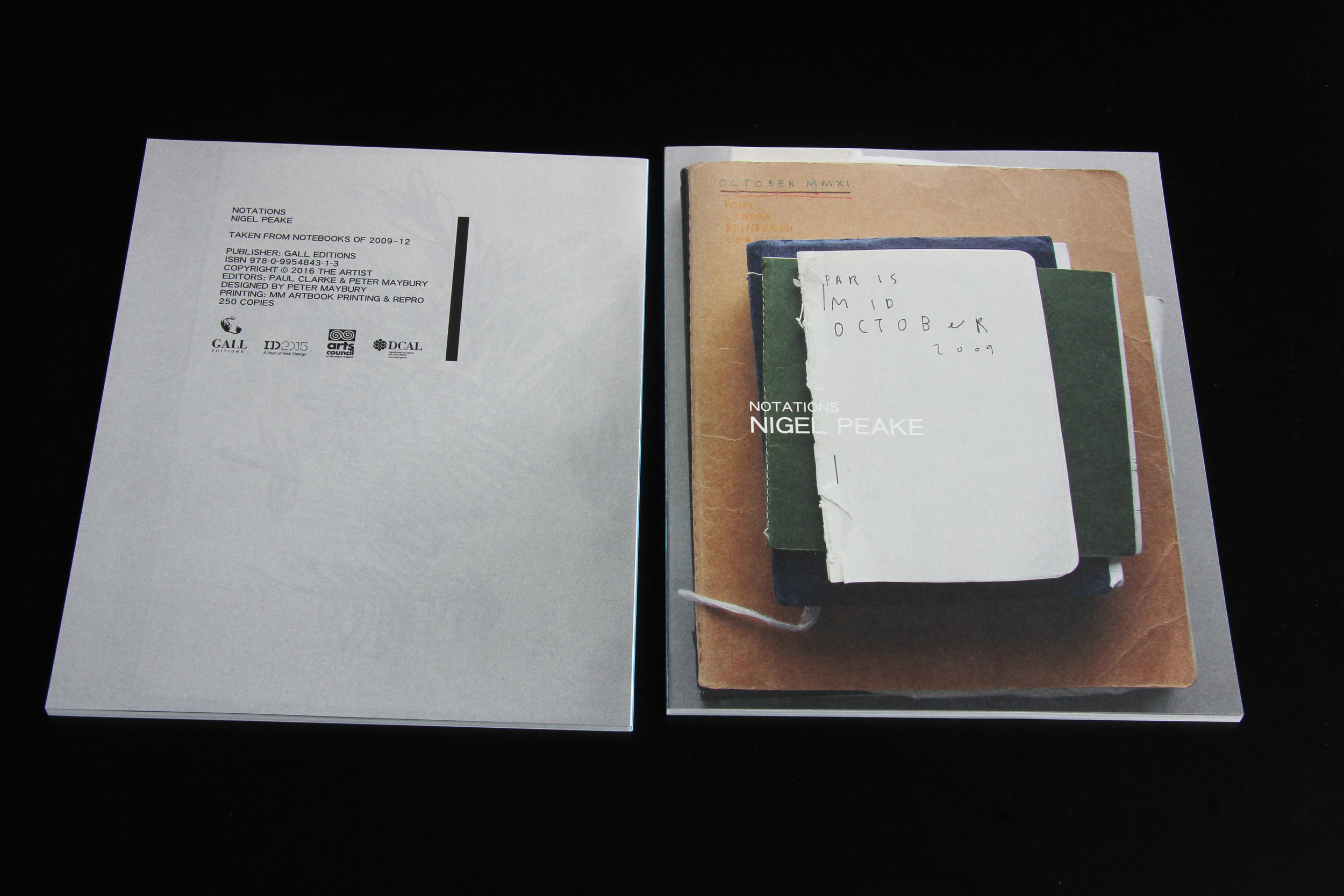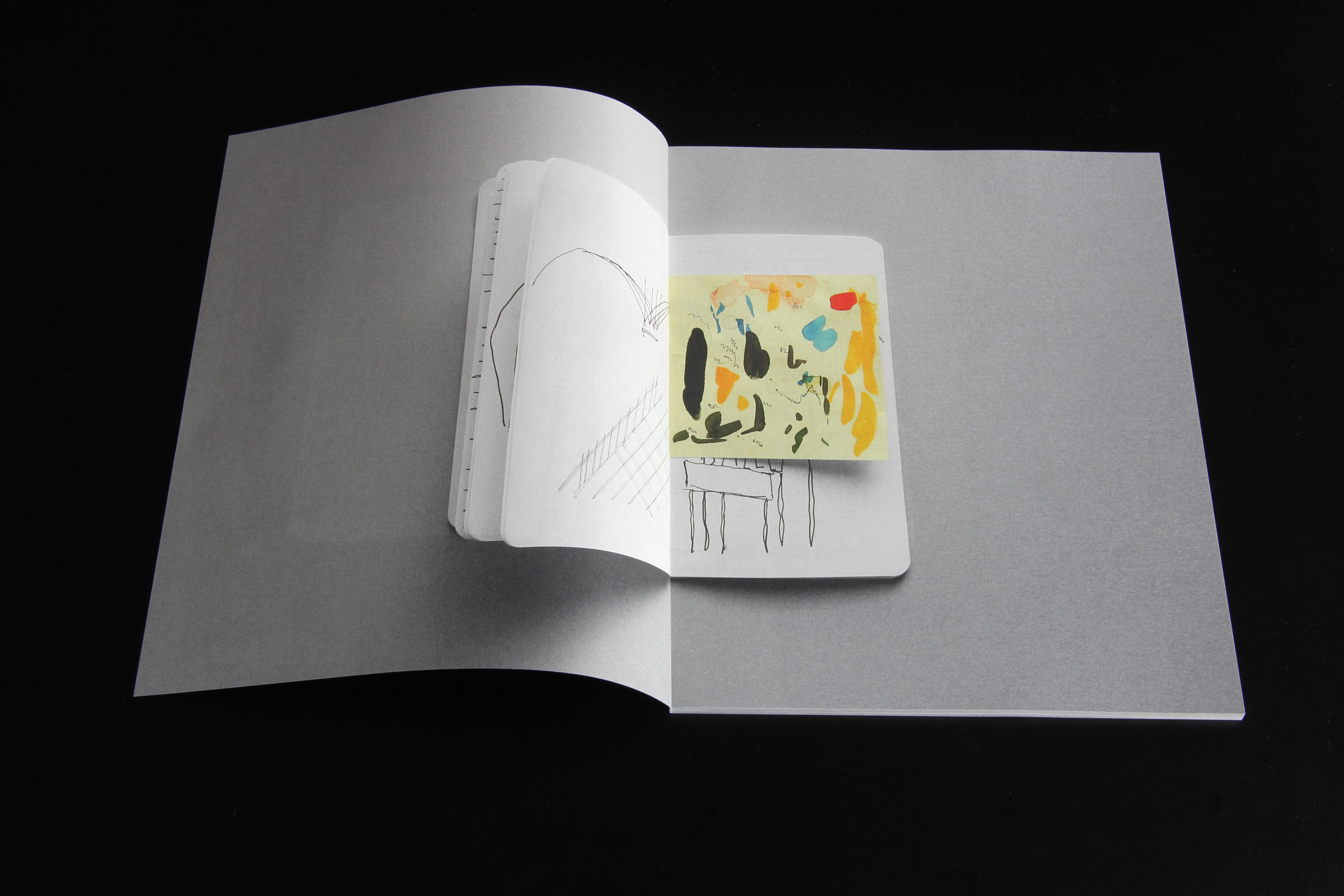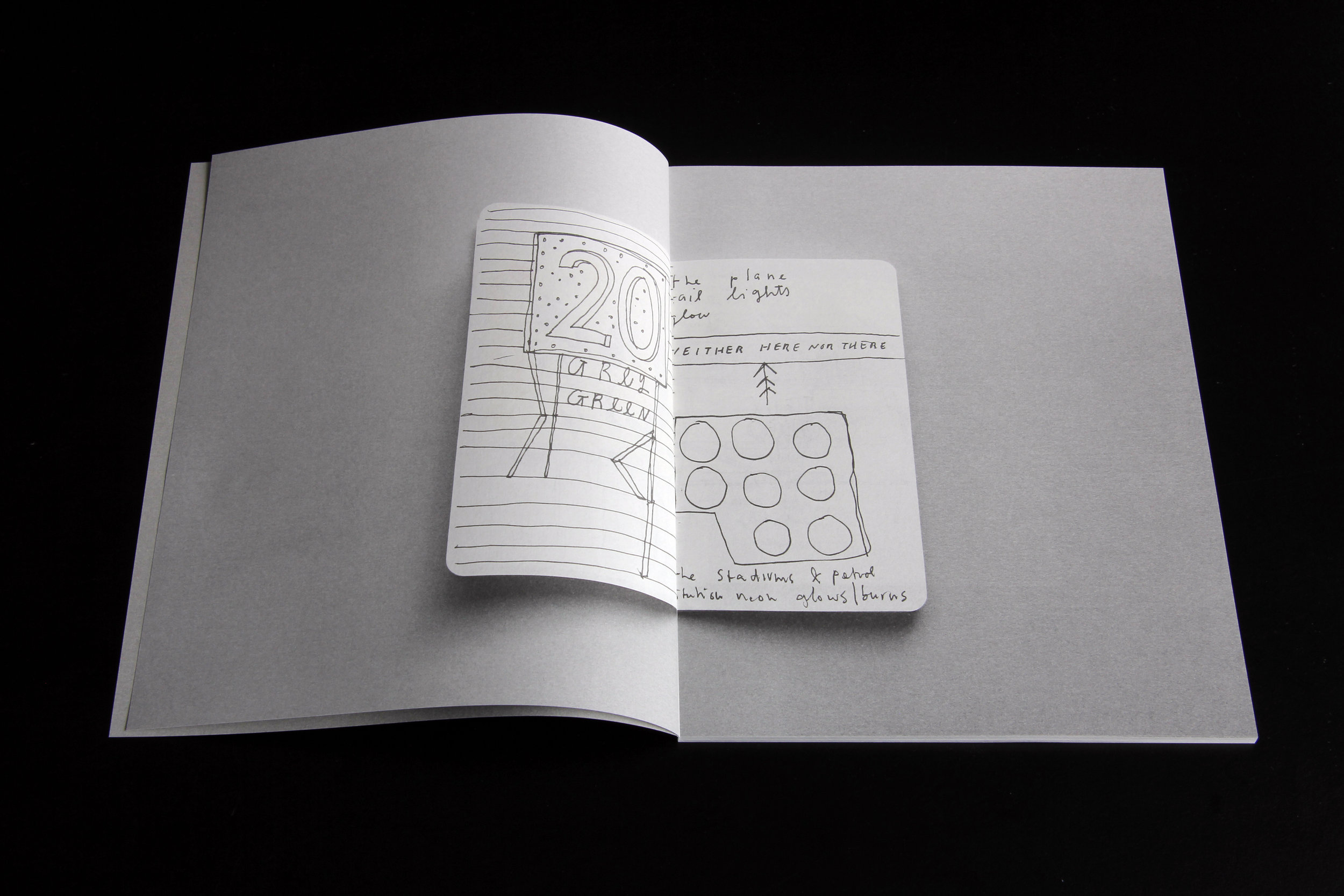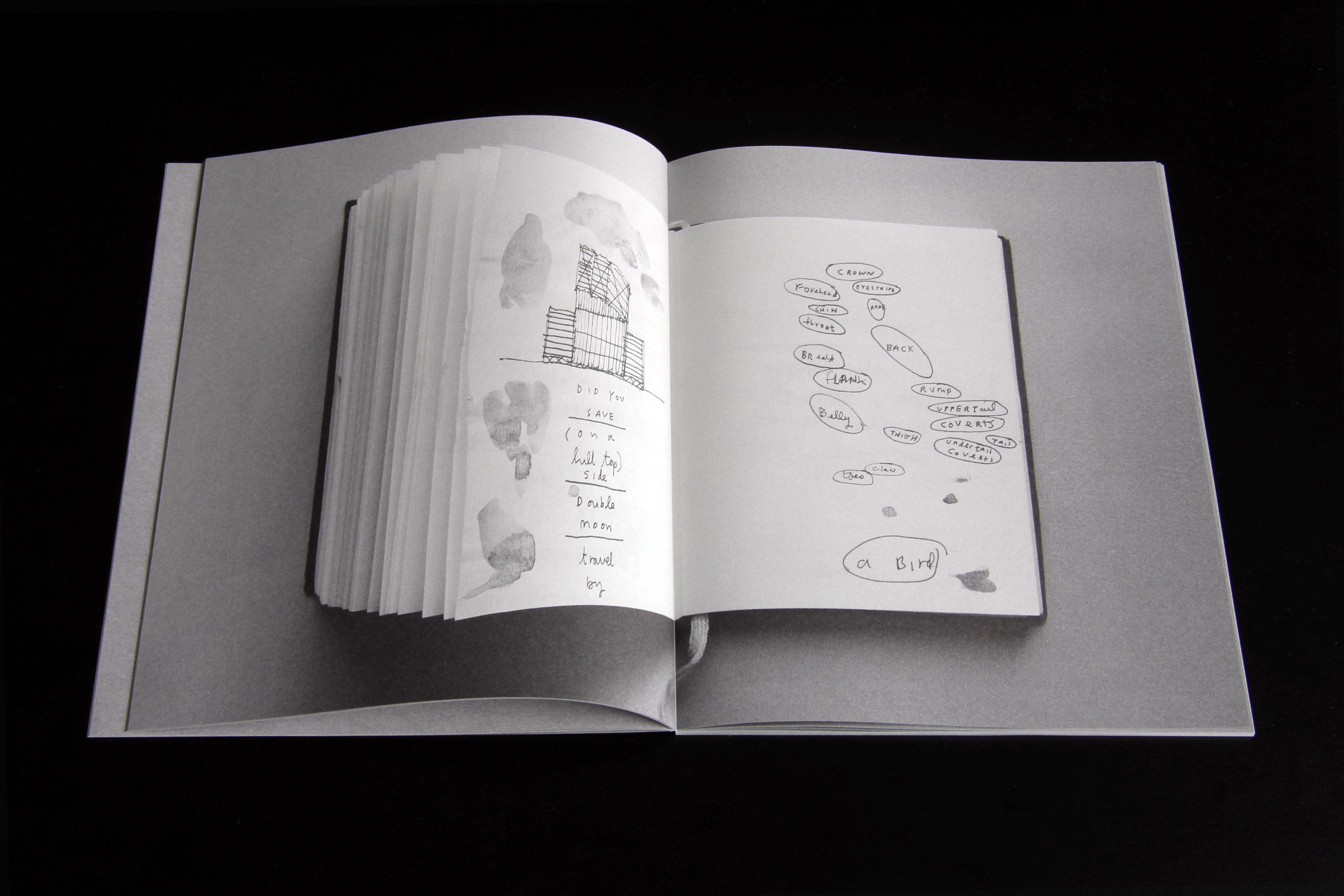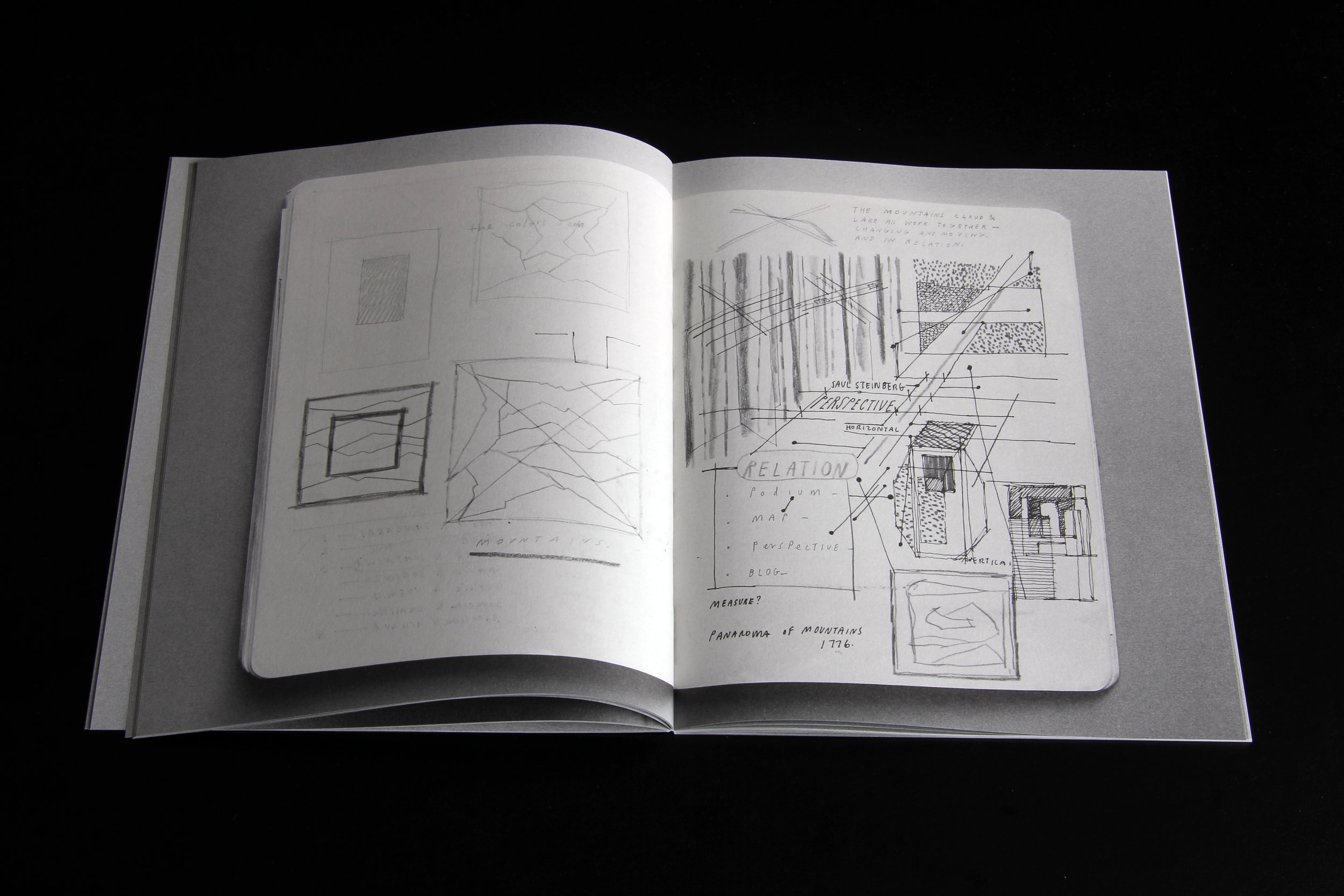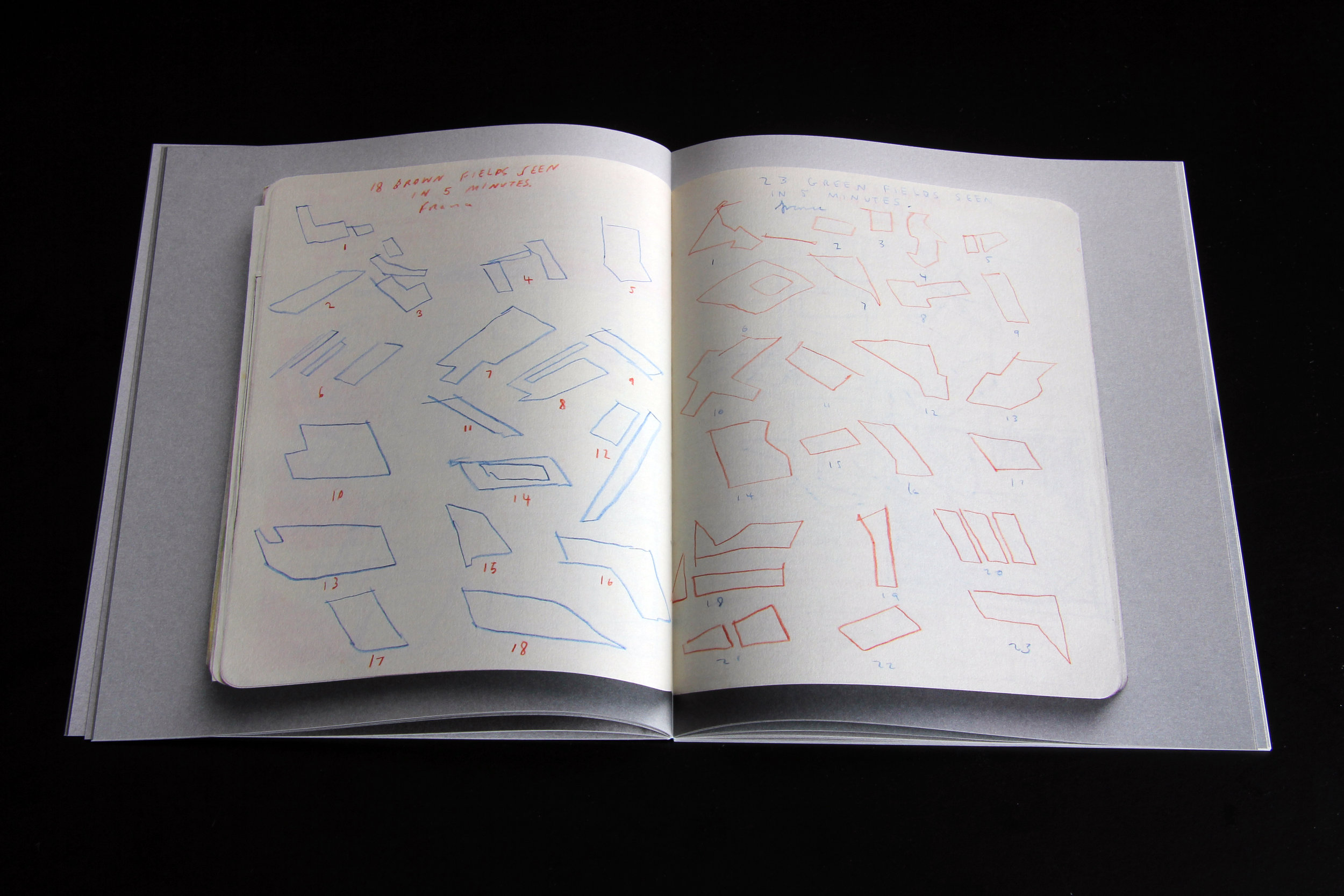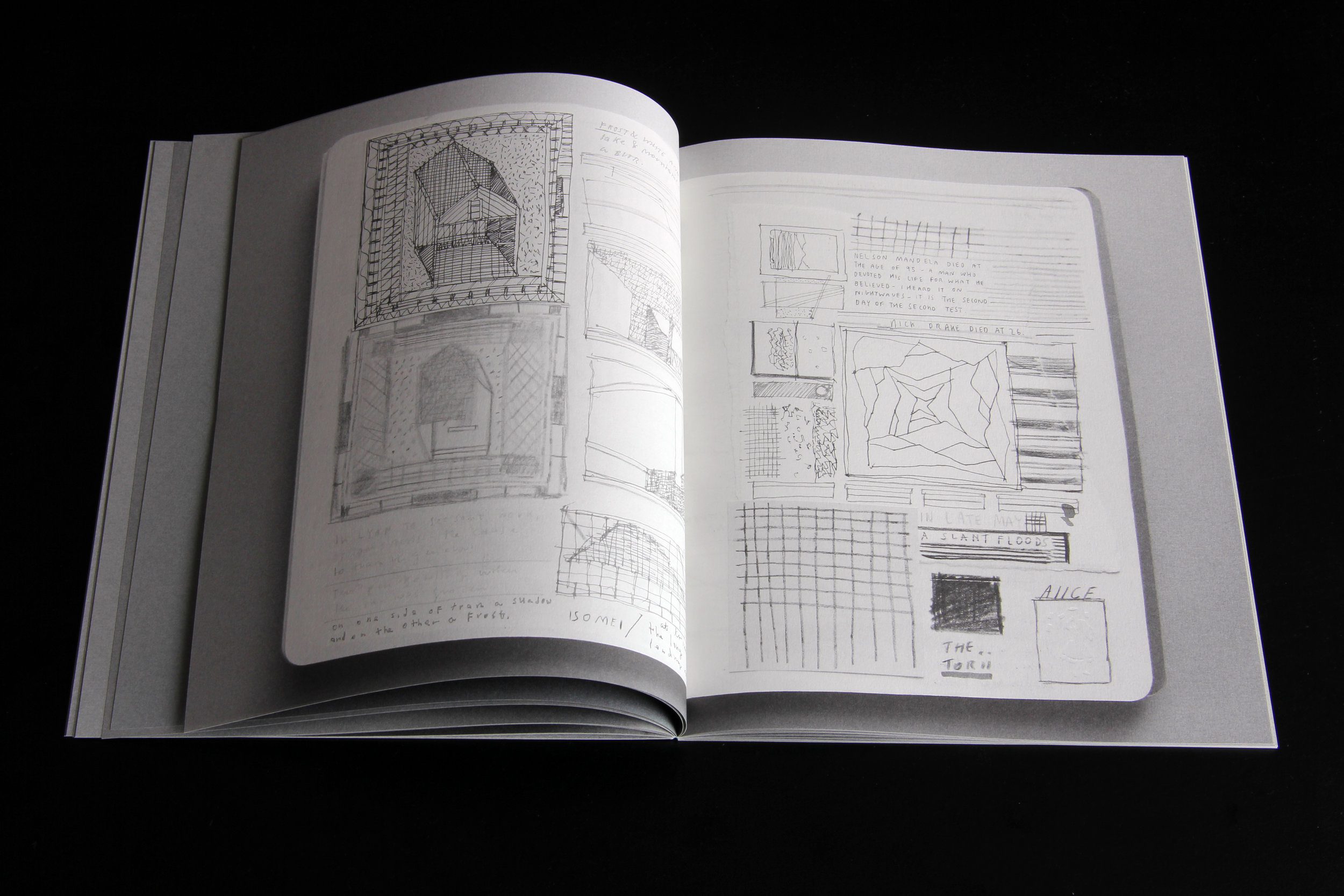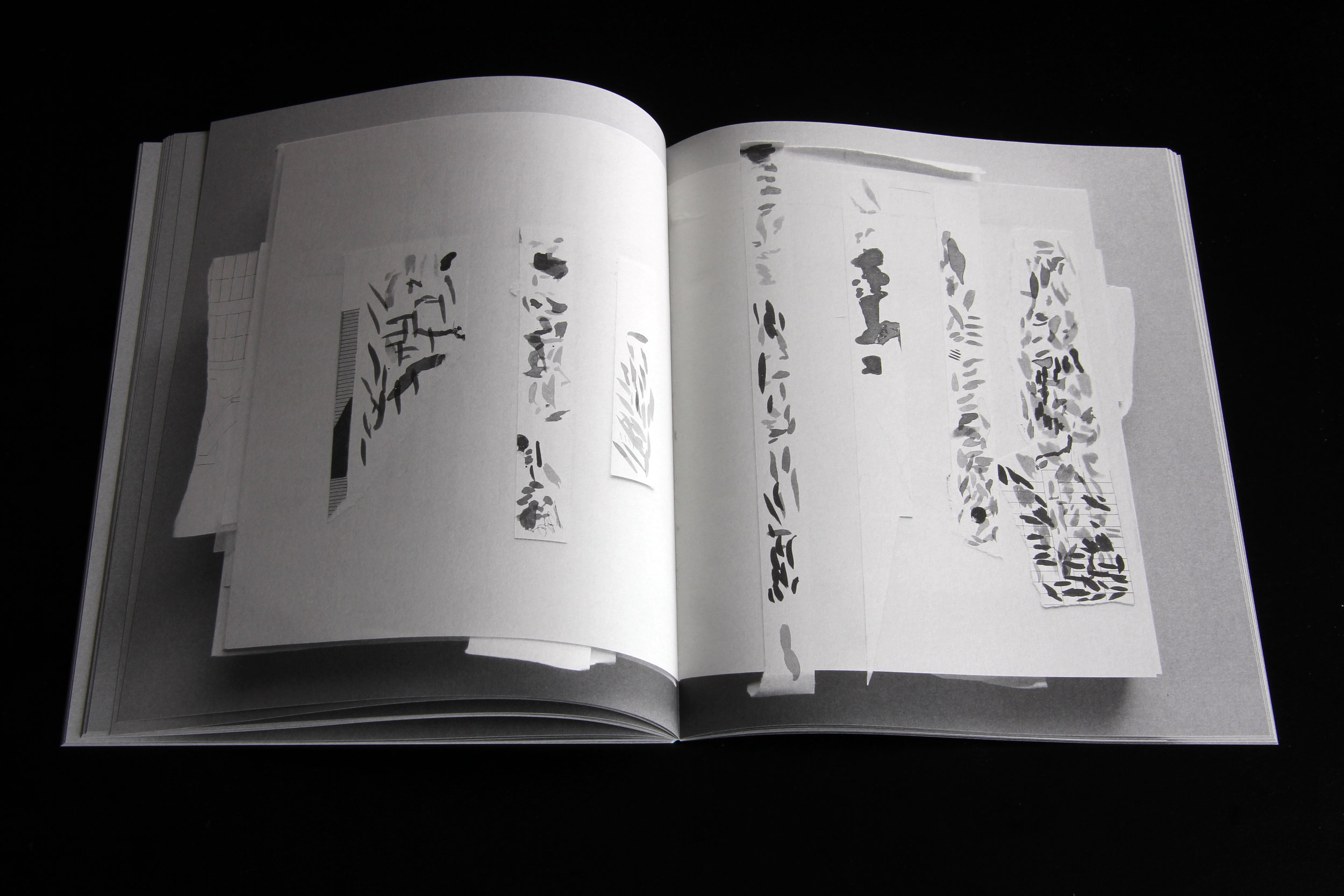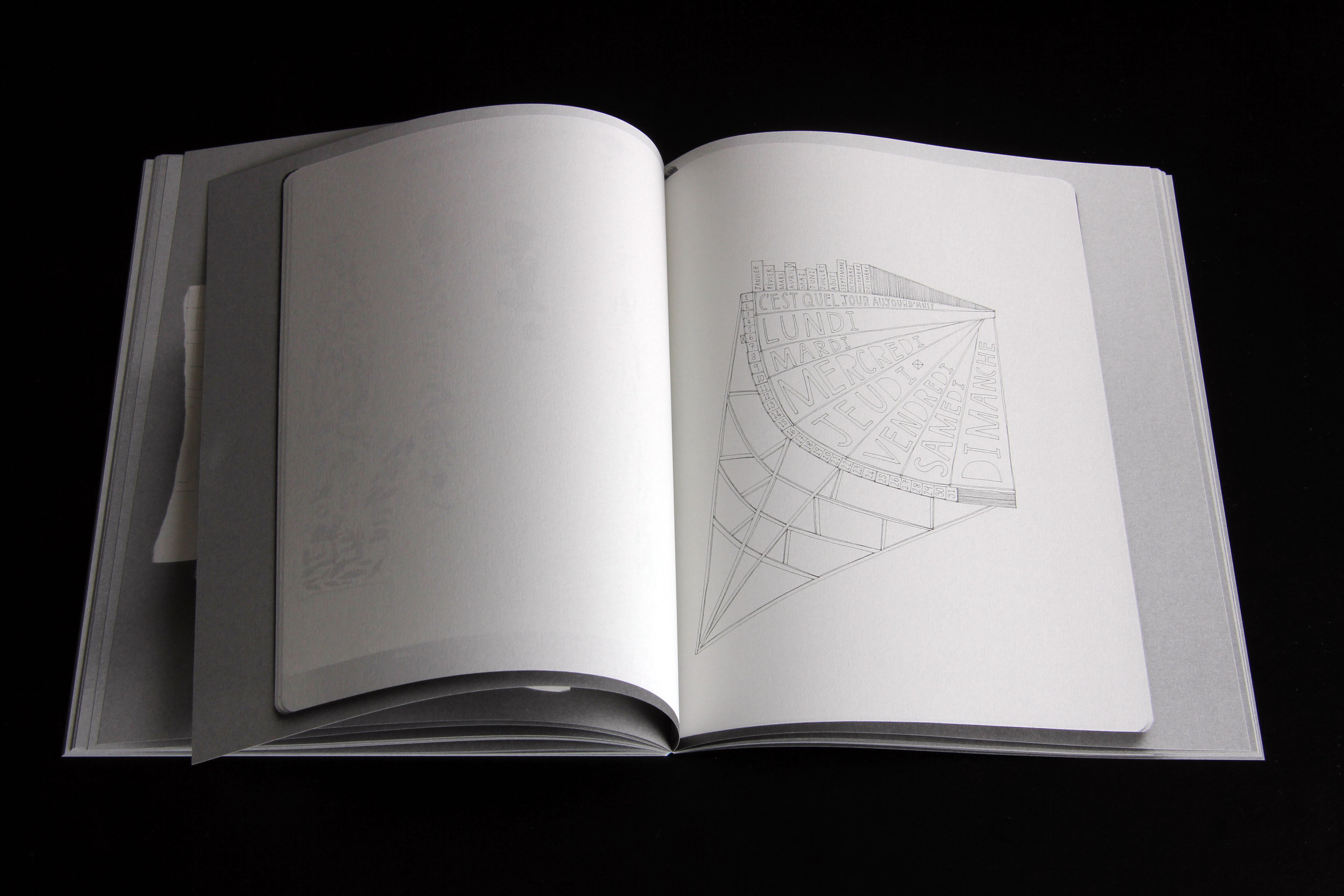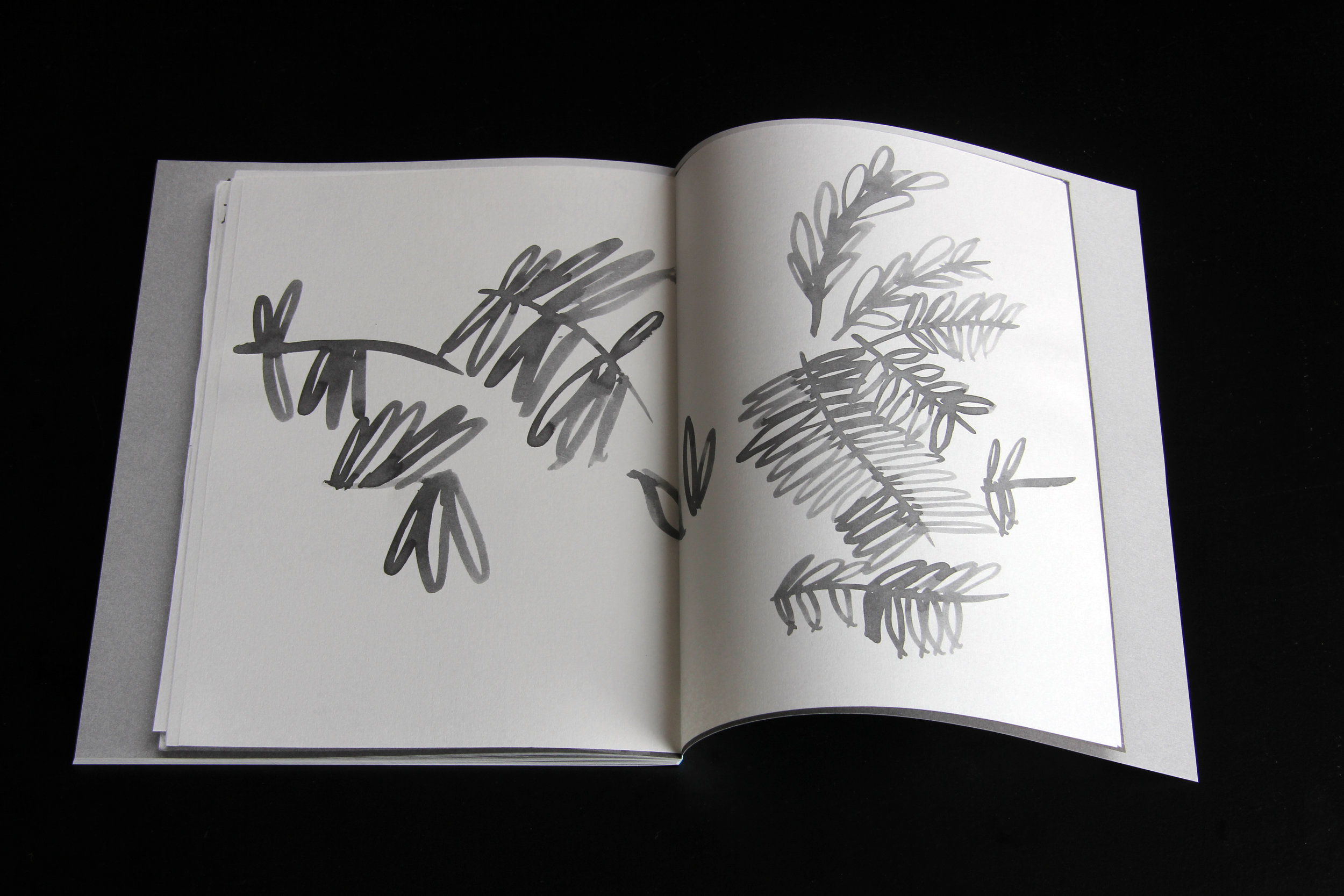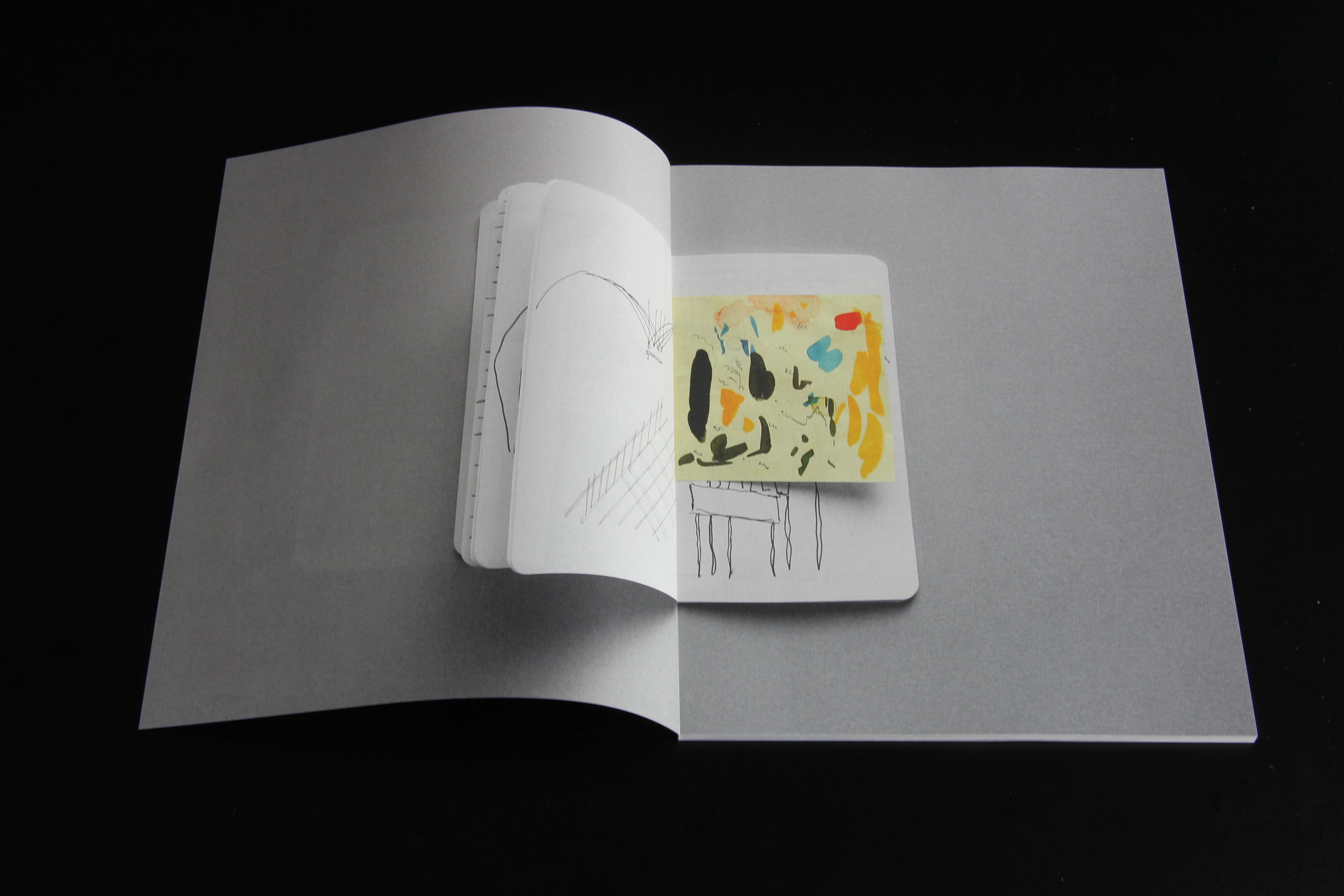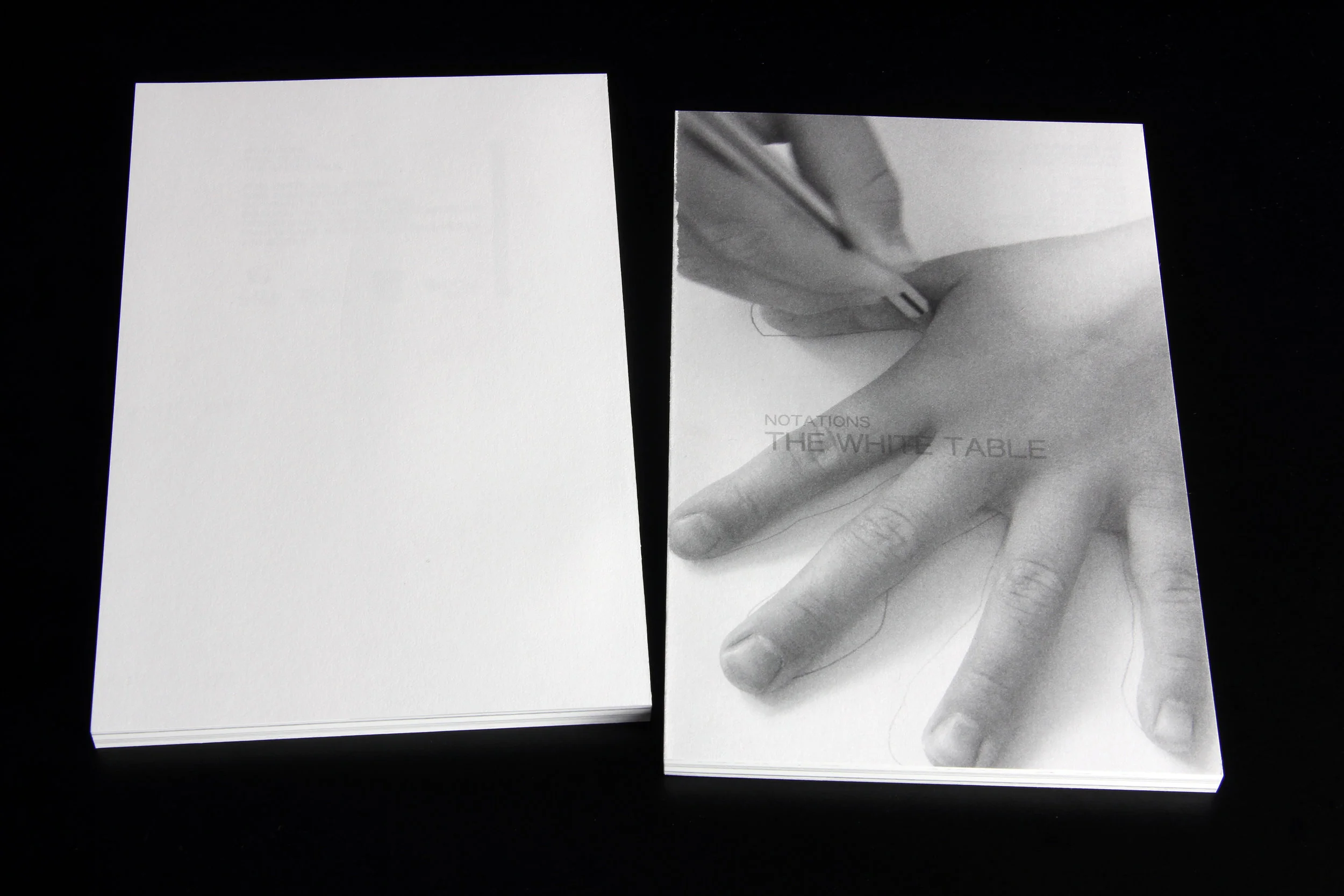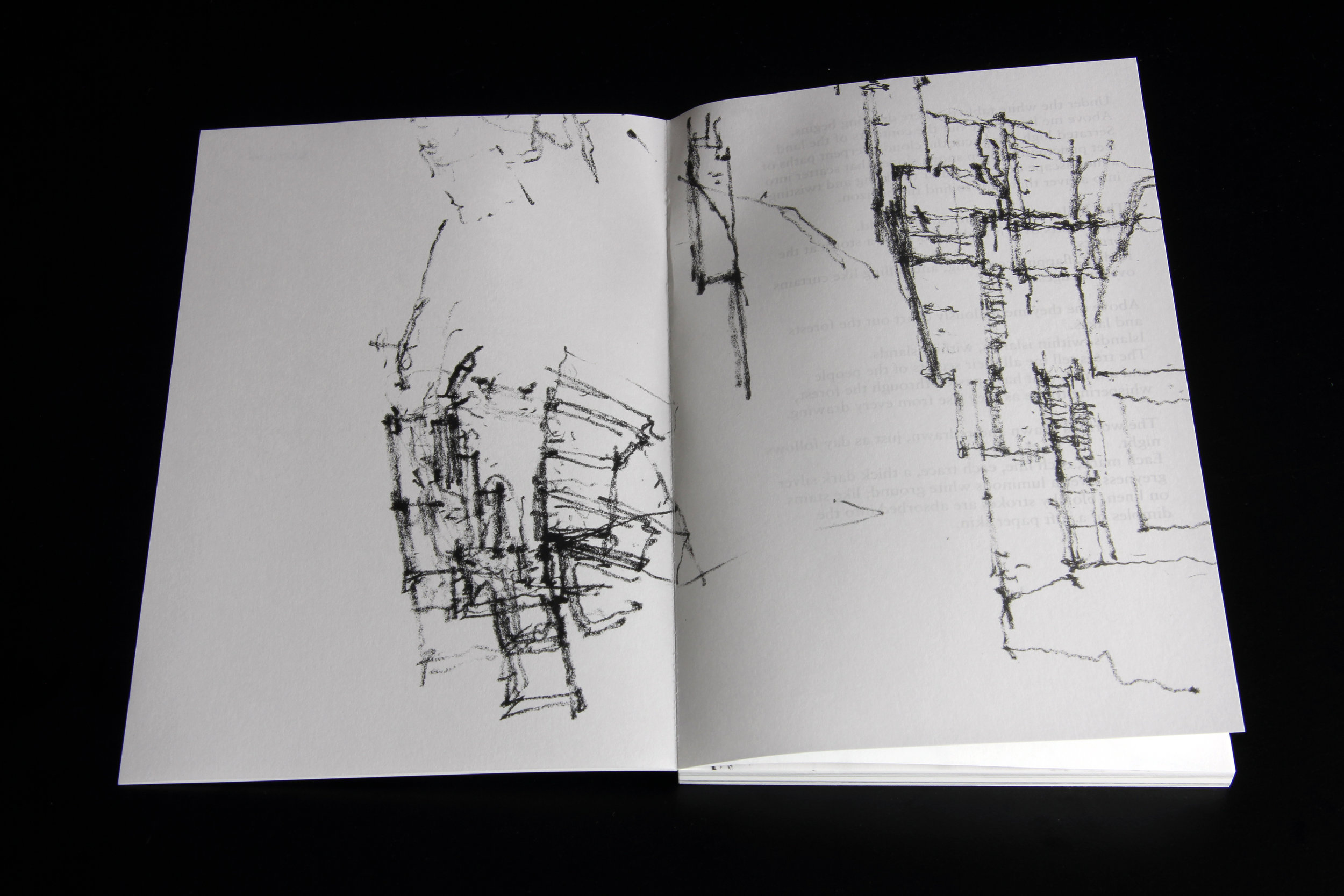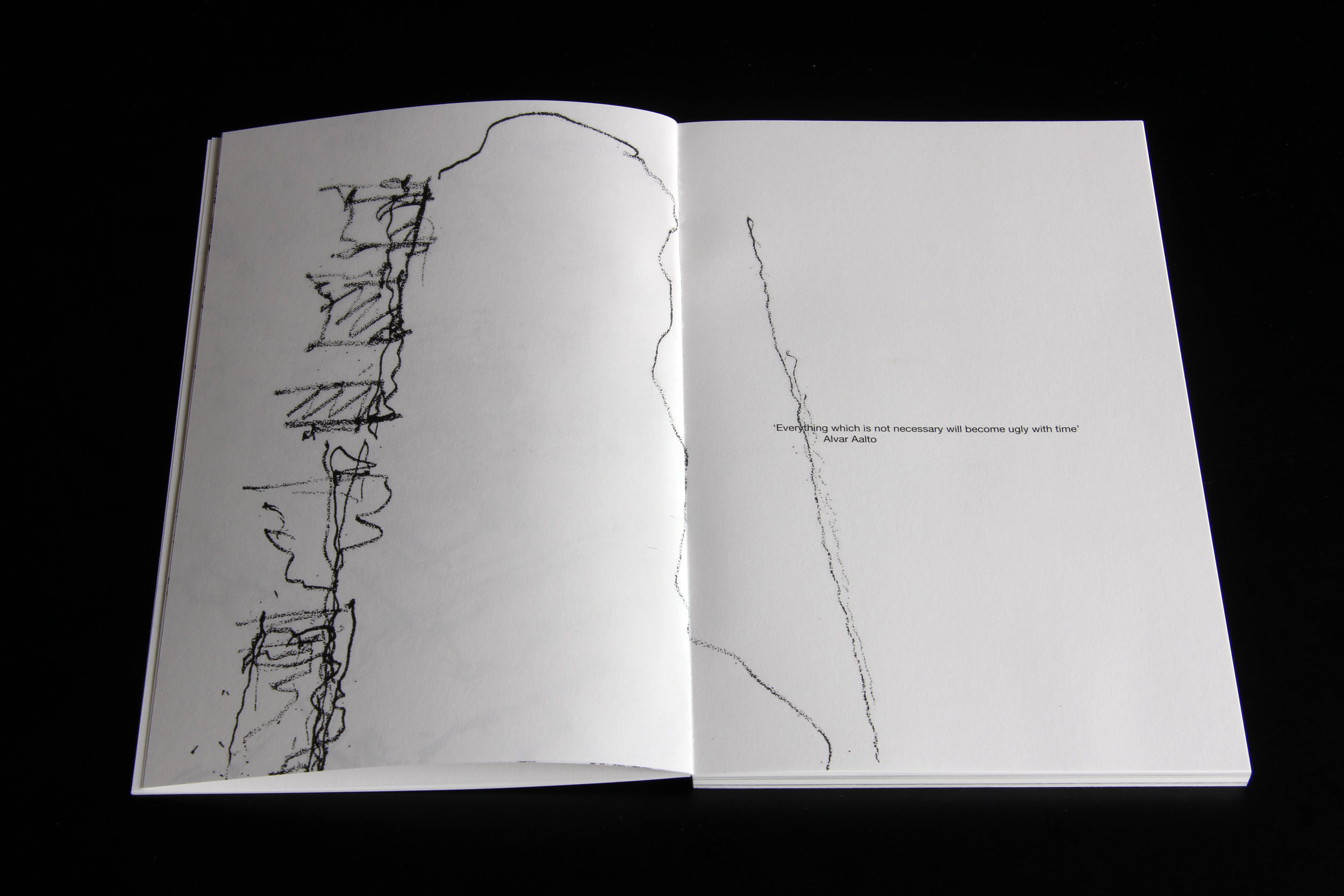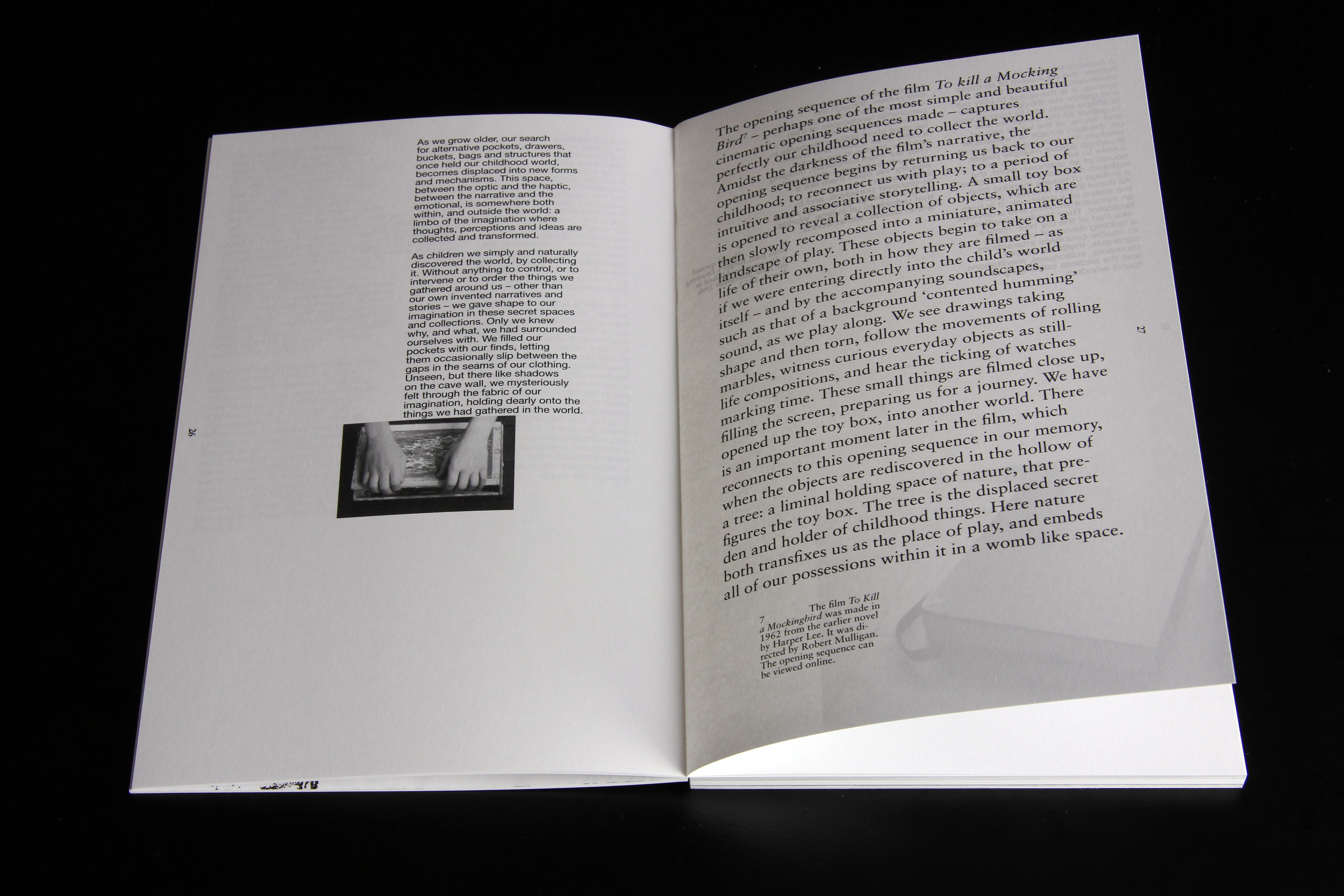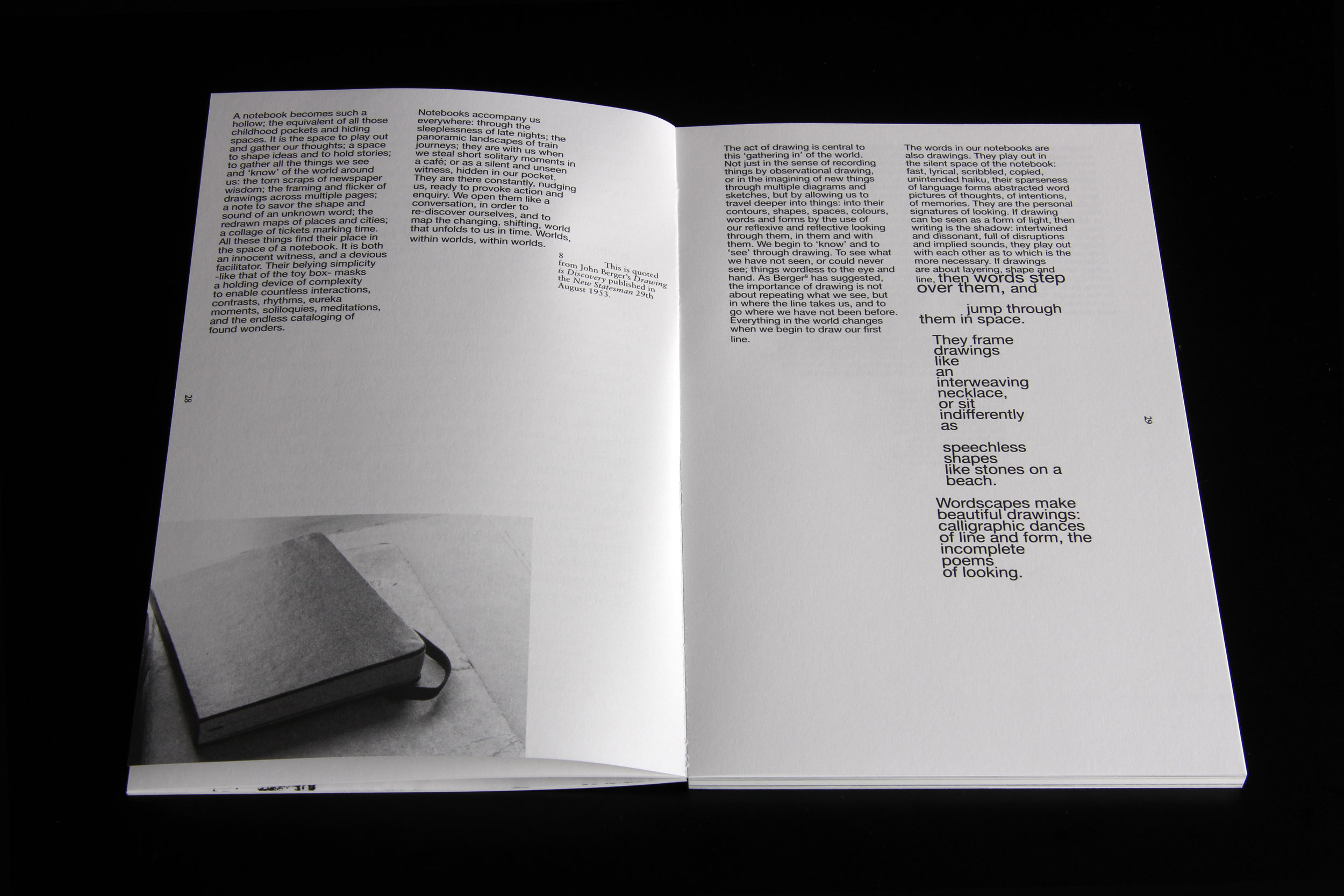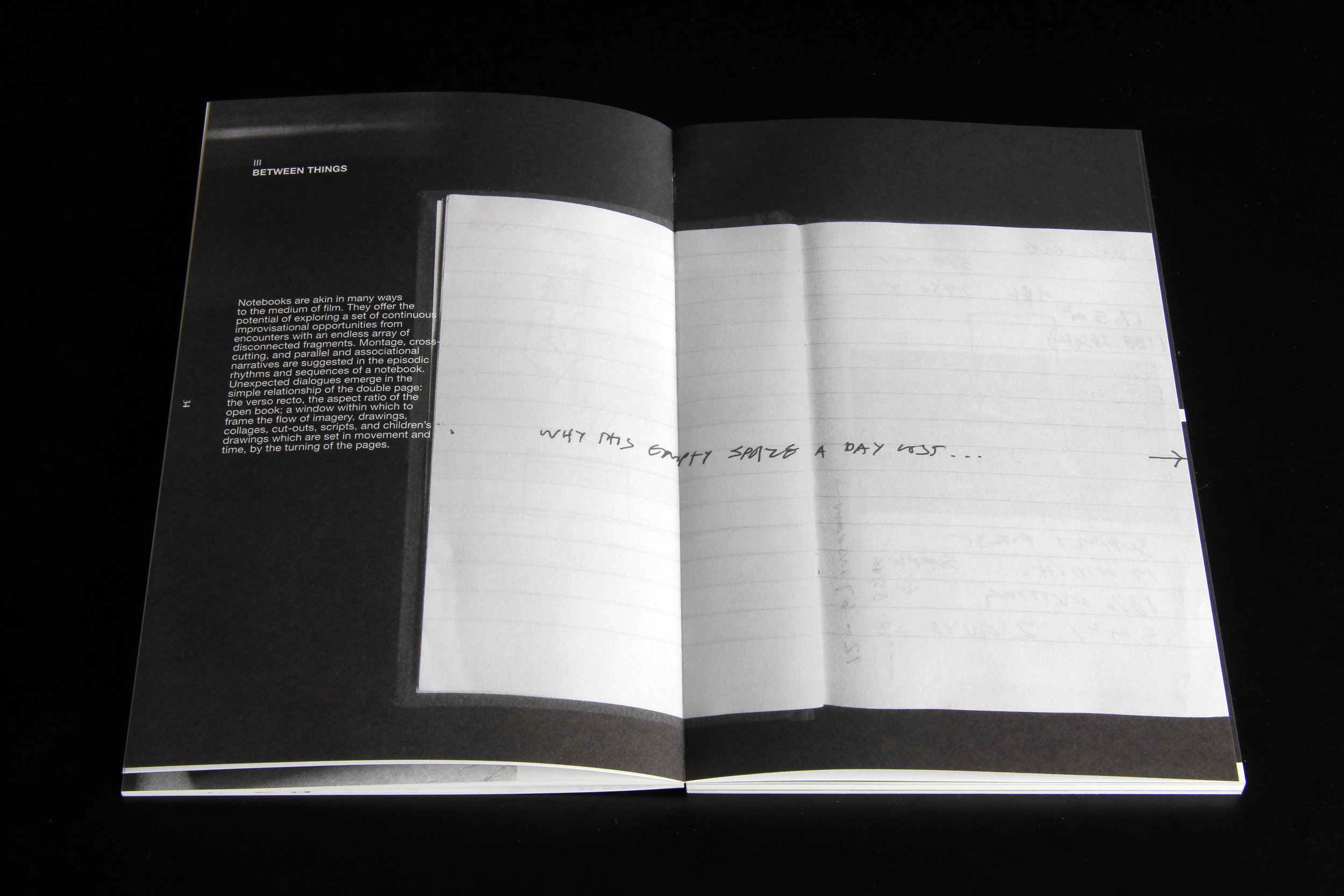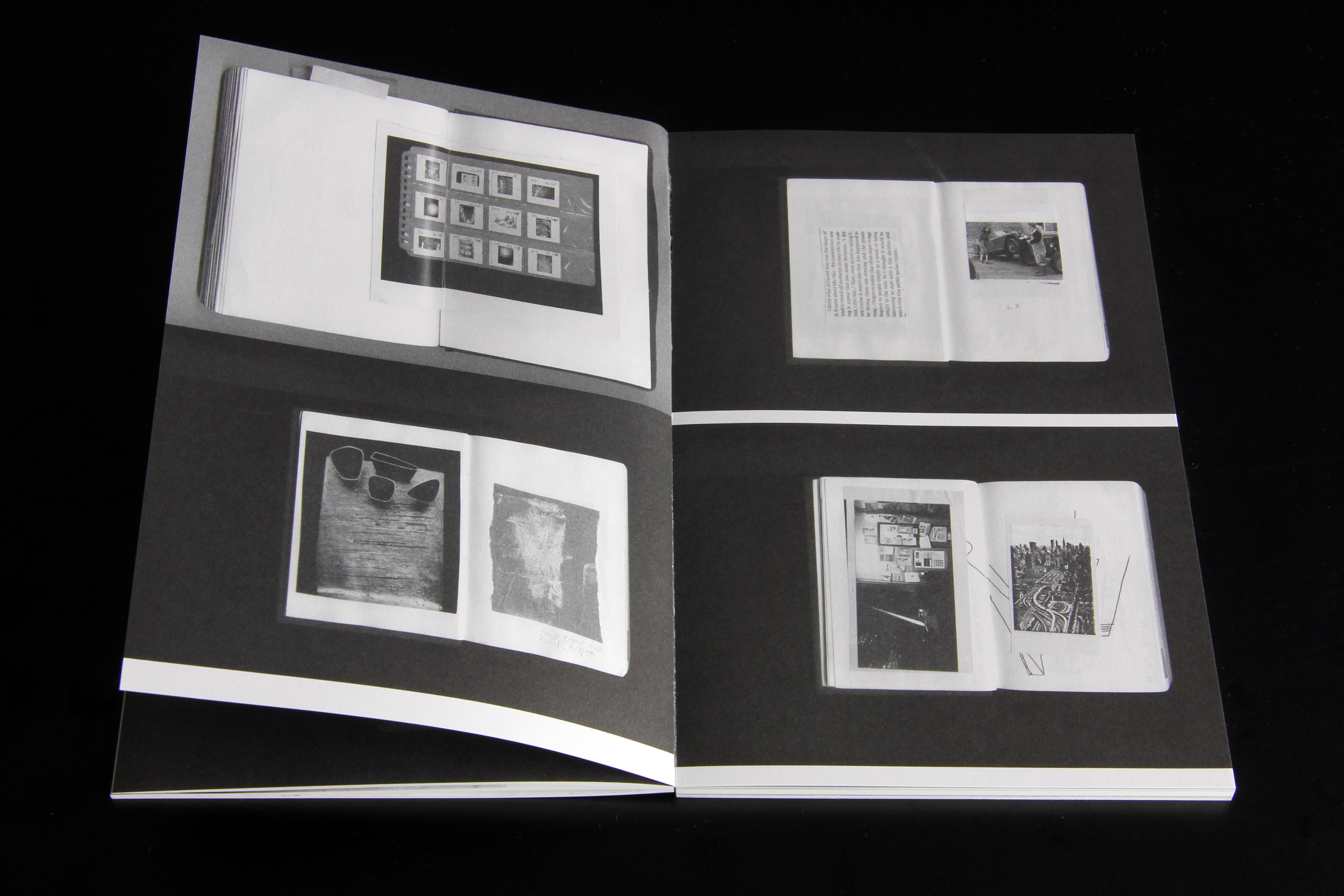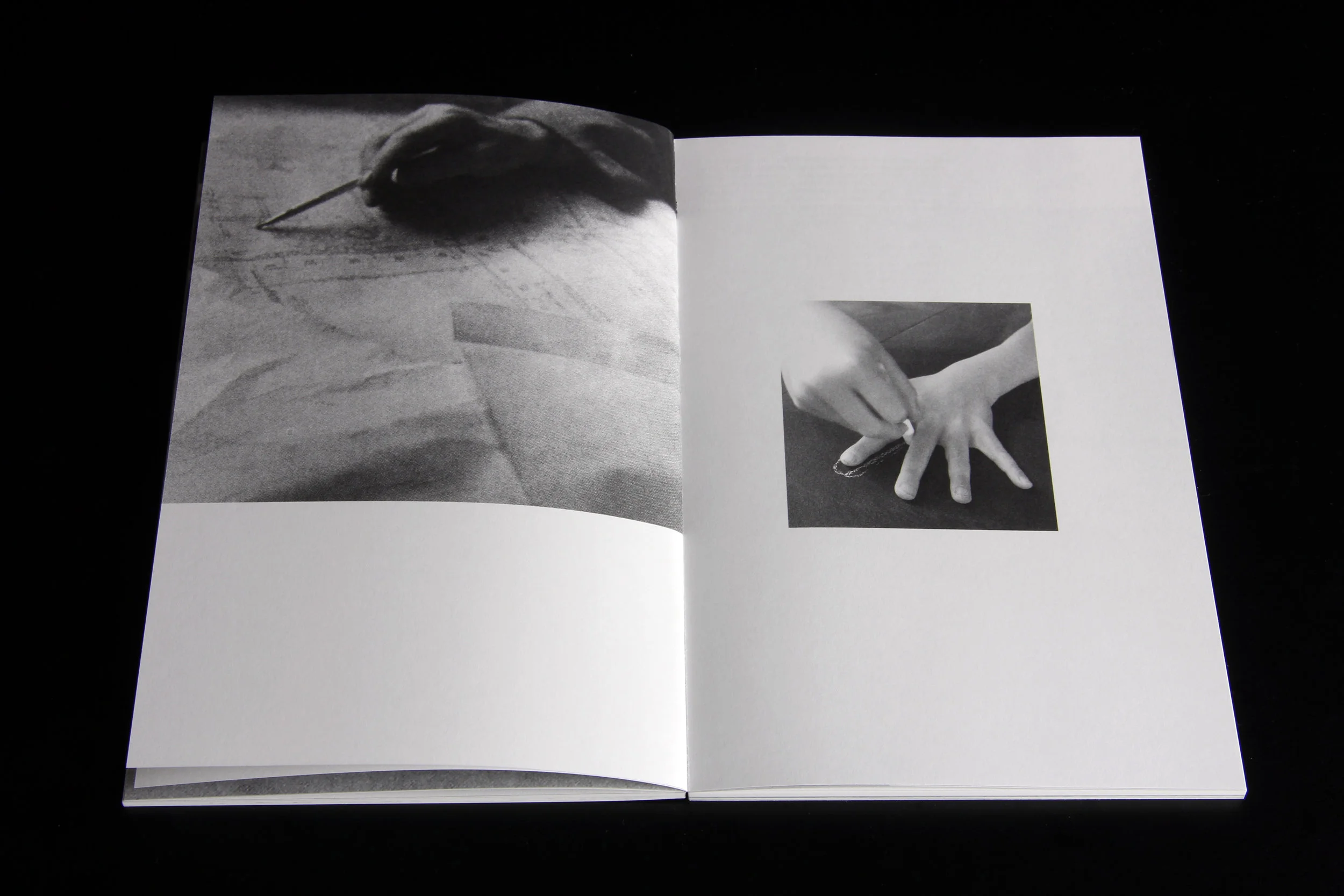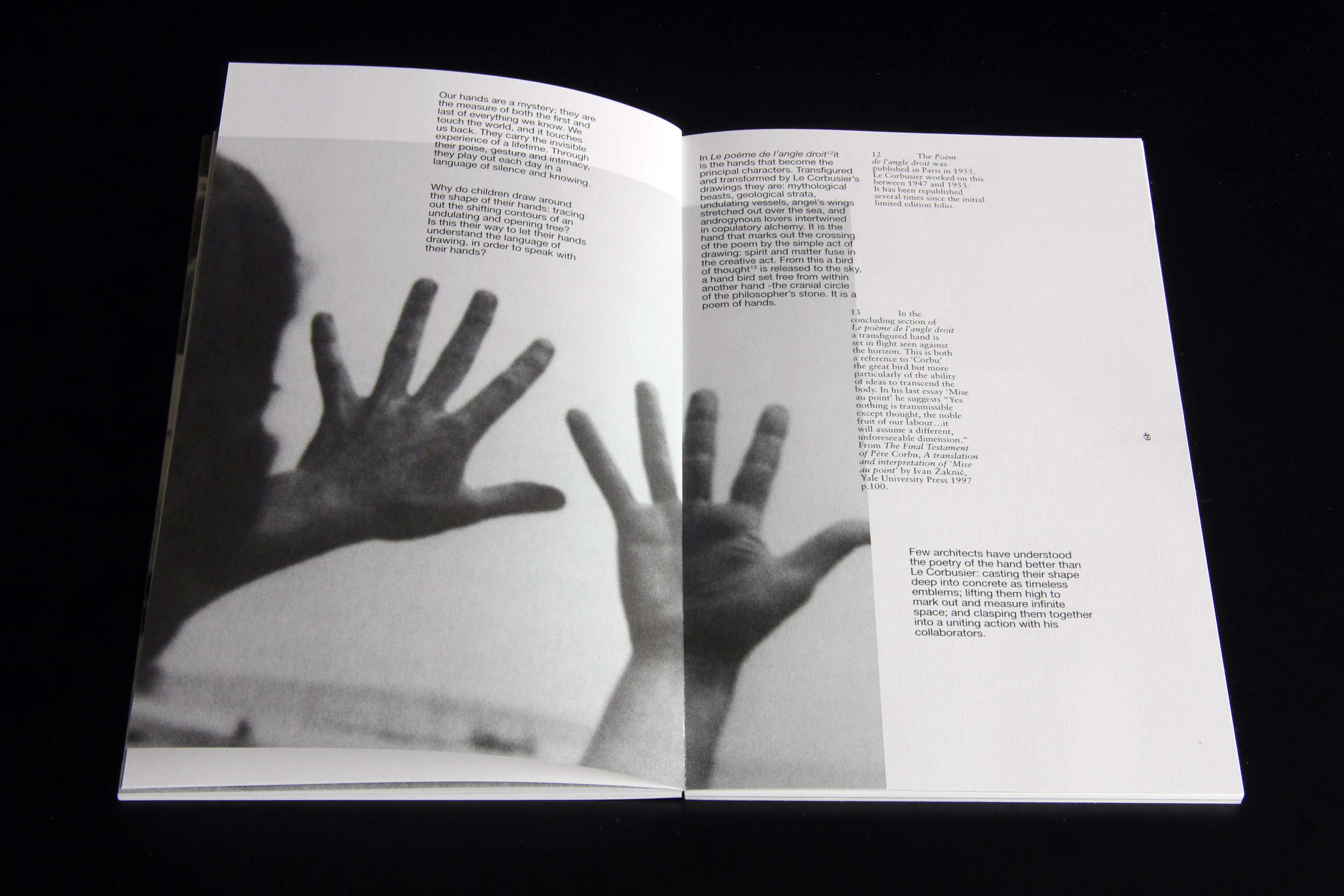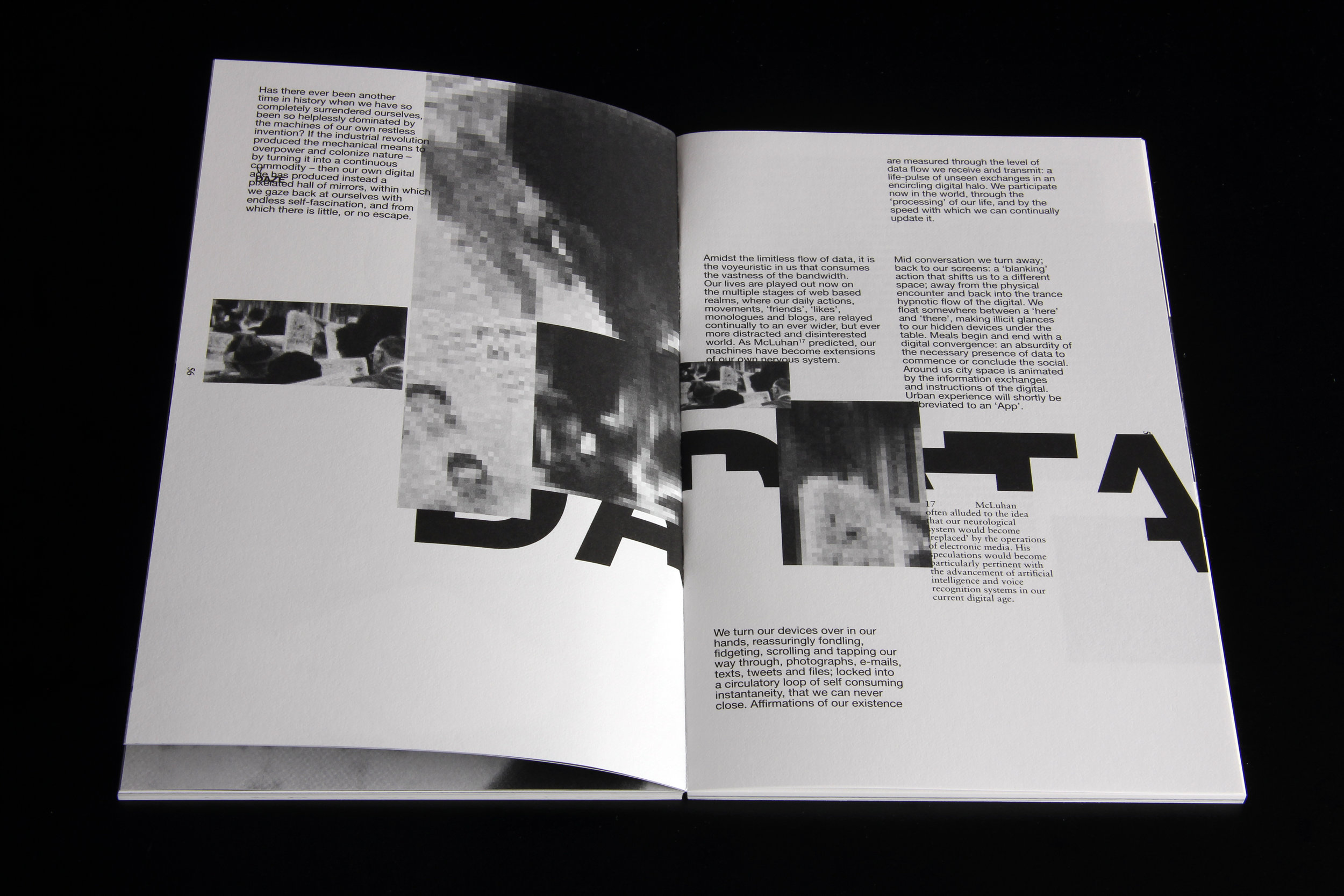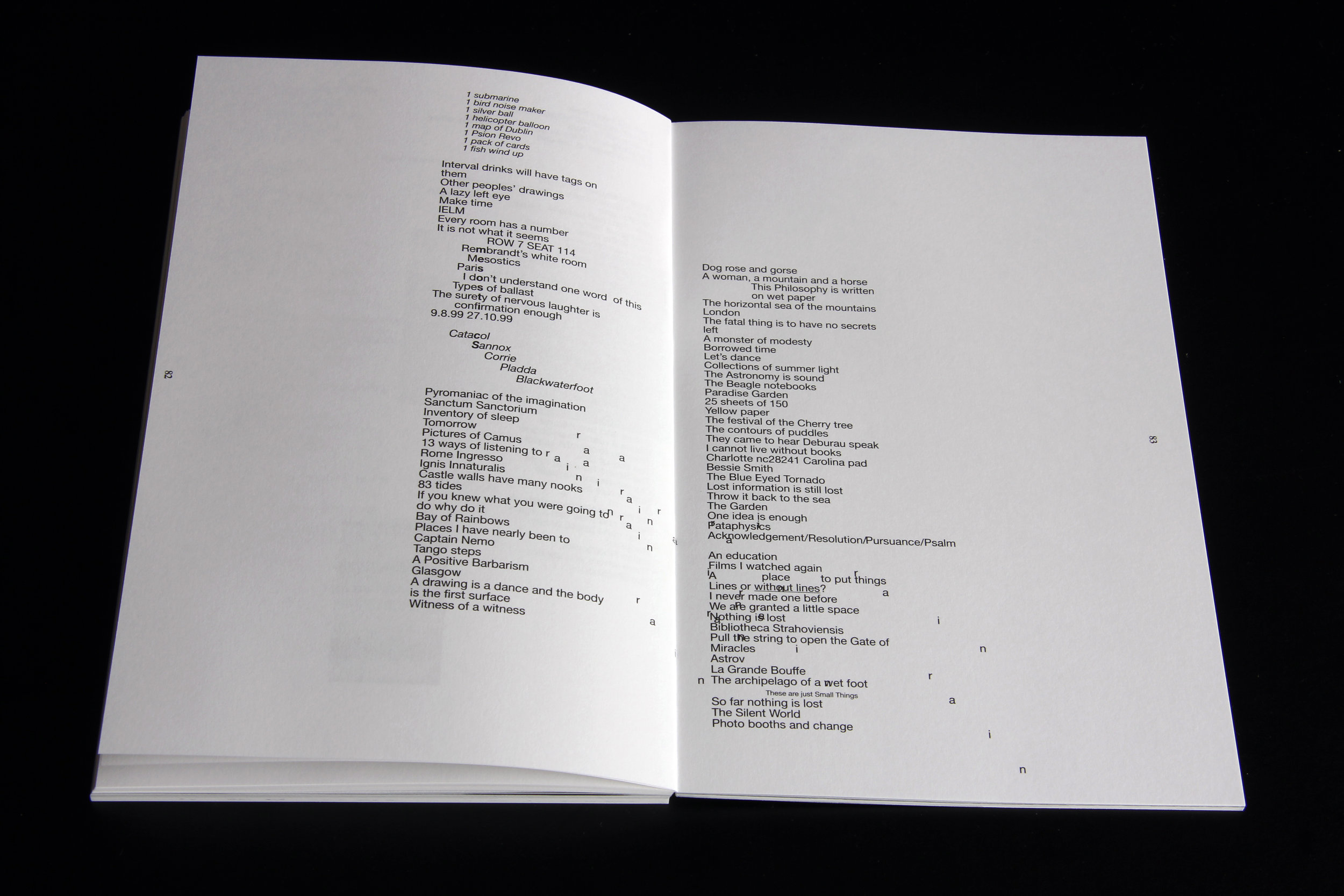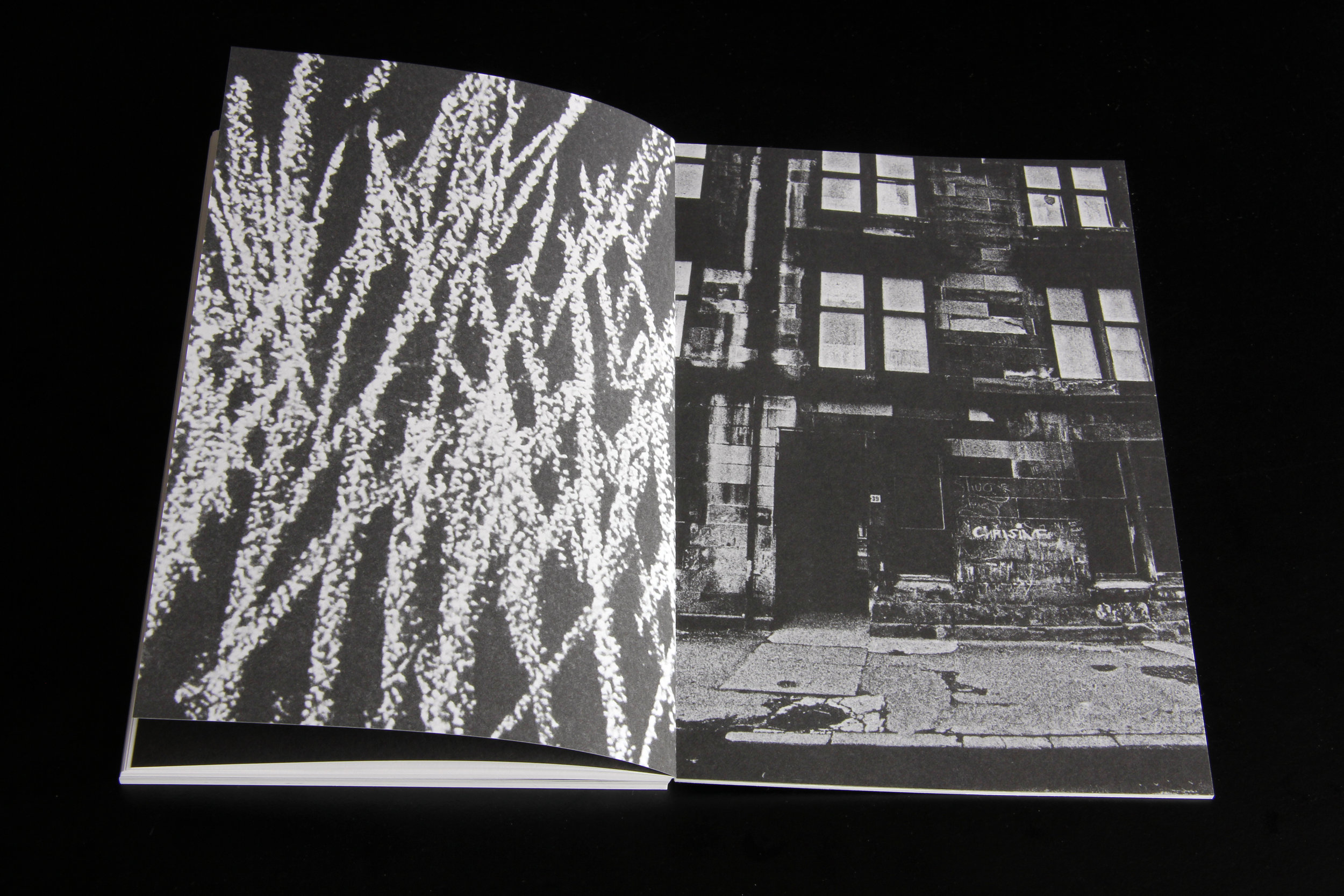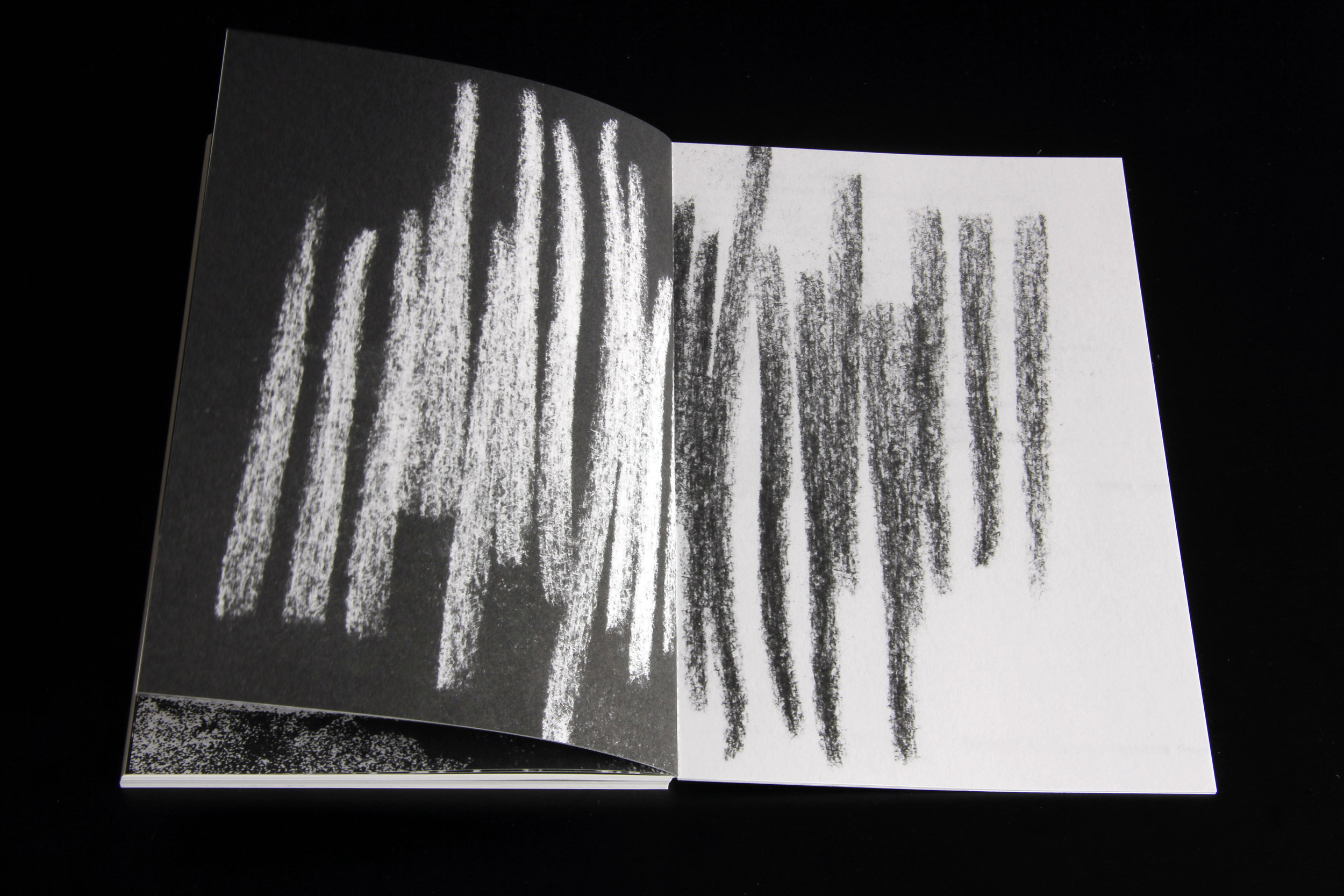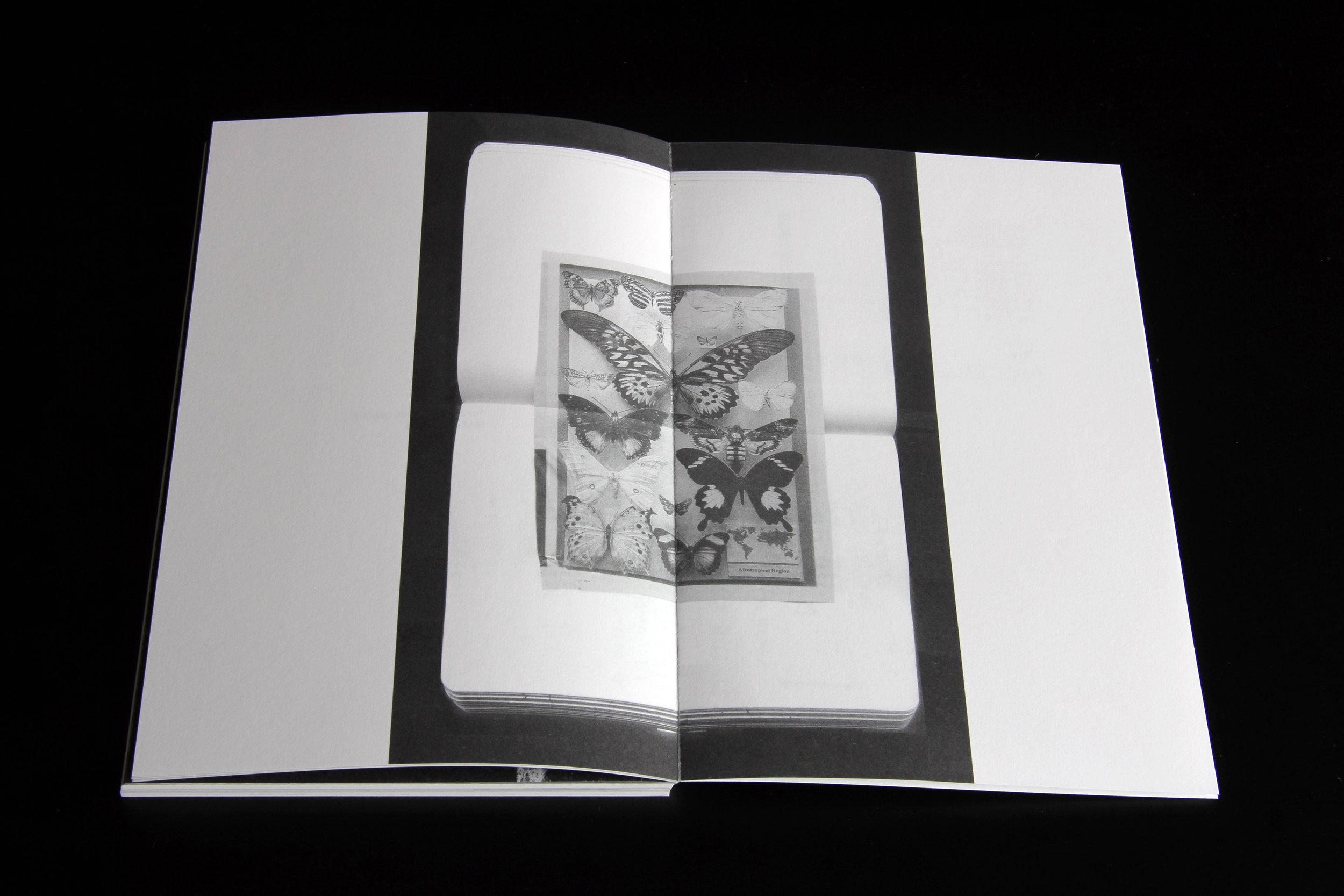REVIEW
Perspective magazine, December 2016
Notations edited by Clarke and Maybury and designed by Maybury is not easily described; ostensibly the culmination in bookset form of a series of initiatives, occasions, and exhibitions, all orchestrated by Clarke over the last number of years - research provoked by the mysteries of the private notebook, a murmur now finding a voice on pages.
Heuristic practice is the stimulation of interest as a means of further investigation; juxtaposition is a heuristic device notably exemplified in Aby Warburg’s Mnemosyne Atlas, Gerhard Richter’s Atlas, and Oswald Mathias Unger’s Morphologie: City Metaphors. Rather than being an exercise in scientific comparison, revelations are triggered by adjacency, by studied association, by serendipity, indeed by the exposure of the hoax of object/subject certainties that bedevil much research. Notations deftly makes adjacencies where none existed before; its counterpoising is between and across texts, pages, spreads, book, fonts, individuals, practices, and thoughts. Clarke and Maybury’s curated adjacencies derive meaning by collocation and provoked metaphor - the imagining or rethinking of one kind of thing in terms of another. Walter Benjamin wonderfully referred to metaphor as the means by which the oneness of the world is poetically brought about; such is the curatorial ambition of Clarke’s practice.
Seven books of memorable content, each exposed without cover, differently sized like children, with their own complexion, degrees of paleness, barely fitting in a hand-me-down box. The Grafton’s immersive pen work scaled up and down, seeping energy from charged pages; Seamus Lennon’s watchmaker’s arrangement of assembled components, balanced in space; McCullough Mulvin’s collocation of archaeology and proposal across spreads, line as lineage; O’Donnell and Tuomey’s overlays informed by their deep stacked antecedents; Michael Doherty exquisite draughtsmanship counterpoised against empty space, inviting imagined occupation; Nigel Peake’s playful beckonings into the competing rooms of his mental space, innocent mystery without threat; and Tom de Paor’s sensuous fixation on place and the delicious dilemma of its representation. So the books are beautifully crafted, tailored to their content, each could have existed separately, but they rub shoulders with each other - stacked cards in a box.
Clarke’s book is different; it has a title The White Table and a structure of prologue, eight sequential chapters and a coda. Indeed it has a deliberate message or more accurately messages - messages rather than lectures, but none the less profound; delicate comprehensions shared as you would with someone you love. Text, white space, black space, and image are used with effect and affect. The prose is sometimes poetry, sometimes field, sometimes line, sometimes absent. The thoughts are about our negotiation with the world around us, and that negotiation is essentially understood as physical or imagined as physical.
The book is clever, demanding, with message and media fused. The book is read with a quiet awe provoked by the depth and accuracy of Clarke’s observations delivered as they are with palpable honesty - an honesty beyond worthiness. Underlying all is an implicit joy in human presence, physical, memorised, and anticipated; a wonderful and dogged insistence on the depth of the world around us.
Clarke’s practice of architecture (and this is architecture) overtakes conventions of practice and research. Real knowledge exists on the edges of accepted epistemologies rather than in the market driven elaborations of orthodox scientific thought. Relevance is beginning to highlight the limitations of the cerebral abstraction of academic research; practice and profession are confused, the latter presuming to absorb the former. Research through doing, through practice, through experience, is Clarke’s vocation, and with Notations our understanding is advanced; advanced through a profound empathy for the human condition, our condition. This is but one stop on Clarke’s route; he is a pathfinder for the less sighted.
I was fortunate enough to be at the Dublin launch of Notations, perilously perched as I was above Clarke in the Irish Architectural Foundation’s square cone of a room. The intensity of the space was matched by Clarke’s enthused delivery of a personal prescience into what it is or might be to exist in this world. Notebooks figured of course but there was much, much more in the air, everyone knew. Clarke’s own haltingly honest engagement with the world resonated with our own equivalent stumblings, caught up as we are most of the time in our imagined busyness. I left grateful and altered.
Michael McGarry
Professor of Architecture
Queen’s University Belfast
